
OMNIA Penn
SPRING/SUMMER 2024
Solutions Sound Solutions Sound Solutions Catalysts for Basic Science 24 Seizing the Moment 28 Guardians of the Gallery 46 Online and on Point 36
Arts & Sciences researchers are turning to sound for answers on subjects from birdsong to music exposure. PAGE 16
Sound






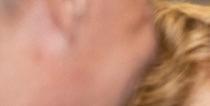
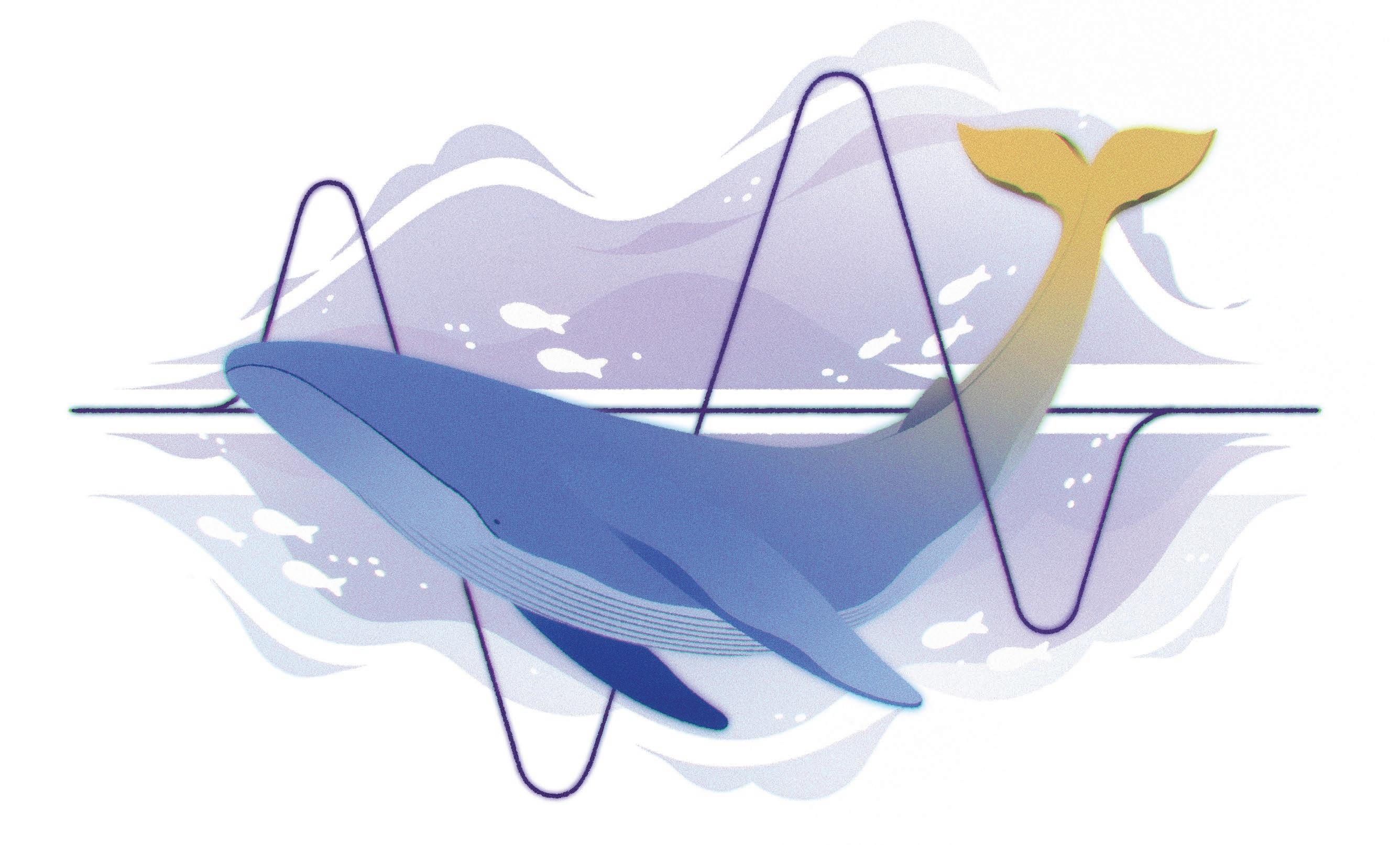






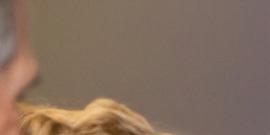













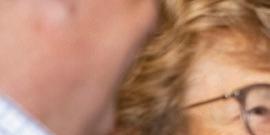


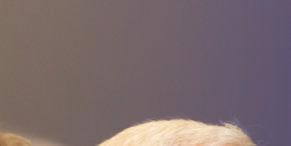





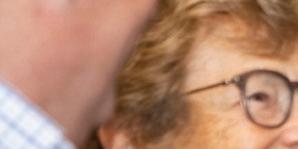








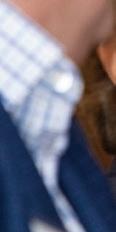

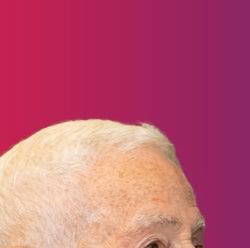


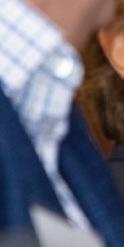
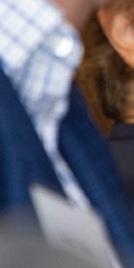





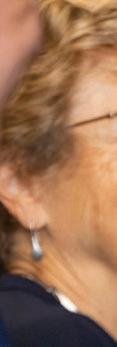






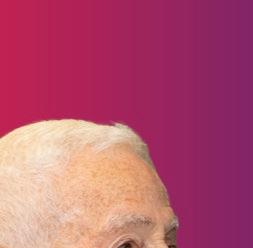





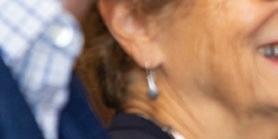
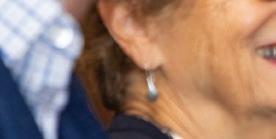


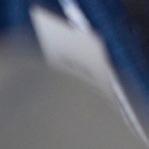

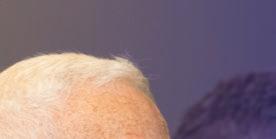
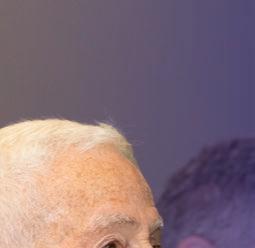

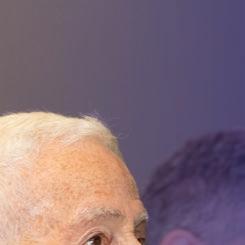

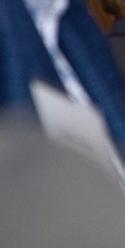








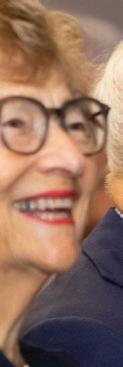

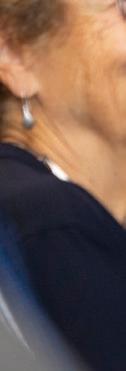






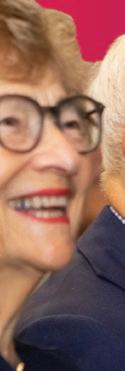
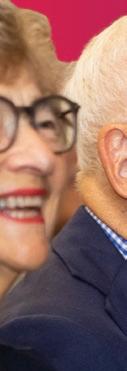
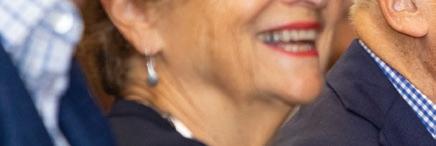

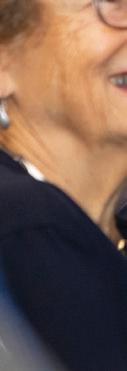











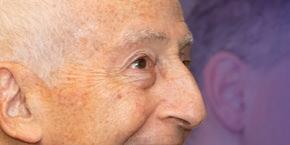



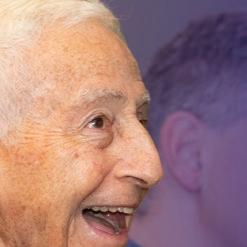
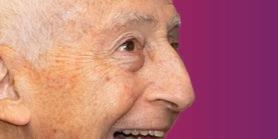





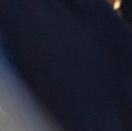



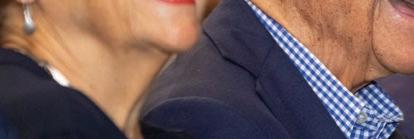





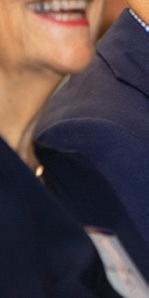



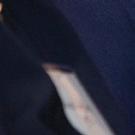


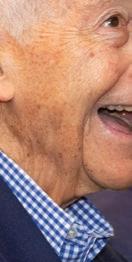

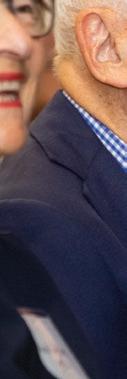

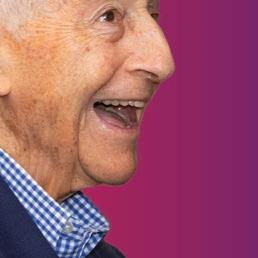

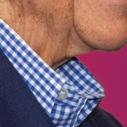






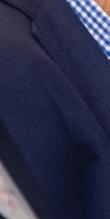






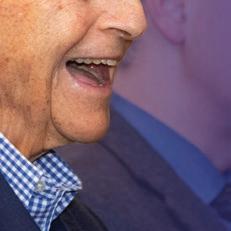



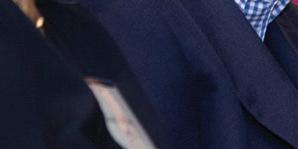



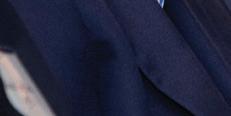











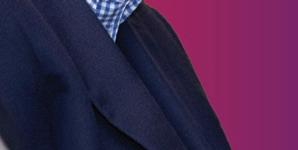










OMNIA | ALL THINGS PENN ARTS & SCIENCES 16 COVER STORY Sound Solutions Understanding the world by studying sound Lessons in Philosophy Teaching high schoolers to ponder 42 Addressing Tough Topics A Living the Hard Promise series recap 40 Just Right Four LPS online certificate experiences 36 Seizing the Moment The powerhouse that is Africana studies 28 Catalysts for Basic Science The enduring legacy of the Vageloses 24 Guardians of the Gallery Three alums on working in the art auction world 46 FEATURES
Omnia is published by the School of Arts & Sciences Office of Advancement
EDITORIAL OFFICES
School of Arts & Sciences
University of Pennsylvania
3600 Market Street, Suite 300 Philadelphia, PA 19104-3284
P: 215-746-1232
F: 215-573-2096
E: omnia-penn@sas.upenn.edu
STEVEN J. FLUHARTY
Dean, School of Arts & Sciences
LORAINE TERRELL
Executive Director of Communications
MICHELE W. BERGER
Editor
SUSAN AHLBORN
Associate Editor
JANE CARROLL
Staff Writer
LUSI KLIMENKO
Art Director
LUSI KLIMENKO
DREW NEALIS
KRISTINA PAGGIOLI
Designers
CHANGE OF ADDRESS
Alumni: Visit MyPenn, the Penn alumni community, at mypenn.upenn.edu. Non-alumni: Email Development and Alumni Records at record@ben.dev. upenn.edu or call 215-898-8136. The University of Pennsylvania values diversity and seeks talented students, faculty, and staff from diverse backgrounds. The University of Pennsylvania does not discriminate on the basis of race, color, sex, sexual orientation, gender identity, religion, creed, national or ethnic origin, citizenship status, age, disability, veteran status, or any other legally protected class status in the administration of its admissions, financial aid, educational or athletic programs, or other University-administered programs or in its employment practices. Questions or complaints regarding this policy should be directed to the Executive Director of the Office of Affirmative Action and Equal Opportunity Programs, Sansom Place East, 3600 Chestnut Street, Suite 228, Philadelphia, PA 19104-6106; or 215-898-6993 (Voice) or 215-898-7803 (TDD).
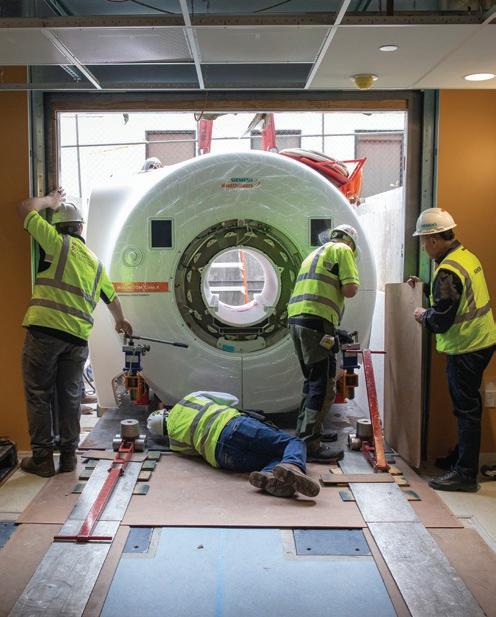










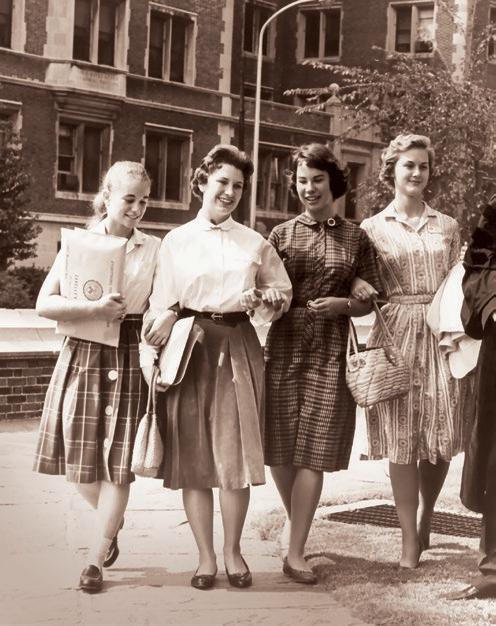

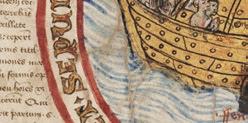


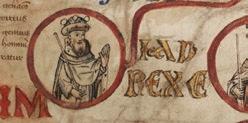

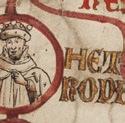

2024 12 OMNIA 101
SPRING/SUMMER
On the value of polling in 2024
Cover Illustration: MAGGIE CHIANG SPRING/SUMMER 2024 4 SCHOOL NEWS An fMRI machine, awards, more LAST LOOK Translating a Medieval manuscript 65 ORIGIN STORIES The path of professor Ayako Kano 62 ONLINE CONTENT Bonus multimedia content 64 SECTIONS 52 STUDENT SPOTLIGHT Violins, Penn Grad Talks, and more 58 MOVERS AND QUAKERS A College for Women scrapbook 14 IN THE CLASSROOM Learning history via rivers CONTENTS 8 FINDINGS Notable faculty research and books
Affirming Our Purpose

Spring at the School of Arts and Sciences is typically a time of celebration, when my colleagues and I can look back at the year and appreciate the people, projects, and accomplishments that define us as a great institution. This year is no exception: We have achieved much, both individually and as a School. We started 2024 with the announcement of a transformative gift—the largest ever in the School’s history—from P. Roy and Diana Vagelos (p. 24). Their generosity and vision will be shaping the future of science research and education at Penn Arts & Sciences for generations to come.
Our faculty have distinguished themselves through a series of honors, ranging from teaching awards to appointments to prestigious academic societies, even a Pulitzer (p. 7). They continue to produce scholarship that is shaping conversations within and beyond the academy. And our students continue to demonstrate potential that is truly inspiring.
But there is no looking back at the past year without acknowledging the profound impact on our community of the horrific Hamas attack on Israel and the continuing war in Gaza. We witnessed reactions to world events descend on our campus, along with campuses across the country and globally, in a way that has not been seen in more than a generation.
Why have campuses become ground zero for unrest? In no small part, it stems from our commitment to hearing diverse voices, and our conviction that it is the job of institutions of higher learning to uncover truth, even when the questions get hard. We aspire to a high standard of open discourse—a standard that, at times, tests us. But while these conversations are hard, it has never been more clear that opening ourselves to challenging discourse is our greatest strength,
where our ability to advance and create knowledge is rooted.
Our vibrant campus life this spring is a testament to how our community values discourse, in events that brought us together on a range of topics. Our Living the Hard Promise series (p. 40) has continued, including a series of 60-Second Lectures exploring related themes and an Alumni Weekend Hard Promise event featuring Paul Sniegowski and Beth Wenger. An audience of 1,500 people listened to Margaret Atwood’s discussion with Professor Emily Wilson during the annual Stephen A. Levin Family Dean’s Forum (p. 6). Alumni came to hear faculty discuss climate and sustainability at our Ben Talks events in New York and California (p. 57).
In May we closed out this academic year at our School’s three graduation ceremonies—celebrating the accomplishments of nearly 400 graduate students; 500 lifelong learners from the College of Liberal & Professional Studies; and more than 1,300 undergraduates, representing some 50 majors, from the College. Despite a year of hard discussions, we all came together as a community for these celebrations. As we sent our graduates out into a complex world, where there are many difficult questions and few simple answers, we took away with us an affirmation of our purpose and the fundamental importance of our work. I look forward to continuing engagement and discussion with these graduates, with all our alumni, and with the rest of us on campus as we return in fall and begin again.
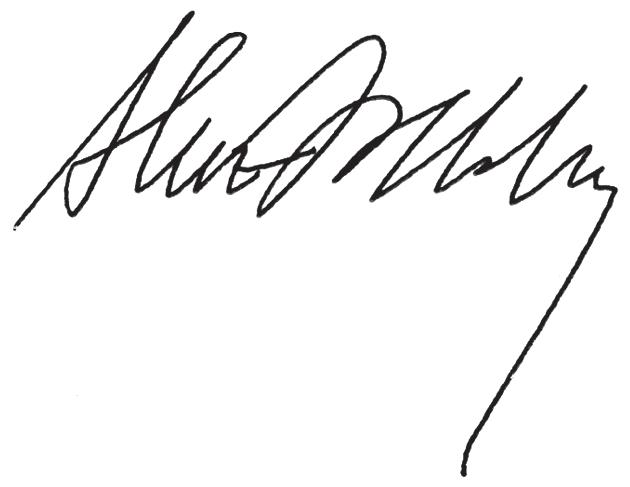
Steven J. Fluharty, C’79, GR’81, PAR’07, Dean and Thomas S. Gates, Jr. Professor of Psychology, Pharmacology, and Neuroscience
Steven J. Fluharty, C’79, GR’81, Psychology,
OMNIA | ALL THINGS PENN ARTS & SCIENCES
DEAN’S MESSAGE
Lisa J. Godfrey
00FFFFFF 2
Illustration by Kate Miraglia


ITaking Your Feedback to Heart














Omnia and






want to start by thanking the more than 600 of you who responded to our reader survey from the Fall/Winter 2023 issue, providing us with your opinions about thoughts for our future coverage. We’ve taken the feedback to heart, contemplating ways we can incorporate into our storytelling what you’ve told us you want to read.


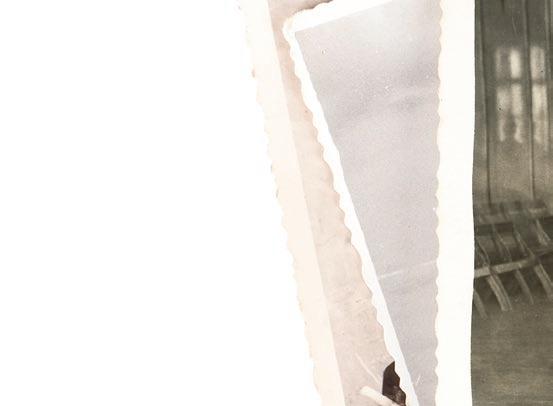
One request we could tackle immediately was for more pieces about Penn Arts & Sciences alums: In this issue, you’ll see a full Movers & Quakers section, which combines existing features with some new content. It starts on p. 56 with our Penn at Work profile of Sharon Kim, C’05, of the Mount Airy Community Development Corporation. We also showcase several of the events that took place since the fall (p. 57) and include a photo essay highlighting student life in the College of Liberal Arts for Women (p. 58), which merged with what is today’s School of Arts & Sciences 50 years ago. Beyond that, we have a feature, “Guardians of the Gallery” (p. 46), about three alums in the art auction world. They are using their platforms to champion underrepresented artists, start conversations about art and antiquities reparations, and enrich the narrative around objects.

















Development Corporation. We also showcase since


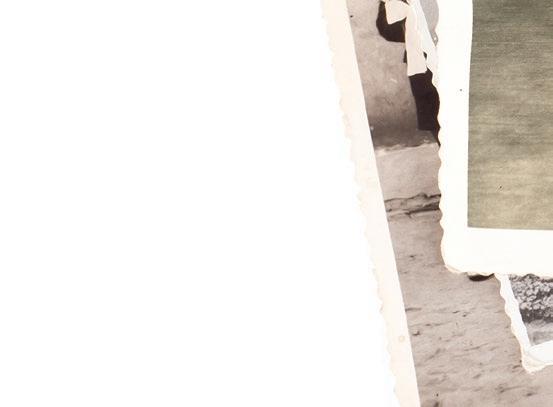


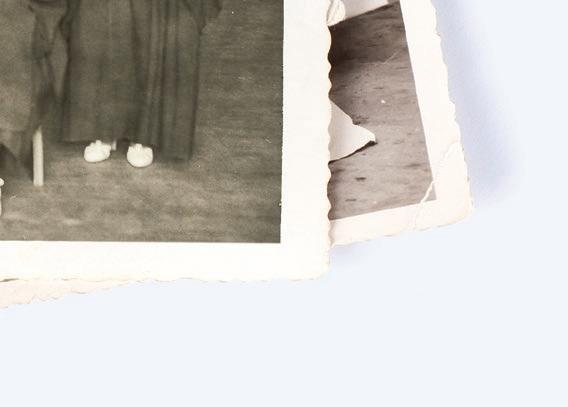


BEHIND THE COVER




Other features in this issue include our cover story, “Sound Solutions” (p. 16), about researchers turning to sound to answer questions on subjects like birdsong or the benefits of music exposure; “Seizing the Moment” (p. 28), which shines a light on Africana studies at Penn and its emergence as a leader in the field; “Addressing Tough Topics” (p. 40) about the Living the Hard Promise series, the chance for frank conversation about subjects like free speech on campuses and the role of universities; and “Just Right” (p. 36), about the certificate program from the College of Liberal & Professional Studies, which has awarded 468 certificates since it began in 2018. Today, 556 students are taking courses in more than a dozen programs. Plus, in “Catalysts for Basic Science” (p. 24) we look back at the contributions of P. Roy Vagelos, C’50, PAR’90, HON’99, and Diana Vagelos, PAR’90, who recently gave Penn Arts & Sciences
$83.9 million to fund science initiatives—the largest single gift ever made to the School.
$83.9 million to fund science initiatives—the
There’s much to digest in other sections of Omnia, too. “Omnia 101” (p. 12) looks into what polling can actually tell us in this 2024 Presidential election year. We’ve added a Faculty Bookshelf (p. 9) and a Research Roundup (p. 11), and our Student Spotlight section, which begins on p. 52, covers a Ph.D. student studying violinmaking and an undergraduate using linguistic models to analyze conversations, plus the winners of the Penn Grad Talks. And for the first time, we brought our long-running digital series, “Origin Stories” into the pages of the magazine (p. 62), focusing on the path Ayako Kano, a professor in the Department of East Asian Languages and Civilizations, took from a childhood in Japan—by way of Germany and New York—to Penn.
We’d always love to hear what you think, no reader survey required.
 Michele W. Berger, Editor
Michele W. Berger, Editor
Top right: On June 20, 1934, the College of Liberal Arts for Women graduated its inaugural 11 students. Five came from Philadelphia, with the farthest—one Mary Ann Fees—hailing from some 300 miles away in Kane, Pennsylvania.
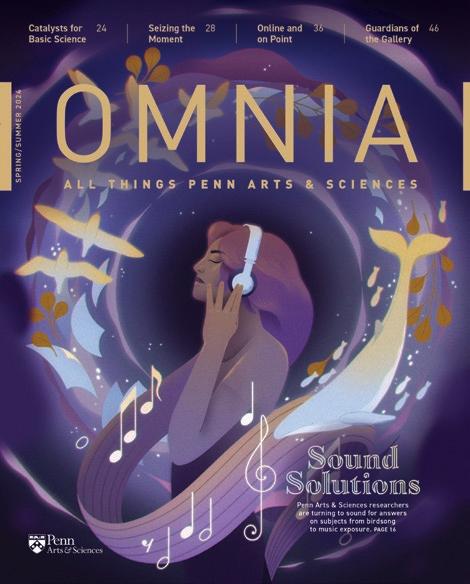

asked
to come up with a way to visually capture the idea of sound, the subject of Laura Dattaro’s cover story for this issue. “My creative journey began with unique challenges,” Chiang said. “The experience of perceiving the world through sound is inherently non-visual. Thus, I crafted this piece to offer viewers a glimpse into the auditory world, using visual elements that mirror the essence of sound.” —Drew Nealis, Graphic Designer
SPRING/SUMMER 2024
EDITOR’S NOTE
We
illustrator Maggie Chiang
3
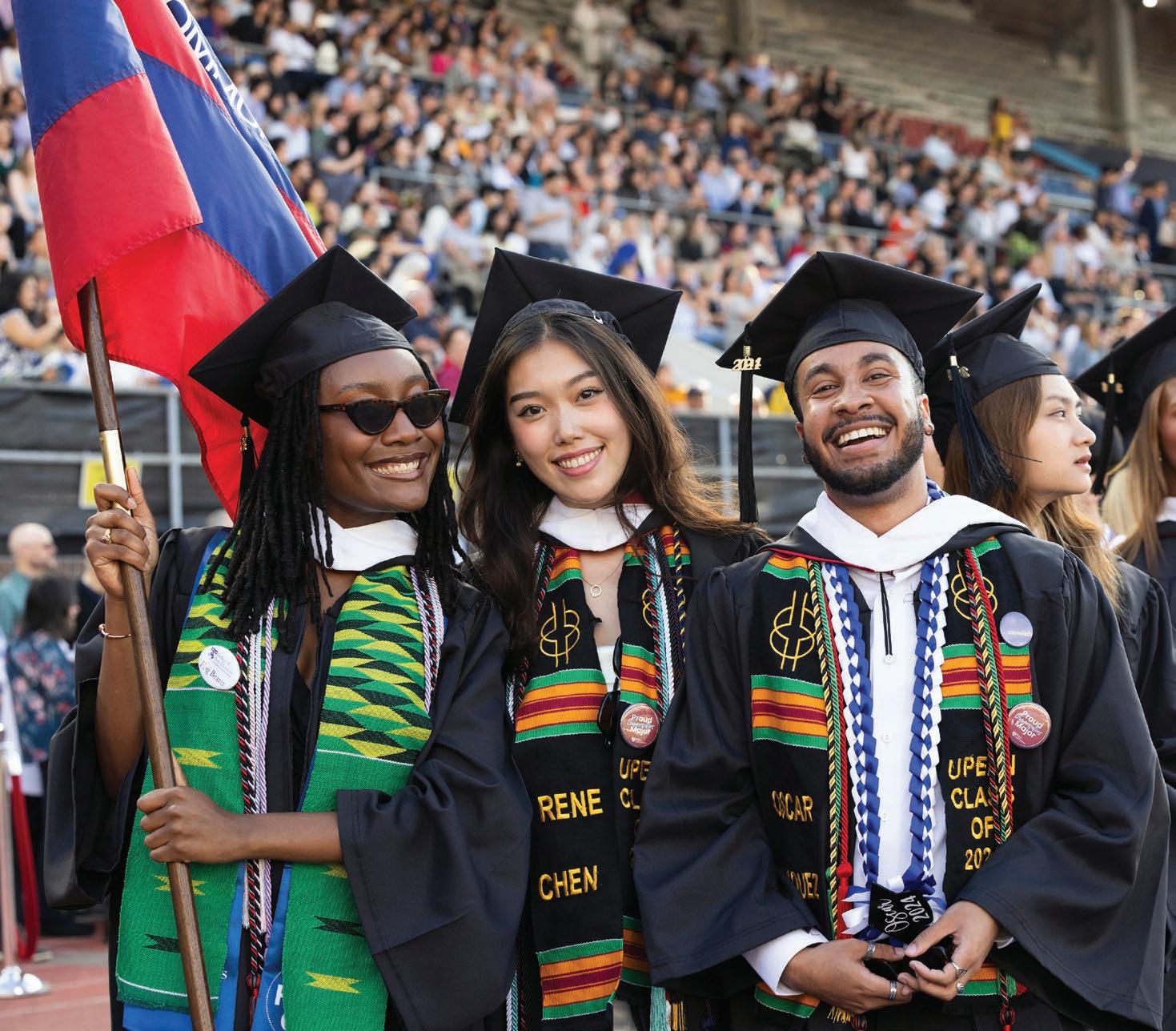
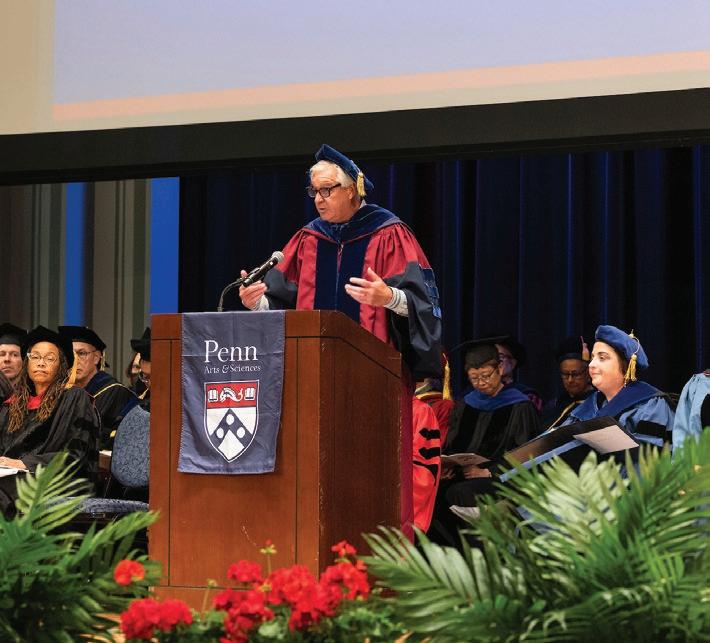

A Graduation Celebration for Penn Arts & Sciences
The College of Arts & Sciences Graduation Ceremony for the Class of 2024 was held on May 19 at Franklin Field. The featured speaker, James “Jim” Johnson, C’74, L’77, is a member of the School of Arts and Sciences Board of Advisors and the inaugural chair of the College External Advisory Board.
Johnson served as General Counsel of Loop Capital Markets, LLC, an investment banking firm located in Chicago, from 2010 until his retirement in 2014. Prior to that, he served as Vice President, Corporate Secretary, and Assistant General Counsel of the Boeing Company from 1998 to 2009. Johnson earned a B.A. in history and a J.D. from Penn, and he returned in 2021 for a certificate in climate change from the College of Liberal & Professional Studies.
Student speaker Katie Volpert, C’24, majored in philosophy and political science and minored in survey research and data analytics. As president and captain of Penn Mock Trial, she won 15 outstanding attorney awards. After graduation, Volpert will work as a deputy clerk at the General District Court in Charlottesville, Virginia, before applying to law school.
The Penn Arts & Sciences Graduate Division held its ceremony on May 17 in Irvine Auditorium, with Dorothy Roberts, George A. Weiss University Professor of Law and Sociology, as the featured speaker. Roberts, an internationally acclaimed scholar, public intellectual, and social justice activist, is also founding director of the Penn
Program on Race, Science, & Society.
Student speakers for the Graduate Division Ceremony included Marielle Ong, GR’24 (Math), Caroline Hodge, GR’24 (Anthropology), and Daniel Morales-Armstrong, GR’24 (History and Africana Studies).
On May 18, the College of Liberal & Professional Studies celebrated its graduating class at the Kimmel Center. Michael Weisberg, Bess W. Heyman President’s Distinguished Professor and Chair of Philosophy at Penn, gave the address. Weisberg, a philosophy of science scholar, is also director of the Galápagos Education and Research Alliance, interim director of Perry World House, and a senior negotiator at United Nations Climate Conferences.
OMNIA | ALL THINGS PENN ARTS & SCIENCES Lisa J. Godfrey; Edward Savaria SCHOOL NEWS
4
(Clockwise from left) More than 1,300 students, including Communication majors Crystal Marshall, C’24, Rene Chen, C’24, and Oscar Vasquez, C’24, received degrees from the College of Arts and Sciences on Sunday, May 19. Ceremonies for the Graduate Division and the School of Liberal & Professional Studies took place on the Friday and Saturday prior, with Dean Fluharty (top right) speaking at all three celebrations.

Paul Sniegowski Named President of Earlham College
Paul Sniegowski, Stephen A. Levin Family Dean of the College of Arts and Sciences and Professor of Biology, will leave Penn this summer to assume the presidency of Earlham College in Richmond, Indiana, as of August 1.
Sniegowski has headed the undergraduate programs of the College since 2017. “His achievements in that role, and his commitment to educational excellence throughout his 27 years at Penn, make clear why Earlham has sought out his leadership,” says Steven J. Fluharty, Dean and Thomas S. Gates, Jr. Professor of Psychology, Pharmacology, and Neuroscience. “As College Dean, Paul has ensured that the undergraduate curriculum is always evolving, adding new minors and this year initiating a review of our longstanding General Requirement.”
In addition, Sniegowski has promoted inclusion in the undergraduate learning experience in a number of ways: He has led several inclusive teaching initiatives in the College, has been a strong partner in Penn’s programs for first-generation, lowincome (FGLI) students, and established a College advisory board for FGLI students. During the COVID-19 pandemic, Sniegowski facilitated moving the entire College quickly to online instruction, engaging with faculty, students, and staff to ensure the continued quality of instruction in an unprecedented time.
“Being named to a college presidency is a tremendous honor, and Paul’s appointment at Earlham is a well-deserved tribute to his devotion to student learning and to liberal arts education,” Fluharty adds. “He will be greatly missed at Penn.”
In Recognition of Outstanding Teaching
Each year, the University and the School of Arts & Sciences recognize faculty, lecturers, and graduate students for their exemplary teaching. The 2024 honorees include 21 people from 11 departments and programs.
At the University level, five Penn Arts & Sciences faculty received recognition:
Christian R. and Mary F. Lindback Award for Distinguished Teaching
Gary Bernstein, Reese W. Flower Professor of Astronomy and Astrophysics
David Wallace, Judith Rodin Professor of English
Provost’s Award for Distinguished Ph.D. Teaching and Mentoring
Holly Pittman, Bok Family Professor in the Humanities
Arjun Yodh, James M. Skinner Professor of Science
Provost’s Award for Teaching Excellence by Non-Standing Faculty
Judith N. Currano, Head, Chemistry Library
In addition, Penn Arts & Sciences recognized the following faculty, who were celebrated at a school-wide reception on May 2:
Ira H. Abrams
Memorial Award for Distinguished Teaching
Charles Kane, Christopher H. Browne Distinguished Professor of Physics
Michael Weisberg, Bess W. Heyman President’s Distinguished Professor of Philosophy
Dennis M. DeTurck Award for Innovation in Teaching
Simon Richter, Class of 1965 Term Professor of German
Dean’s Award for Mentorship of Undergraduate Research
Melissa Wilde, Professor of Sociology
Dean’s Award for Distinguished Teaching by an Assistant Professor
Julia Alekseyeva, Assistant Professor of English
Dean’s Award for Distinguished Teaching by Affiliated Faculty
Michael Kane, Senior Lecturer, Neuroscience
Jenine Maeyer, Senior Lecturer and Director, General Chemistry Laboratory
Liberal and Professional Studies Award for Distinguished Teaching in Undergraduate and Post-Baccalaureate Programs
Virginia Millar, Faculty, Penn LPS Online Certificate in Applied Positive Psychology
Liberal and Professional Studies Award for Distinguished Teaching in Professional Graduate Programs
Sarah Willig, Advisor and Lecturer, Master of Environmental Studies
Dean’s Award for Distinguished Teaching by Graduate Students
Meredith Hacking, Francophone, Italian, and Germanic Studies
Matty Hemming, English
Tessa Huttenlocher, Sociology
Ethan Plaue, English
Daniel Shapiro, Political Science
Derek Yang, Chemistry
Youngbin Yoon, Philosophy
SPRING/SUMMER 2024 SCHOOL NEWS
Brooke Sietinsons 5
Paul Sniegowski, Stephen A. Levin Family Dean of the College of Arts and Sciences and Professor of Biology
Students Honored as 2024 Dean’s Scholars
Penn Arts & Sciences named 20 undergraduate and graduate students as this year’s Dean’s Scholars, a recognition bestowed annually on students who exhibit exceptional academic performance and intellectual promise. They were celebrated at the Stephen A. Levin Family Dean’s Forum on April 17.
College of Arts & Sciences
Natascha Barac, C’23, English and Physics
Rema Bhat, C’24, Political Science
Sophie Faircloth, C’24, Linguistics, submatriculant in Linguistics
Andreas Ghosh, C’24, ENG’24, Vagelos Integrated Program in Energy Research
Sophie Mwaisela, C’24, History
William (Zijian) Niu, C’24, Biochemistry, Chemistry, and Biophysics
Liam Phillips, C’24, Russian and East European Studies and Comparative Literature
William Stewart, C’25, Music Yijian (Davie) Zhou, C’24, Philosophy and Psychology, submatriculant in Philosophy
College of Liberal and Professional Studies –Undergraduate Program
Joe Daniel Barreto, LPS’23, Bachelor of Applied Arts and Sciences
College of Liberal and Professional Studies –Professional Master’s Programs
Abigail P. Blyler, LPS’24, Master of Applied Positive Psychology
Graduate Division –Doctoral Programs
Adwaita Banerjee, Anthropology
Charlie Cummings, Physics and Astronomy
Cianna Z. Jackson, Classical Studies
Ryann Michael Perez, Chemistry
Rashi Sabherwal, Political Science
Timmy Straw, Comparative Literature and Literary Theory
Elena Gayle van Stee, Sociology
Christine Soh Yue, Linguistics
Oscar Qiu Jun Zheng, East Asian Languages and Civilizations

with Emily
College for Women
1963 Term Professor in the
in the Department of Classical Studies. In front of an audience of 1,500 people—some 900 in Irvine
,
for
styles, how to decide which narrative voice to use, feminism, revisiting works decades
,
OMNIA | ALL THINGS PENN ARTS & SCIENCES
Lisa J. Godfrey
SCHOOL NEWS
The 2024 Stephen A. Levin Family Dean’s Forum featured acclaimed author Margaret Atwood, in conversation
Wilson,
Class of
Humanities
Auditorium and 600 online—the two discussed writing
later, The Odyssey
and more. Atwood, best known
her dystopian classic The Handmaid’s Tale
has written more than 50 books during a career spanning six decades. Wilson won praise for her translation of Homer’s The Iliad, which published in 2023, and The Odyssey, which published in 2018.
6
Pushing the Boundaries of Human Brain Imaging


To study the human brain, really study it, and its relationship to the human mind, relatively little compares to using functional magnetic resonance imaging (fMRI), according to Joseph W. Kable, Jean-Marie Kneeley President’s Distinguished Professor of Psychology and Marketing and director of MindCORE, Penn’s hub for the integrative study of the mind. “fMRI is a work-horse technology for trying to understand the relationship between the human brain and behavior.”
As of this past May, MindCORE has in its toolkit its very own fMRI machine, the centerpiece of the new MindCORE Neuroimaging Facility established under the Mapping the Mind goal outlined in the Penn Arts & Sciences strategic plan.
The machine, a MAGNETOM Cima.X 3 Tesla magnetic resonance imaging wholebody scanner, received FDA approval in early 2024. It’s the newest fMRI iteration from the company Siemens Healthineers and offers incredibly high-resolution images quickly, with a unique GEMINI
gradient coil system that makes visible previously hidden underlying structures.
“The goal here is to provide access to the resource for a large community of people” across the University, Kable says.
Bringing the magnet to MindCORE has been several years in the making. Excited conversations began in 2019, but then the pandemic, coupled with the desire to wait for the “next generation” of fMRI, stalled the plans. Once FDA clearance came through, the installation itself was its own undertaking, says Andrew Jones, Engineering Projects Manager in the School of Arts & Sciences’ Facilities Planning and Operations.
“The space to hold the fMRI is underground, so we dug a pit outside of the building. It’s a concrete vault,” explains Jones, who oversaw the project. “Because these machines are so heavy, you often put them on the ground floor of whatever building they’re in. Sometimes you have to get creative in how to get them there.”


Tyshawn


Sorey Wins Pulitzer Prize in Music
Presidential Assistant Professor of Music Tyshawn Sorey, a multiinstrumentalist and composer who has performed around the world, won the 2024 Pulitzer Prize in Music for “Adagio (For Wadada Leo Smith).” The saxophone concerto premiered on March 16, 2023, at Atlanta Symphony Hall. In 2023, Sorey’s composition “Monochromatic Light (Afterlife)” was a finalist for a Pulitzer Prize in the same category.
In this case, that meant using a crane to lift and lower the fMRI into the room—one where the floor had been isolated from everything around it to prevent vibrations from affecting the machine’s functionality—then sealing the space from above. Should the machine need future servicing or updating, the “lid” should allow for easier access, Jones says. All told, the install took three weeks.
Penn is one of just a few universities with such a machine strictly for this kind of research. “The time had come for Penn to have a facility dedicated to basic research on the human brain,” says Kable.
Because the work of many MindCORE researchers includes children, there are plans to purchase a mock MRI to acquaint these youngest of study subjects with the technology. MindCORE also hired an executive director of the new facility, Brock Kirwan, who began May 1. “Our researchers are eager to use this tool,” Kable says, “to push the boundaries of human brain imaging.”
—MICHELE W. BERGER
SPRING/SUMMER 2024
SCHOOL NEWS
Brooke Sietinsons
7
In April, the new fMRI machine at Pennovation Works was lifted and lowered by crane into the Pennovation Lab building.

Bob Dylan as Modern-Day Prophet
In his new book, political theorist Jeffrey Green takes a unique view of the famous musician.
BY MATT GELB

Bob Dylan was just 22 when the Emergency Civil Liberties Union recognized him with the Tom Paine Award for his contributions to social justice. His activism in the progressive causes of the time—December 1963— was unmistakable. But as Dylan accepted the award, he ranted against those in attendance. He mocked them and disavowed politics, calling it “trivial.” He was subsequently booed off the stage.
A few months later, Dylan wrote a song called “My Back Pages,” which laid bare his internal conflict. “Fearing not I’d become my enemy / in the instant that I preach,” Dylan sang. He was testifying to the notion that individual freedom opposes social justice, a clash central to Jeffrey Green’s new book, Bob Dylan: Prophet Without God
Green, a professor of political science and director of Penn’s Andrea Mitchell Center for the Study of Democracy, spent eight years analyzing Dylan’s words from a political theorist’s perspective. He finds that Dylan is a modern-day prophet of a special kind: “a prophet of diremption,” in Green’s words. Or, metaphorically, a prophet without God.
“He inherits three values,” Green says. “He speaks in his music and in his statements to issues of individual freedom, to social
justice, to adherence to God. But he’s at his prophetically most distinct when he testifies to the collision between these values, and then derives some ethical consequences from those collisions.”
Green says this makes Dylan an unusual visionary—not a prophet of salvation, telling people what to do or what direction to follow, but rather a prophet constantly dealing with those three values and never solving them.
“He was affiliated with the left, but then he withdraws and owns it and sings it,” Green says. “He doesn’t say, ‘I’m now a conservative’ or ‘I don’t actually have any moral obligation.’ He says, ‘I recognize those things, but I also have a competing desire to do what I want. To be free.’
And I find that unusual in the history of political thought.”
In three sections of the book, Green traces Dylan’s evolution: his rebelling against the mid-1960s civil rights movement, his sudden conversion to evangelical Christianity in the late 1970s, and the political pessimism that runs through the entirety of Dylan’s work.
The third part of the book is called “Strengthen the Things that Remain,” which comes from the Book of Revelation. But it’s also a line from one of Dylan’s songs, “When Are You Going to Wake Up?”
In the song, “he accuses both political idealism and political realism of being asleep,” Green says. “I see this as a conflict between God and justice. Rather than see the world as something redeemable in this life or in a life to come, or as something masterable in its fallenness, I think Dylan invites us to see how an ordinary person might confront a world permanently gone wrong.”
Green admits this is a project out of the ordinary for political theory. Dylan, often in harsh language, has railed against those attempting to interpret him. “You’re wasting your life,” Dylan told his critics in a 2001 interview. And still, more than a thousand books have been written about Dylan. Green’s was a “labor of love,” prompted by the memory of a 16-year-old version of himself who, in 1990, bought a Dylan box set and was transfixed.
“A lot of it was too much for me,” Green says. “It was over my head. A lot of it still is over my head. But I think what’s gratifying about Dylan is 10 years later, you can suddenly understand a lyric that escaped you before. He’s had a big influence on me as a person.”
Matt Gelb, frequent contributor to Omnia, is a Philadelphia-based sportswriter whose work has been featured in The Athletic and The Philadelphia Inquirer
FINDINGS 8
Impressionism and Time
A new book from History of Art Professor André Dombrowski connects the works of artists like Claude Monet with the emergence of modern-day timekeeping.
BY KATELYN SILVA
or many Impressionist painters, capturing a fleeting moment—what’s known as “instantaneity” in Claude Monet’s own words—became a popular theme for their work, especially during a period in history when society was grappling with the emergence of modern timekeeping.
In his new book, Monet’s Minutes: Impressionism and the Industrialization of Time, André Dombrowski, Frances Shapiro-Weitzenhoffer Associate Professor of 19th Century European Art in History of Art, delves into the subject, arguing that Monet’s celebration of instantaneity was more than just a simple aesthetic choice. Rather, it was deeply rooted in the shift during Monet’s lifetime toward a world increasingly concerned with keeping accurate time and the technologies invented to do so.
The book’s inspiration came to Dombrowski while studying the early work of Paul Cézanne. “I came across a fantastic book by Peter Galison called Einstein’s Clocks, Poincaré’s Maps, about the relationship between modern bureaucratic time and the theory of relativity. At the same time, I was teaching an

undergraduate lecture course on Impressionism. Going through the major dates associated with Impressionism, I realized just how incredibly parallel they were to the development of modern timekeeping,” he explains.
The birth of Impressionism, an art movement focused on capturing the transient effects of light and color in the natural world, and widely known through the work of artists like Monet and Pierre-Auguste Renoir, occurred in the mid1860s, with the first major exhibitions taking place in the 1870s. The movement marked a significant departure from the traditional, detailed, realistic representation of subjects previously prevalent in art.
At about the same time, the world started reconsidering the nature of time. Around 1865, Dutch physiologist F.C. Donders began to think about whether reaction time in humans was measurable. In 1884, in Washington, D.C., a gathering of nations voted to establish Greenwich as prime meridian and create what would become the modern global time zones. And in 1886, the final of eight Impressionist Exhibitions occurred.
In the book, Dombrowski knits together these histories to unearth their concrete intersections. Monet is his central player, an artist who, as Dombrowski notes, “registers this profound change toward a much more artificial, cultural, standardized approach to time.” Dombrowski uses as examples Monet’s paintings of trains and train stations, with their exacting schedules, and his “series” paintings that depicted one subject—a haystack, for example—at many times of day.
Dombrowski says he hopes readers come away from his book with a different understanding of Impressionism, one rooted in the context of time habits shifting away from more natural ones, like rising with the sun, to what exists today, a clock- and schedule-based standard and uniform time that garners almost universal agreement regarding its function, meaning, and value.
Katelyn Silva is a freelance writer based in Providence who covers a wide range of topics for colleges and universities including Penn Arts & Sciences, Northwestern, Johnson and Wales University, and the University of Chicago.
FACULTY BOOKSHELF
Recent books from Penn Arts & Sciences faculty
Sounding Latin Music, Hearing the Americas
JAIRO MORENO
Professor of Music
Behind the Startup: How Venture
Capital Shapes Work, Innovation, and Inequality
BENJAMIN SHESTAKOFSKY
Assistant Professor of Sociology
Merze Tate: The Global Odyssey of a Black Woman Scholar
BARBARA D. SAVAGE
Geraldine R. Segal
Professor Emerita of American Social Thought
Slouch: Posture Panic in Modern America
BETH LINKER
Samuel H. Preston Endowed Term Professor in the Social Sciences
The Tame and the Wild: People and Animals after 1492
MARCY NORTON
Associate Professor of History


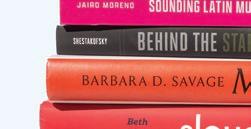



SPRING/SUMMER 2024
FINDINGS
F
Illustrations by Nick Matej 9
The Global Supply Chain’s Surprising Linchpin
When massive cargo ships arrive late to port, the delay sets off a domino effect that influences U.S. inflation, according to research from economist Jesús Fernández-Villaverde and colleagues.
BY MICHELE W. BERGER

n late March, a 985-foot-long cargo vessel called the Dali lost power, hitting the Francis Scott Key Bridge in Baltimore. The resulting collapse was deadly, killing six people. It also closed the Port of Baltimore—which generates billions of dollars and supports more than 15,000 direct jobs—for more than a month.
“Dozens of ships had to be re-routed, causing delays in all the North Atlantic logistics,” says Jesús Fernández-Villaverde, a professor of economics and director of the Penn Initiative for the Study of Markets. “The accident highlights the fact that even small disturbances in the global supply chain can have large consequences.”
Around the world, there are some 5,500 cargo ships like Dali on the move at any one time; 500 are so large that a single one carries more cargo than the large convoys did during World War II. Delays at port set off a chain reaction. “Say you have a container ship coming from Shanghai that was supposed to arrive to Los Angeles on December 7th. Instead, it arrived on the 9th, and suddenly, a lot of downstream production could not be completed,” says Fernández-Villaverde.
He and colleagues wondered whether such delays might affect the global supply chain and, in turn, U.S. inflation rates, a
question spurred by inflation hikes during the pandemic. “There was a lot of discussion about why inflation was going up so much during COVID,” he says. “Some people said it could be because of all of these global supply chain disruptions, but the problem was, we didn’t have a very good measure of them.”
To address this, Fernández-Villaverde and colleagues from Tsinghua University, the University of International Business and Economics, and the University of Oxford developed a machine-learning algorithm that included location, speed, and other publicly available data every ship sends from its transponder to a satellite. Using their algorithm, the researchers could then determine how many of the massive container ships were stuck outside of ports trying to get in and what happened because of the logjam.
“Why is this a good measure?” FernándezVillaverde says. “Because it turns out that these gigantic ships operate like buses on a fixed schedule.”
The researchers found that arrival even one day late could be costly: Such delays clogged ports, deferring when goods could be removed and when ships could leave. Inflation rates took a hit in the process. “We found that most of the reason inflation
spiked in 2021 was the global supply chain,” he says. “By 2022, the global supply chain had normalized and yet inflation was still high. We realized this was the Federal Reserve System dropping the ball, that it was a little too slow to react.”
Understanding this domino effect could help the U.S. prepare for a future disruption to the global supply chain from, say, a war, Fernández-Villaverde notes. “Beyond that, I’ve been disappointed that not a lot of researchers have done COVID-19 follow-up. There doesn’t seem to be a lot of interest in saying, ‘Let’s review the game from last Sunday to think about how we are going to play the game next Sunday.’ That’s always less attractive to publish, but to me, it’s really important.”
Down the line, Fernández-Villaverde says the ship data he and colleagues tapped into could be used for applications like measuring traffic through waterways such as the Panama and Suez canals. It’s important to better understand this system, he says. “We have become dependent on a global supply chain that is incredibly efficient but also extremely fragile.”
Michele W. Berger is editor of Omnia and director of news and publications for Penn Arts & Sciences.
FINDINGS
I
10

Colorful Language
Biology and psychology researchers reveal that the way colors have been described historically constrains how they might be described in the future.
BY ERICA MOSER
magine you and a friend are playing a guessing game: Using descriptive words alone, you challenge your friend to correctly identify the hue of individual color swatches. If your friend frequently guesses right, that means your shared language has what’s called an efficient color naming system.
These vocabularies are constrained both by how people perceive colors and by how much they want (or need) to discuss a given color. For example, in a 2021 study led by Joshua Plotkin, Walter H. and Leonore C. Annenberg Professor in the Natural Sciences, and Colin Twomey, then a postdoc and now interim executive director of the Data Driven Discovery Initiative, researchers found that the need to communicate about reds and yellows is high across languages; greens are more important in some.
For that work, they collaborated with David Brainard, RRL Professor of Psychology. Now, the three have identified another constraint on efficient color vocabulary: history.
In a paper published in Proceedings of the National Academy of Sciences, they show that a language’s past color vocabulary shapes its ability to evolve. The starting point places the initial restrictions, with the possibilities of how many directions it can go narrowing as the vocabulary itself continues to expand.
To draw these conclusions, the researchers used the publicly available World Color Survey, a large database of color-naming terminology that includes speakers from 110 language backgrounds naming 330 color stimuli. Specifically, Twomey and colleagues explored the introduction of new terms and the probability that a given word would change meaning as the size of the color vocabulary increased. For example, one efficient color vocabulary might combine green and blue—in other words, green-blue—and another might separate them as individual colors.
“In principle,” Plotkin says, using this information, “we can infer what ancestral color vocabularies were and then compare that to the historical record.” This historical constraint doesn’t apply only to colors, he adds, but to other categorization, like for consumer products or weather conditions, for instance.
Broadly, Brainard says, the study represents the idea that communication needs, historical constraints, and efficiency result in linguistic categories that are constantly refined. “The ideas, we hope, will apply to how we name and categorize and communicate about all kinds of things.”
Erica Moser is a science writer in University Communications at Penn.
RESEARCH ROUNDUP
Shape Shifters
Archaea, single-celled organisms once thought to survive only in the most extreme environments, actually exist in lakes and oceans, in soil, even in the human gut. Yet despite their ubiquity, little is known about them, not even what determines their shape. Biology Professor Mecky Pohlschröder and colleagues have unshrouded some of the mystery. Studying the cells of an organism called Haloferax volcanii, the interdisciplinary research team identified a diverse set of proteins that help determine whether the organism will be rod-shaped, diskshaped, or transition from one to the other—a factor that affects how the organism can function in and adapt to its environment. The findings appeared in Nature Communications.
Domestic Violence Laws
Intimate partner violence affects millions of women and girls across the globe, but the laws that protect them vary widely. Jere Behrman, William R. Kenan Jr. Professor of Economics, and colleagues from UCLA and Stony Brook University wanted to understand how such variations influence certain life decisions for women and how those decisions factor into what’s known as “wasting”—when children weigh too little for their height. In findings published in PLOS One, the researchers showed that having domestic violence laws in place increased women’s decision-making autonomy in healthcare and finances by almost 17 percent and 6 percent, respectively. This directly affected wasting, dropping the probability it would happen by about a third for children up to age 5.
Stable Glass
Though stable glass takes millennia to form naturally, researchers have been trying to better understand this aging in an effort to speed it up. One way to do so is to make a glass from vapor instead of cooling a liquid. Now, work from the lab of Zahra Fakhraai, a professor in the Department of Chemistry, and colleagues from Brookhaven National Lab has revealed that forming the glass on a softer, more flexible surface “dramatically accelerates” the timetable—by decades—and creates more rigid, denser glass. The findings, published in Nature Materials, could result in new methods to precisely engineer glass films and have possible implications for applications like semiconductors.
I FINDINGS
Illustrations by Nick Matej 11

WHAT CAN POLLS TELL US IN 2024?
John Lapinski, Robert A. Fox Leadership Professor of Political Science and director of the Robert A. Fox Leadership Program and the Penn Program on Opinion Research and Election Studies, talks polling in this Presidential election year.
 By Jane Carroll
By Jane Carroll
If there is one thing Americans can count on during any Presidential election year, it’s the constant commentary about polls. But how has polling changed in the digital age? How accurately can polls predict election outcomes? What purpose do they serve?
Omnia put these questions to John Lapinski, Robert A. Fox Leadership Professor of Political Science and director of the Robert A. Fox Leadership Program and the Penn Program on Opinion Research and Election Studies (PORES). Lapinski also directs the Elections Unit at NBC News, where he is responsible for projecting races for the network and producing election-related stories through exit polls.
OMNIA 101 Gracia Lam 12
Why do polling?
There has been a lot of discussion within network news and other media outlets about whether we should continue to run polls and in the same way we’ve been doing it. There have been misses with polling recently, primarily in election polls. Is it critically important that people have a sense of who may or may not win an election before election night? I don’t think so, but it is important, given that we live in an electoral democracy, that we have some way of measuring public opinion; otherwise, the people elected to represent us won’t know what we want. Polls are the best way to convey that information. For a healthy functioning democracy, public opinion is important, and the best way to measure public opinion is through polls.
How has polling changed in the past few decades?
It’s tremendously different. At NBC, it used to be that a large percentage of people we called wanted to take our polls. That’s not true now. So, the question is, is the small percentage of people who answer representative of the population we’re interested in studying? Are we able to statistically weight the data? A lot of public opinion researchers have been astonished that as response rates have plummeted, our polls still seem okay, so that’s a puzzle. Polls have lots of problems, but we’ve had success with them, too.
How do pollsters reach people?
The gold standard used to be that we’d use agreed-upon sampling techniques and then do a telephone poll on landlines and cell phones. We’ve seen big differences in response rates when using online methods versus telephone.
There are differences in subgroups within a population, and it’s very pronounced with younger people.
We’re doing a huge experiment right now at PORES, running five different surveys, including telephone interviews with both landline and cellphone interviews, a text survey, and two different online methods. We’ll be asking exactly the same questions at the same time. Then we will pull them all together and try to assess whether different respondents answer different survey modes or if the content of respondent answers differ based on mode. You need a multi-method approach to reach a representative group of people today, and then you have to figure out ways to essentially put the people back together into one survey.
What is a poll aggregator?
Aggregators take publicly available polls and average them. RealClearPolitics is an example. Proponents of aggregators say that, given the variability among different polls, an average will yield a more accurate picture. But critics say that aggregators, by including polls of dubious origins, can manipulate the results.
Does polling affect turnout?
In general, polls can’t predict turnout. People say that Biden voters this year are not enthusiastic, and, given that recent elections have been decided by so few voters, that could be pivotal. But polls can’t predict what people will actually do on Election Day. People make assumptions about what the electorate will look like and then bake them into their poll results— it is important to remember that. Sometimes those assumptions
are right and sometimes they are wrong, but they are always important to the poll’s results.
You’ve said you think some recent polls have been wrong. How do you know?
Let’s take the February 2024 New York Times/Siena poll that had Trump up five points over Biden. We use a statistical technique called multi-level regression with poststratification, or MRP. It’s a methodology that allows us to take a national poll, break down the results, and come up with state-bystate estimates. Using that technique, Trump leading by five would mean that he would win well over 300 Electoral College votes, probably more than 320 or 330, but that’s completely implausible. We’ve already seen that polls were off in the primaries. We can go state by state and see where polls predicted Trump winning by quite a bit more than he actually did.
One of the beautiful aspects of election polls is that you can determine whether they’re accurate or not because elections happen. Here’s what the poll said, here’s what the results said. Of course, there are data in these polls that certainly are correct—and to me, they are telling us that people aren’t satisfied with their choices on either side.
Any predictions?
This will be a super-close election. I am confident I will be working 100-plus hours at NBC News during election week to project who will be the next president of the United States. And I don’t know who that person is yet.
Jane Carroll, CGS’00, is associate director of donor relations for the Penn Arts & Sciences Office of Advancement and writes frequently for Omnia
SPRING/SUMMER 2024
OMNIA 101 13
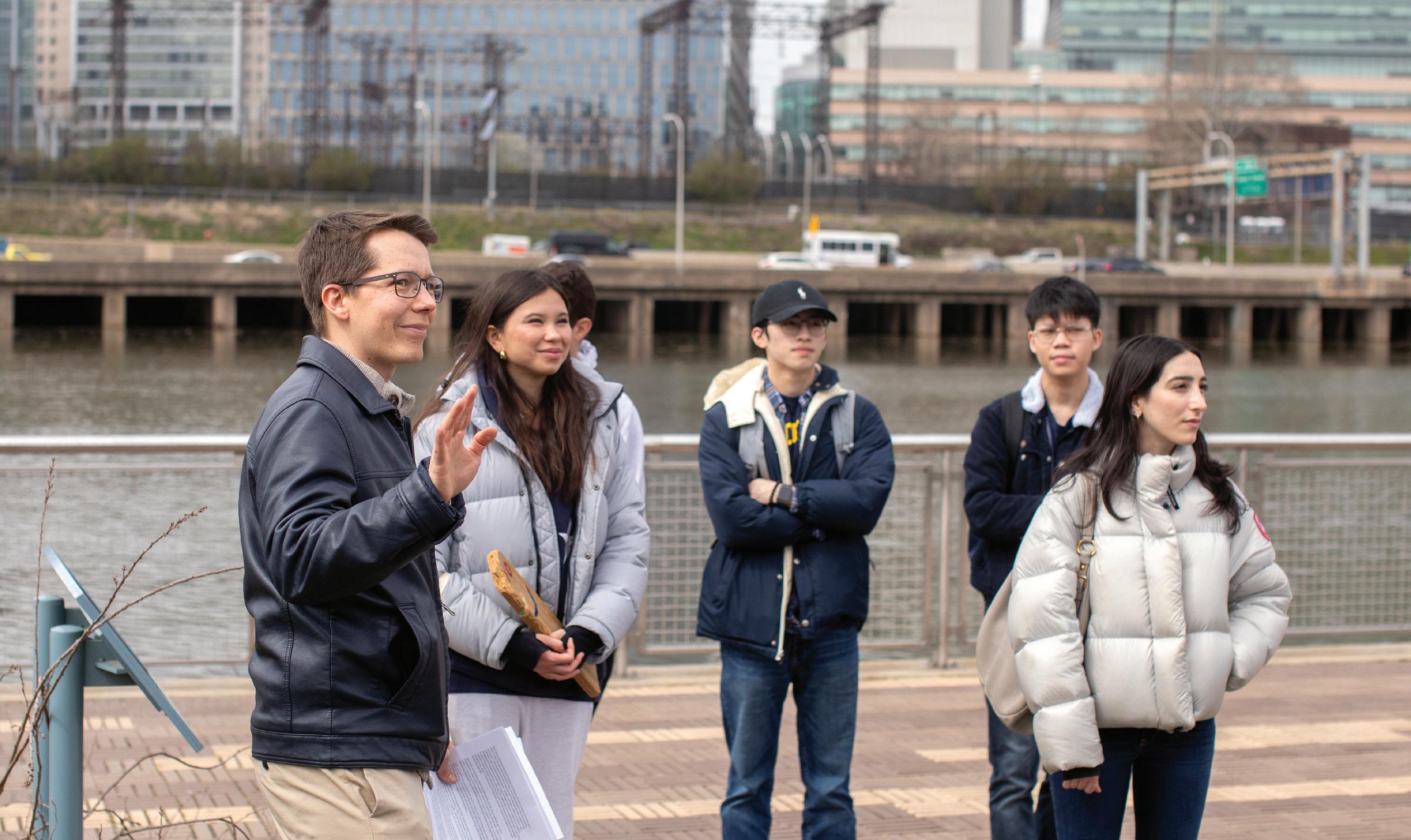
HISTORY ON THE RIVER
John Kanbayashi’s new seminar frames the past not by time or place, but through a natural feature that humans use but can’t fully control.
By Susan Ahlborn
John Kanbayashi is walking backward and talking about the Schuylkill River. The small group of students enrolled in his River History seminar follow attentively. Beside them is the river itself, brown and slow under a cloudy sky. On their other side are railroad tracks—a freight train drowns out Kanbayashi for a few minutes—and across the water, traffic on the Schuylkill Expressway moves almost as slowly as the river.
The original banks of this section of the Schuylkill are long gone, replaced by concrete as humans molded it to their needs.
But the river hasn’t always cooperated— it flows too slowly to carry away the waste dumped into it in the 19th century. Schuylkill means “hidden river” in Dutch, and for a while it was hidden from most Philadelphians by the refineries, factories, and abattoirs around it.
“You couldn’t always see the river,” says Kanbayashi, an assistant professor in History and Sociology of Science, “but you could smell it.”
Rivers are multifunctional by nature. They provide resources and transportation, often gateways to prosperity for societies, but they resist even the most sophisticated attempts at human control. They can also be political and religious symbols, technical objects, and historical
John Kanbayashi, Assistant Professor of History and Sociology of Science (left), on the east bank of the Schuylkill River with students in his River History class, including Nika Sadeghi, C’26 (far right). The class studied rivers all over the world, finding surprising connections.
IN THE CLASSROOM
14
Brooke Sietinsons
forces. Students in Kanbayashi’s seminar are using literature, film, and historical sources to explore these functions, examining rivers around the globe and how diverse societies have understood and employed them. Now, Kanbayashi is going a step further and bringing the class from Williams Hall to the Schuylkill to take in the river and its surroundings as he describes its role in the narrative of Philadelphia and Pennsylvania.
A historian of environment, science, and technology, Kanbayashi was inspired to create a history seminar organized not around a place or period, but a theme. “I thought it could be an opportunity to get students to cut across a lot of contexts and think about what might be distinctive or unique and what seems to be broadly shared,” explains Kanbayashi. He’s also introducing them to “the work of doing history, looking at primary sources and into difficult debates.”
out there and just explore and fully engross yourself in the material. Everyone contributed and built on each other.”
In one of these exchanges, the students held an in-class debate on the Three Gorges Dam in China that drilled down into many of the issues covered by the class. They looked at the hydroelectric power and opportunities the dam would provide but also at concerns ranging from compensation and new housing needed for displaced people to loss of cultural artifacts, environmental effects, and national security implications.
Kanbayashi assigned students to be pro or con for the in-class debate, but they eventually had to choose their own side for a written opinion piece. “The op-ed was different from a normal paper where you’re just stating and analyzing information,” says Sadeghi. “It was hard to choose to be for it or anti it because we learned so much about the advantages and the down sides.”
RIVER READING (AND WATCHING)
Select items from the syllabus offer a taste of the content students consumed in the River History course:
The River-Merchant’s Wife: A Letter
BY LI BAI, TRANSLATED BY EZRA POUND 8th Century
Ballad of the Dnieper
A SOVIET PROPAGANDA FILM 1943
Through the Johnstown Flood BY
DAVID J. BEALE
1890
When the Levees Broke: A Requiem in Four Acts BY
SPIKE LEE 2006
One of the easy takeaways about history is that it offers a lot of lessons in humility. But there are lessons of success and hope as well.
Each week or two the class focused on a different river around the world. After examining related literature and film, the students each wrote a blog post that facilitated a group discussion during class time. “I really, really enjoyed the structure of the class, because it allowed me to fully immerse myself and understand the material,” says Nika Sadeghi, C’26. The small seminar size also gave each student more “airtime,” she says. “We got to where we embraced that opportunity to put yourself
For their final project, students selected a river and wrote its biography, deciding how they wanted to organize their histories, and then finding and interpreting resources, but, says Kanbayashi, “also trying to be critical of them or maybe asking a question that is different.” Sadeghi focused on the Ganges River in India. “It is a huge cultural symbol, and it has great meaning in Hinduism, but it’s one of the most polluted rivers in the country,” she says. “I was really excited to explore that juxtaposition.”
Beyond looking at ways humans and rivers have interacted in the past, Kanbayashi also addressed new issues related to climate change, given that this generation of students will be faced with a range of environmental issues—no matter what path they end up taking.
“One of the easy takeaways about history is that it offers a lot of lessons in humility,” Kanbayashi says. “But there are lessons of success and hope as well.” While studying the Bengal Delta, for example, they learned about people there who move constantly among islands that are formed and reformed when the rivers shift course.
“Thinking about how people live amidst changing environments is becoming more critical with climate change. But that’s something that has always been the case,” Kanbayashi continues. “The stories we can tell are not just of hubris. There are all sorts of stories of adaptations as well. We need to resist master narratives and bring a multiplicity of perspectives.”
Rivers aren’t just bodies of water that flow through environments where people live, Sadeghi adds. “They are multifaceted and have so many different roles and purposes for communities, individuals, states, and countries. We’ve learned how rivers can create enormous distress by flooding or by being dammed. The reverse can be true, too; they can be used for development or be religious symbols. Before this class, I never thought about the pivotal presence rivers can have in global conflicts and in global resolution.”
Omnia Associate Editor Susan Ahlborn has worked as a communications professional in healthcare and academia, and loves learning cool things and writing about them.
SPRING/SUMMER 2024
IN THE CLASSROOM
15
Sound Solutions Sound Solutions Sound Solutions
Researchers across Penn Arts & Sciences are turning to sound for new answers to questions on subjects from birdsong to the benefits of music exposure.
By Laura Dattaro
Illustrations by Maggie Chiang
Deep in the waters of the Indian Ocean is a system of underwater radar discreetly listening to its environment. These “listening stations”—intended, in theory, to monitor government activity—are shrouded in mystery; it’s possible they aren’t even real. But when Jim Sykes first heard about them, he was struck by the message the very idea of them sent.
“It’s very hard to confirm that these radars exist. Mostly it’s just rumors and promises, though probably some do exist,” says Sykes, an associate professor in the Department of Music. “But by announcing the
intent to use this kind of system, one government is signaling to another, ‘We’re listening to you.’”
Hearing, rather than seeing, is the surveillance medium of choice, he adds, showing that in some cases, “governments believe sound is a better way to access the truth.”
Today, across Penn Arts & Sciences, a similar sentiment about the power of sound fuels researchers and students in disciplines from music history to neurobiology who are using it as a lens to understand the world. They’re tracking the movements of fin whales and the behaviors of songbirds. They’re building algorithmic ears and musical video
games. And through it all, they’re demonstrating that sound is central to language, communication, history, and culture.
Most of their work fits collectively under the umbrella of “sound studies,” a term first coined in Jonathan Sterne’s 2003 book The Audible Past to describe a field that seeks to understand how sound shapes society. The book set off a flurry of interest in this space, Sykes says. And its publication happened to coincide with a new ability to digitize sound, making it ubiquitous, storable, and shareable. That environment amplified opportunities to look at sounds as worthy of study in their own right.
OMNIA | ALL THINGS PENN ARTS & SCIENCES
16


The “Fundamental” Importance of Sound
To study sounds, they must first be accessible. In 2011, that mission drove Al Filreis, Kelly Family Professor of English, to co-found the poetry archive PennSound.
Working with Charles Bernstein, a poet and professor emeritus at Penn, Filreis reached out to living poets and estate managers for poets who had died, asking to digitize any recordings they could get their hands on— sometimes trying for years, like they did with acclaimed 20th-century poet John Ashbery. Shortly before Ashbery died in 2017, his husband, David Kermani, finally agreed. Bernstein met Kermani at a diner, where he showed up with two plastic grocery bags full of cassette tapes—the only existing copies of Ashbery reading his works until PennSound digitized them.
So far, no one has said no to such records of their work, according to Filreis. And after 15 years, PennSound is the world’s largest audio poetry archive, comprising 80,000 individual files from more than 700 poets—all of them downloadable, for free.
The files in the archive are largely from live poetry readings, making them historical artifacts that retain not just the poem itself but also the sounds of a particular moment in time, down to the clinking of glasses at a bar. Filreis says it’s upended the way poetry can be taught.
When he was a student, for example, he remembers learning Allen Ginsberg’s iconic 1956 poem “America” by reading it from the thin pages of a bulky poetry anthology. It was in the same font as poets spanning centuries and styles. “It looked like every other poem that had ever been written,” Filreis says. But even as Filreis struggled with the words on paper, recordings of Ginsberg himself reading the poem—one a live version from 1955, upbeat and mischievous and before the poem was actually finished, another from a 1959 studio session, sorrowful and pleading—sat in the basement of a San Francisco poetry center.
Instead of that thin anthology page, Filreis’s students learn the poem by listening to both recordings. “They’re two completely different understandings of the tone and his relationship with America,” Filreis says. “There are still people thinking sound files are fun add-ons. I would contest that; they are fundamental.”
Exposure to Music
Mary Channen Caldwell knows from experience that sound is fundamental. Caldwell, an associate professor in the Department of Music, teaches a music class for students who aren’t majoring or minoring in music. Called 1,000 Years of Musical Listening, the course begins in the year 476 with the earliest notated Western music and ends with contemporary composers, including some currently working at Penn, like Natacha Diels, Assistant Professor of Music, Anna Weesner, Dr. Robert Weiss Professor of Music, and Tyshawn Sorey, Presidential Assistant Professor of Music.

Sound is a better way to access the truth.
Caldwell teaches the class almost entirely through sound. In the classroom and at home, students listen to the chants of medieval monks, French trouvère songs from the 13th century, operas from the 18th century. They must attend two concerts—the first time some of them have experienced live music—and Caldwell pushes the students to interrogate the ways in which historical prejudices and biases influence which music exists today.
The course’s textbook, for example, largely features white, male composers. Caldwell complements this narrative with extra readings that dive into music written and published by women and people of color, sometimes under
OMNIA | ALL THINGS PENN ARTS & SCIENCES
18

pseudonyms out of necessity.
“Knowing that is important and helps you be a better consumer of cultural products,” Caldwell says.
Exposure to music can also encourage the development of language itself. That may be, in part, because language has its own melodies and rhythms. And those melodies and rhythms, known as prosody, can change how people interpret and understand words, says Jianjing Kuang, an associate professor in the Department of Linguistics. “We’re like composers in real time,” she says.
Adults with greater musical proficiency often excelled at language and reading in childhood; Kuang wants to understand why the brain links the two, in the hopes of creating music education programs that can support language development.
To probe this question, Kuang, her graduate students, and several undergrads developed a video game featuring a musical elephant named Sonic. Children playing the game press keys along with Sonic’s rhythm or guess which instrument Sonic is playing. During the summer of 2023, Kuang brought laptops loaded with the game to a camp and scored how the children did. She and her students then tested the children’s language abilities by asking them to act out and guess emotions.
Early results suggest that younger children who do better with the musical games also have higher language abilities. But in older children—around age seven—the differences are less stark, suggesting that the brain finds multiple ways to get to the same end result of language. “There is not one
path to achieve language development,” Kuang says. After all, she adds, some people are nearly “tone deaf,” unable to sing or identify a pitch, but can speak just fine.
“Language is so central in our daily life,” Kuang says. “If you want to understand our social behavior or cognition, language and speech are core.”
Language Development and the Cowbird
Sometimes this is true even for animals, like the songbirds biology professor Marc Schmidt studies. Research has shown that unlike most animals, songbirds learn to vocalize in similar ways as people do, by listening to the

19

20
adults around them and receiving audio feedback from their own speechlike sounds. That makes them an excellent model for understanding the neural pathways behind speech development, Schmidt says.

Language is so central in our daily life. If you want to understand our social behavior or cognition, language and speech are core.
Songbirds—a category that includes crows, cardinals, cowbirds, warblers, and robins, among others—make up almost half of all bird species on Earth. All birds vocalize to some degree, but songbirds use more complex patterns called songs.
In an outdoor “smart” aviary behind the Pennovation Center, Schmidt studies the songs and behaviors of 15 brown-headed cowbirds. One song in the male cowbird’s repertoire is nearly identical each time it’s sung. In fact, it’s one of the most precise behaviors in the entire animal kingdom, Schmidt says. “If you want to understand how the brain controls behavior, you want to choose a behavior that you can really rely on,” he adds.
The song is exceedingly complex to produce. Songbirds vocalize by pushing air through an organ called a syrinx, which sits at the juncture of the trachea, splitting into a V shape and connecting with the left and right lung. By alternating airflow between the two sides, the songbirds produce intricate, continuous notes. The male cowbird can switch sides every 25 milliseconds, indicating “incredible neuromuscular control,” Schmidt says.
Some birds are better at this than others, and Schmidt has found that female cowbirds pick up on quality. A female listening to recordings of the song will dip into a dramatic posture of approval, tilting her chest forward and raising her head, wings, and tail feathers—but only if she decides the song is coming from a worthy male. The male cowbird, on the other hand, changes his posture depending on whether his audience is another male or a female, puffing his feathers and spreading his wings for the former, holding completely still for the latter.
By recording activity from the muscles involved in breathing, Schmidt discovered that staying still actually requires more
energy for these birds. These subtle behavioral changes suggest that when the brain processes information about sound, it takes in more than just basic features such as frequency and loudness. It also considers the social context in which the sound is heard.
“You cannot understand behavior in a vacuum,” Schmidt says. “You have to understand it within the behavioral ecology of the animals.”
Using Sound to Understand How We Learn
To study this behavior in a more natural context, Schmidt has partnered with colleagues to develop a chip that could be implanted in a bird’s brain to record activity continuously. One of his collaborators is Vijay Balasubramanian, Cathy and Marc Lasry Professor in the Department of Physics and Astronomy.
Balasubramanian, a theoretical physicist with a curiosity about biology, once wanted to understand learning so he could build more intelligent machines. Today his interests are more fundamental: He wants to understand how animal brains learn from their environment, and he is using sound to do it.
Animals, Balasubramanian points out, learn incredibly efficiently. A brain runs on about 20 watts of power—less than a single living room lightbulb. Training one large language model of the kind on which ChatGPT runs, on the other hand, requires more power than 1,000 households use in an entire year. What’s more, a brain can learn largely on its own, whereas an artificial intelligence model typically requires humans to manually label objects first.
How brains manage this self-directed learning is one of the big questions in behavioral and neural science, Balasubramanian says.
21

In a crowded room filled with noise, a person’s brain can pick out distinct sounds—say, her name— from the background cacophony. This phenomenon is known as the “cocktail party” effect. But how does the brain actually distinguish one sound “object” from another?
Balasubramanian theorizes that a sound object can be defined by two features that change over time: coincidence and continuity. Coincidence describes features of an object that appear together. In a visual object, such as a book, coincidence would describe how the edges of the front and the back covers coexist. Continuity describes how the edges move in concert if the book gets flipped over. For a sound, temporal continuity might mean the way pitch changes as a person speaks.
To understand how the brain uses this information to identify a sound, Balasubramanian, postdoctoral fellow Ronald DiTullio, GR’22, and Linran “Lily” Wei, C’25, are studying vocalizations made by people, a type of monkey called a macaque, and several species of birds, including the blue jay, American yellow warbler, house finch, great blue heron, song sparrow, cedar waxwing, and American crow.
Wei and DiTullio developed a machine learning model that mimics the cochlea, the hair-lined cavity of the inner ear that makes the first step in auditory processing: The hairs vibrate in response to sounds, sending signals along a nerve directly to the brain. Instead, Wei and DiTullio use an algorithm to extract certain features from the responses of their model cochlea—changes in frequency, for example— then a simple neural network uses those features to guess the sound’s origin.

The team has found that frequencies that change slowly over time are sufficient to distinguish among species. They can also differentiate vocalizations from individuals of the same species, as well as different types of sounds, say friendly coos or angry grunts.
To Wei, the model is a way to break down auditory processing into its most basic parts. “One thing I’ve learned from physics is that simplification is a virtue,” Wei says. “We have very complicated theories about how our auditory system might work, but there should be a simpler way.” These studies take a step in that direction, she adds.
Learning from Fin Whales
Even more complex than bird, macaque, or human auditory systems are those of marine mammals, who use sounds not only to communicate but also navigate. A single fin whale—the second largest whale on Earth—can make nearly 5,000 calls every day and can produce sounds up to 190 decibels, as loud as a jet taking off from an aircraft carrier.
To grasp how a fin whale might react to, say, the construction of a wind farm, researchers first need to know the animal’s typical behavior, says John Spiesberger, a visiting scholar in the Department of Earth and Environmental Science. Of course, “you can’t interview a fin whale,” he says. And spotting one visually is also serendipitous; they dive deep and can stay under for 20 minutes. Instead, researchers often track the whales’ movements by following their sounds.
The files in the archive are largely from live poetry readings, making them historical artifacts that retain not just the poem itself but also the sounds of a particular moment in time, down to the clinking of glasses at a bar.
The process is similar to the way a smartphone knows its location. A phone measures the difference in signal arrival times between pairs of broadcasting GPS satellites, then uses the differences to calculate its location. Similarly, researchers drop into the water receivers that pick up whale calls, then calculate the whales’ locations from the differences in the times the calls arrive at the receivers.
But the process doesn’t work exactly the same underwater as in the air. The atomic clocks that GPS satellites carry and the speed of the GPS signal both
OMNIA | ALL THINGS PENN ARTS & SCIENCES
22
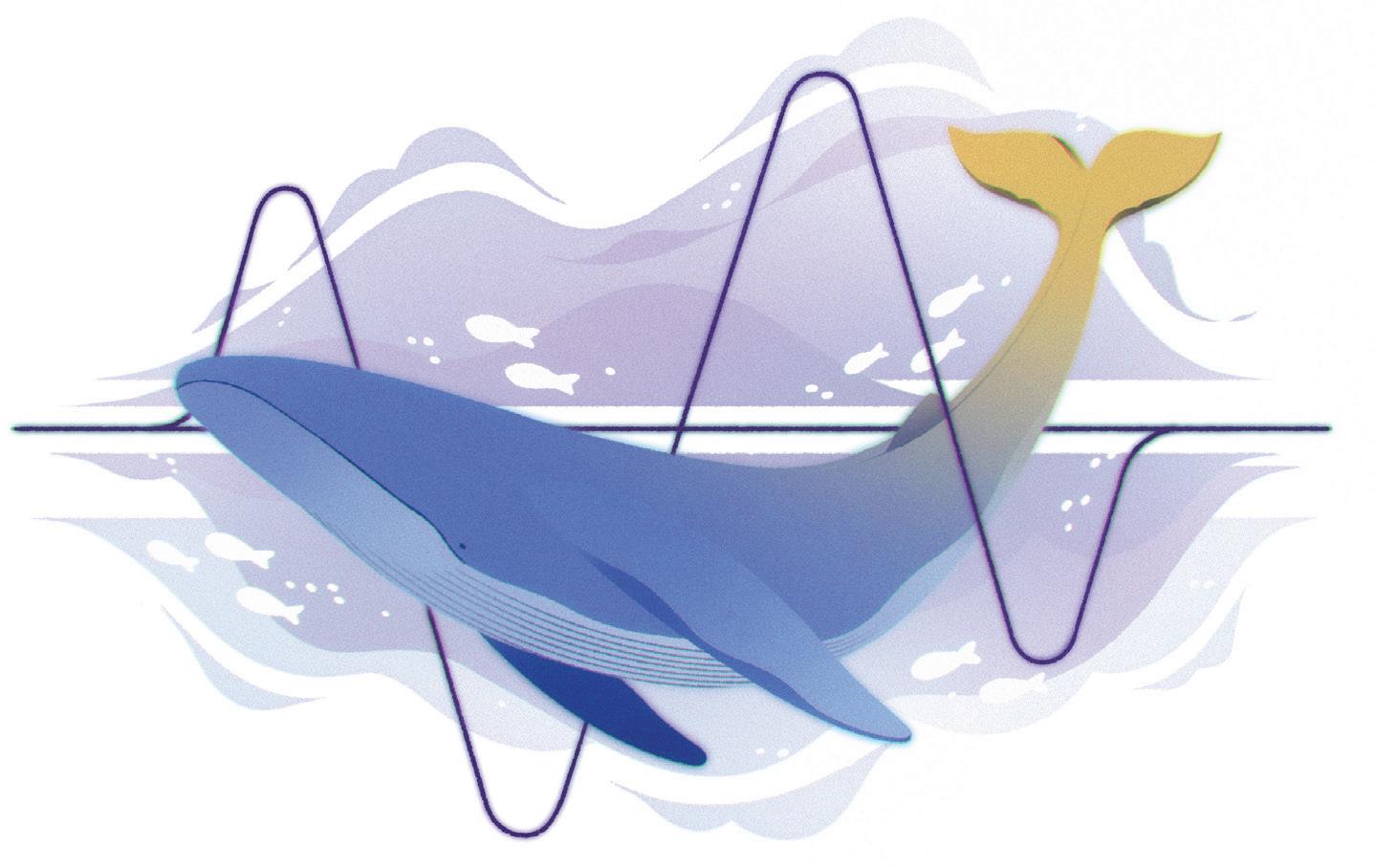
precise locations.
In the ocean, though, it’s much murkier, in part due to inexact receiver locations and clocks that can be off by minutes. In recently published research, Spiesberger showed that estimates of a whale’s location using the GPS technique can be incorrect by up to 60 miles.
For decades, he has been developing new methods to reliably locate sounds in the face of these errors and use the improved techniques to survey whale populations. There is often no way to identify an individual whale from its call. That means 100 fin whale calls could originate from one, seven, or even 100 whales. Spiesberger’s methods yielded a surprising result: The reliable locations made it possible to compute the fewest number of whales heard.
That information could help researchers better understand how whale populations respond to environmental changes, says Joseph Kroll, a professor in the Department of Physics and Astronomy and Spiesberger’s collaborator since the 1970s, when they were both studying at the Scripps Institution of Oceanography. “It doesn’t
looking for these animals to count them,” Kroll adds. “We want to know what’s happening to these populations.”
A Field Expanding
Spiesberger’s research is a clear demonstration of the ability to learn about a creature through the sound it makes, a principle underlying the work of just about all of the sound study happening across Penn Arts & Sciences. For Jim Sykes, the sound studies researcher, the next step is applying this principle across human cultures more broadly.
About a decade after sound studies became more established, a growing sentiment started to develop: The field had focused too much on people in the West. New branches of inquiry emerged, including Black sound studies and Indigenous sound studies. That’s the subject of Sykes’s book Remapping Sound Studies, an anthology he co-edited with Princeton’s Gavin Steingo that suggests a global model for studying the ways sound contributes to cultural and technological development.
Sykes conducted his dissertation research in Sri Lanka, around the time its 26-year civil war ended in 2009. He was interested in the way the sounds of war—beyond militaristic bangs of gunfire and bombs—shaped the experience of the country’s citizens.
He found that for many, sound defined both their day-to-day lives and their long-term memories of the conflict. They might notice, for example, that the playground yells of schoolchildren shifted to a different time of day or location as the education system tried to adapt to eruptions of violence. They might hear soldiers stopping cars at checkpoints, or a mother yelling her son’s name outside of a prison.
“That should be included in thinking about the sounds of war,” Sykes says. “Yet somehow, if you’re just focusing on military equipment, that gets left out.”
It’s a sobering example of the way society can be experienced, and thus understood, through sound. Sound is, after all, everywhere. It fills homes and cities, connects people to one another and the world, drives animal behavior and ecosystems. It’s one of the key ways a brain learns about the environment in which it finds itself. That means researchers tackling just about any question can potentially find a solution in sound.
Laura Dattaro is a New Jersey–based freelance science journalist who writes about the brain, genetics, and physics, among other topics. She has written for many outlets, including Columbia Journalism Review, Quanta, Spectrum, and The New York Times.
SPRING/SUMMER 2024
23













Catalysts for Basic Science sts
P. Roy Vagelos, C’50, PAR’90, HON’99, has been connected to Penn for 75 years, starting as an undergrad. He and his wife, Diana T. Vagelos, PAR’90, recently gave Penn Arts & Sciences $83.9 million to fund science initiatives—the largest single gift ever made to the School.
By Ava DiFabritiis

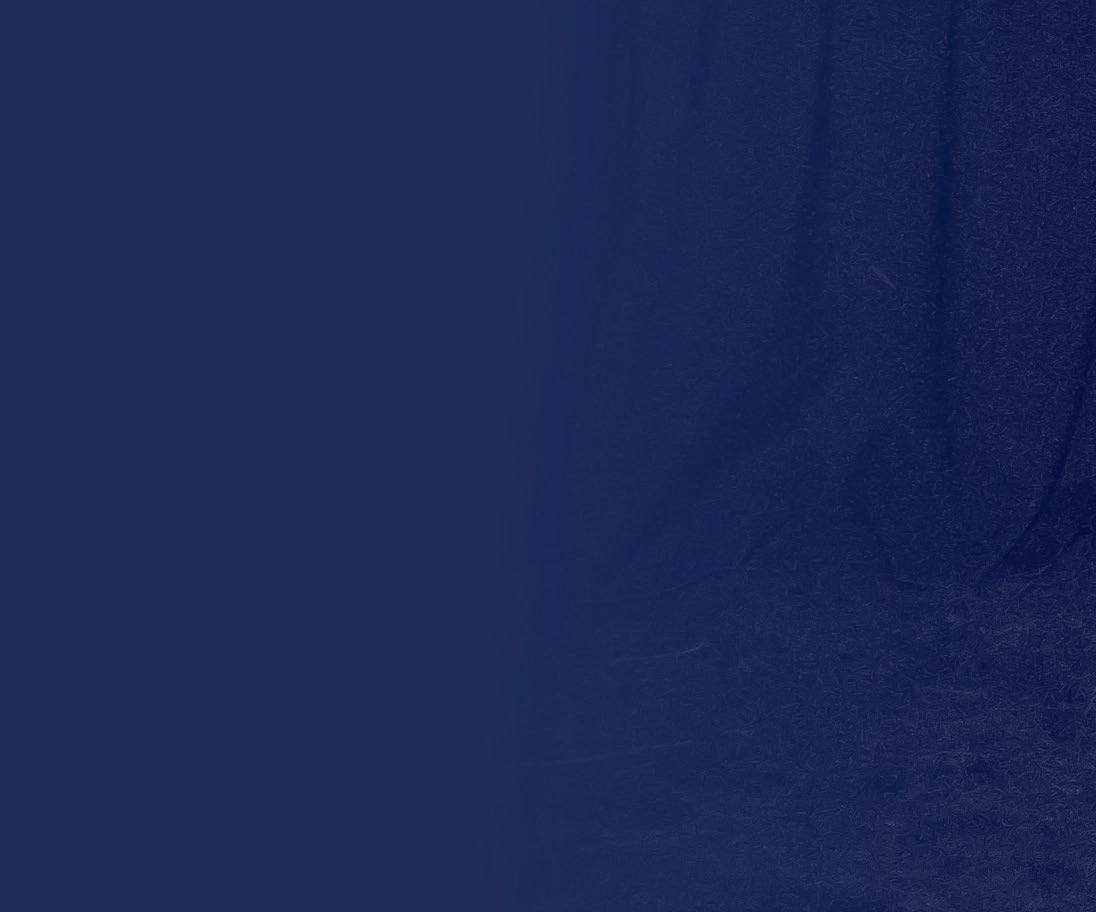






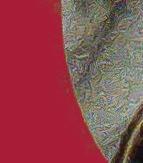





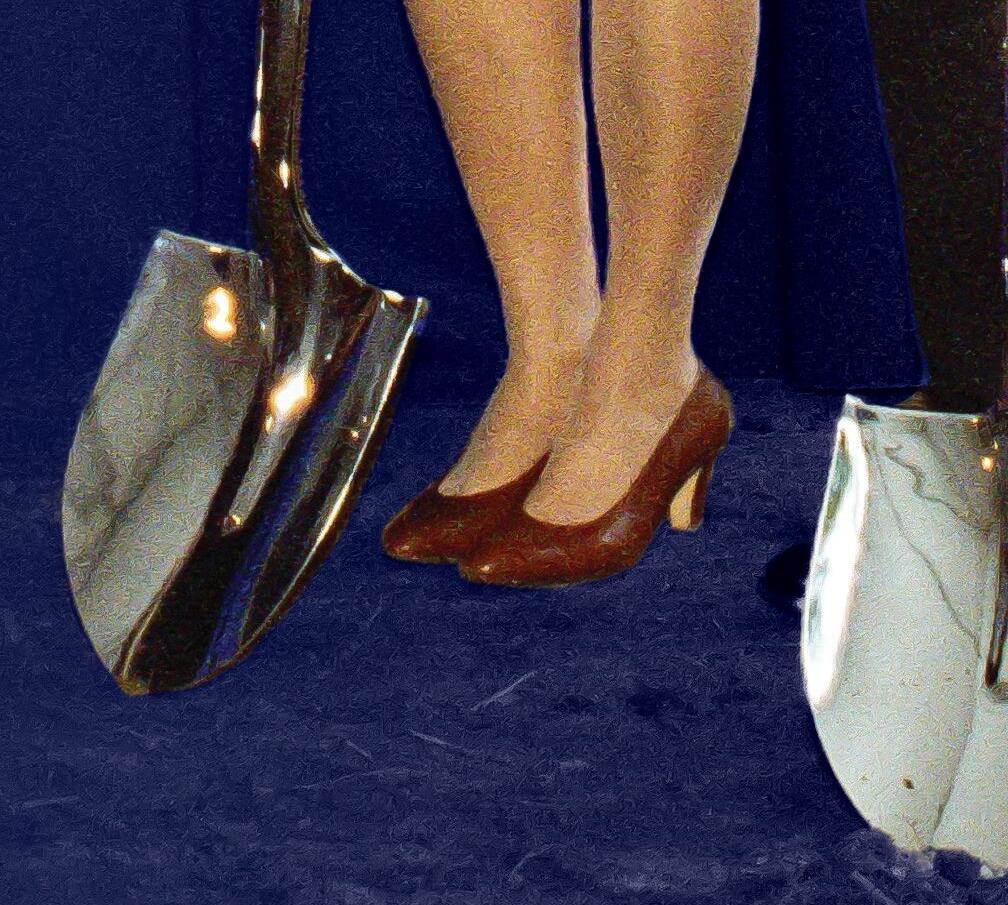



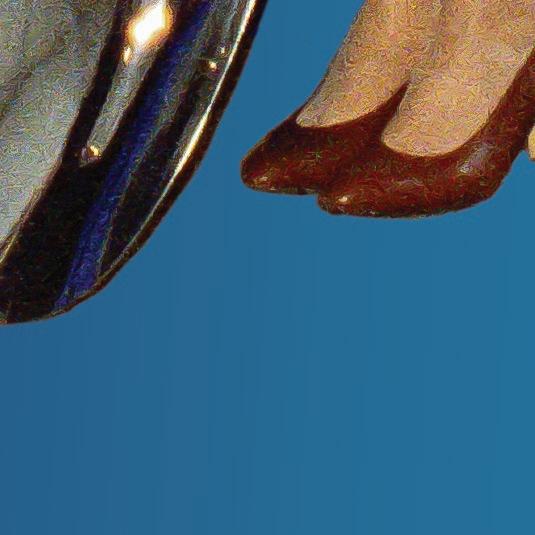
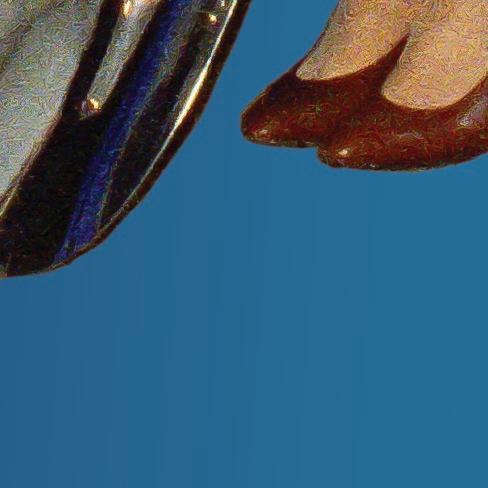
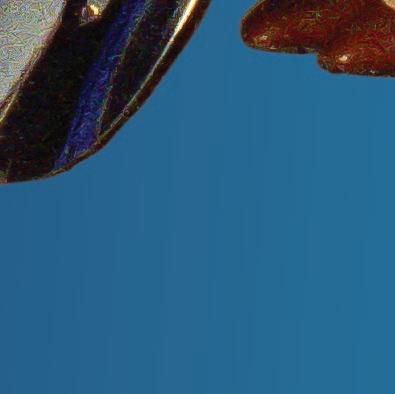

















| ALL THINGS PENN ARTS & SCIENCES
Tommy Leonardi
24
In January 2024, the University announced that P. Roy Vagelos, C’50, PAR’90, HON’99, and Diana T. Vagelos, PAR’90, made a gift of $83.9 million to fund science initiatives across the School of Arts & Sciences—the largest single gift ever made to the School and among the largest in Penn’s history.
This transformative gift includes $50 million to enhance graduate education in the Department of Chemistry, including funding 20 Vagelos Fellows. It also establishes a permanent endowment for the Vagelos Institute for Energy Science and Technology. To bolster excellence in chemistry research and teaching, the Vageloses have also directed a portion of the gift to fund their seventh endowed professorship at Penn Arts & Sciences. In addition, the gift is funding student awards honoring leaders of three undergraduate programs that carry the Vagelos name: the Roy and Diana Vagelos Program in Life Sciences and Management, the Vagelos Integrated Program in Energy Research (VIPER), and the Roy and Diana Vagelos Scholars Program in the Molecular Life Sciences.
The Vageloses’ longtime support of Penn Arts & Sciences now totals $239 million and represents an extraordinary investment in innovation and basic science.
“This monumental new gift caps off the incomparable impact that Roy and Diana have had on scientific research and education at Penn Arts & Sciences,” says Steven J. Fluharty, Dean and Thomas S. Gates, Jr. Professor of Psychology, Pharmacology, and Neuroscience. “From supporting and recruiting exceptional chemists to educating future experts in top-notch research facilities and interdisciplinary undergraduate programs, we will continue to make great strides thanks to the partnership and incredible generosity of Roy and Diana.”
The campus that welcomed Roy seven decades ago as an undergraduate has experienced vast transformation—shaped in no small measure by the visionary involvement of the Vageloses.









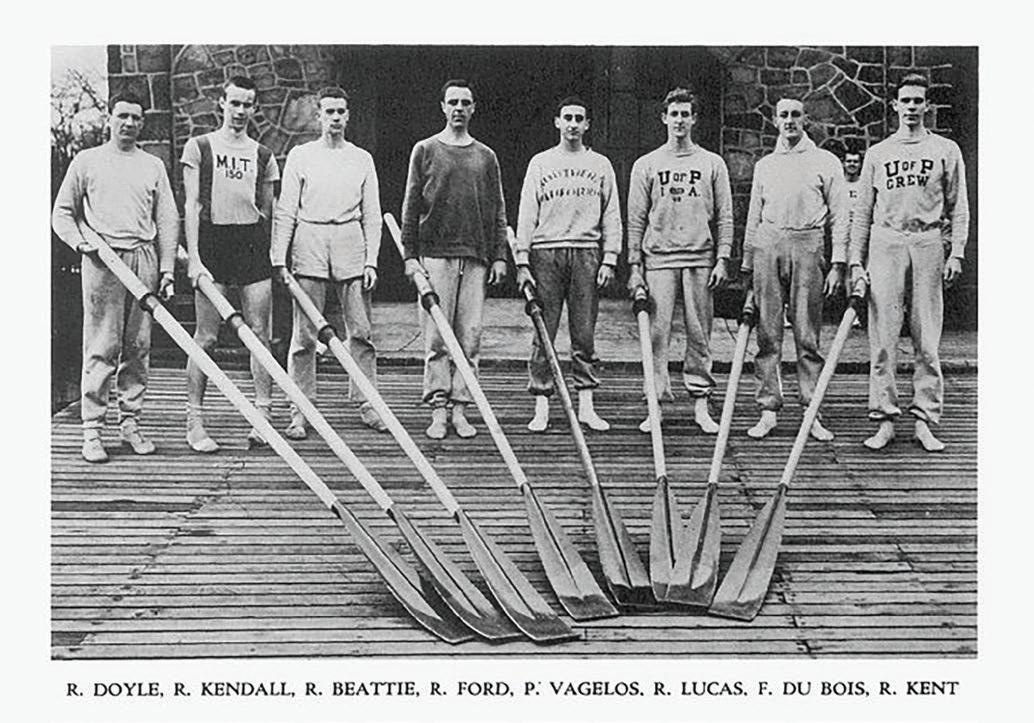
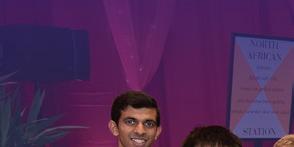





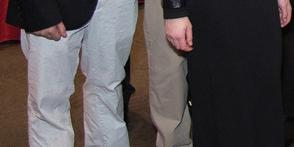

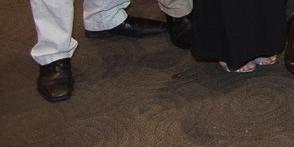



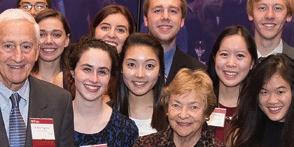




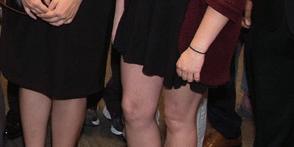
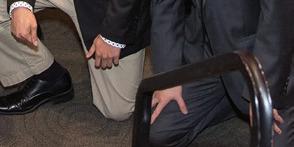

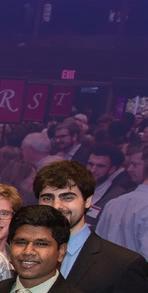


A Passion for Science Ignited
Roy Vagelos’s noteworthy career began at Penn as a chemistry major. Following his graduation in 1950, he completed his medical degree at Columbia University. As a physician-scientist at the National Institutes of Health, he discovered a key protein in the process of lipid metabolism. He spent nine years as chair of the Department of Biological Chemistry at Washington University in St. Louis. He joined Merck & Co. as Senior Vice President for Research in 1975, later becoming CEO and leading the company through a period of stunning innovation. He is best known for leveraging Merck’s discoveries to address health needs in the developing world. During his tenure, Merck made the breakthrough drug ivermectin freely available with the goal to eliminate river blindness globally.
The connection to Penn that he formed as a top chemistry student and rower burgeoned when he became a proud Penn parent and later Chair of the Board of Trustees—a position he held from 1994 to 1999. As founding Chair of the Committee for Undergraduate Financial Aid, he galvanized support for student aid, and he and Diana personally established scholarships that support more than 20 students in the sciences every year.
Ava DiFabritiis, C’13, associate director of stewardship for Penn Arts & Sciences, is a frequent contributor to Omnia.
SPRING/SUMMER 2024
(Top to bottom) Roy Vagelos, fourth from right, rowed on the lightweight crew team during his time at Penn; Roy and Diana Vagelos with recipients of their two endowed scholarships, the Vagelos Endowed Scholarship in the Molecular Life Sciences and the Roy and Marianthi Vagelos Scholarship.
Courtesy of The Record ; Ben Asen
25

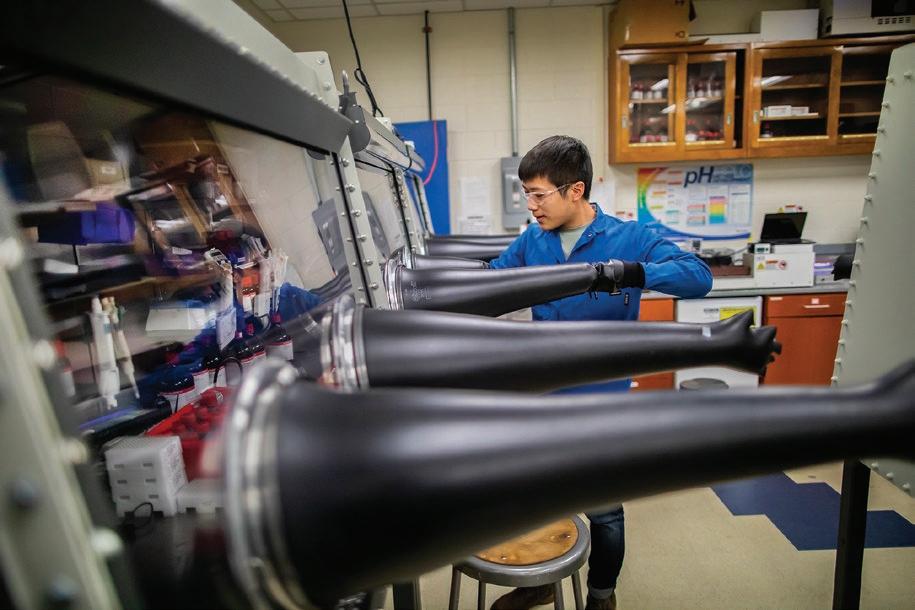


Fueling
Innovation and Discovery
From his time at Washington University in St. Louis in the 1970s, Roy knows firsthand that innovative and intellectually curious scholars are essential to the success of research institutions. He and Diana have strengthened Penn’s faculty through seven endowed professorships in the sciences, provided substantial support for graduate education—a recognition of the critical importance of training the scientists of the future—and created a hub for interdisciplinary collaboration in the Vagelos Institute for Energy Science and Technology.
Cementing the future of energy research at Penn, Roy and Diana made a spectacular investment to construct a dedicated home for the Vagelos Institute and VIPER. The Vagelos Laboratory for Energy Science and Technology will be an essential incubator for scientists and engineers to collaborate on sustainable energy solutions.
VAGELOS GRADUATE FELLOWS
With a substantial portion of the recent gift from the Vageloses—$50 million—being utilized to enhance graduate education, the Chemistry Department will begin admitting Vagelos Fellows this year, building to 20 named fellows.
“Supporting talented graduate students and bringing them together with the best faculty is the most promising path to breakthrough discoveries,” says Fluharty, “addressing not only the challenges that are facing us today, but ones that we have not yet imagined.”
THE VAGELOS INSTITUTE FOR ENERGY SCIENCE AND TECHNOLOGY
Through founding support from Roy and Diana, the Vagelos Institute for Energy Science and Technology launched in 2016, positioning Penn as one of the premier energy research and technology centers in the nation. Today, it engages more than 35 faculty from across the University, along with postdoctoral fellows and graduate students. The recent gift from the Vageloses establishes a permanent endowment for the Institute.
“From supporting and recruiting exceptional chemists to educating future experts in topnotch research facilities and interdisciplinary undergraduate programs, we will continue to make great strides thanks to the partnership and incredible generosity of Roy and Diana.”
—Steven J. Fluharty, Dean and Thomas S. Gates, Jr. Professor of Psychology, Pharmacology, and Neuroscience programs,




















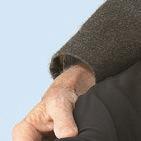




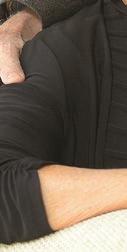



















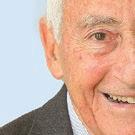
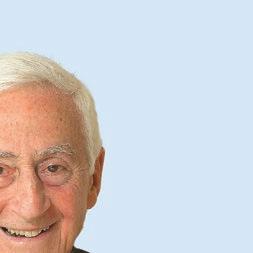














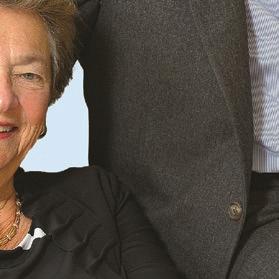

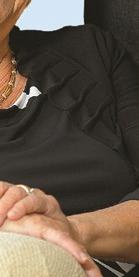





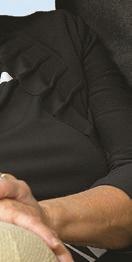






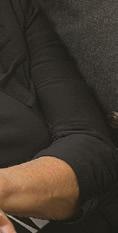




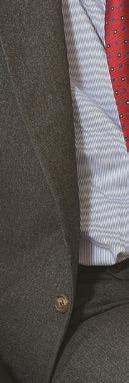
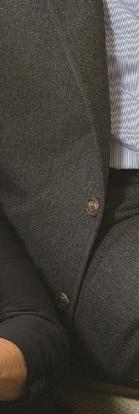




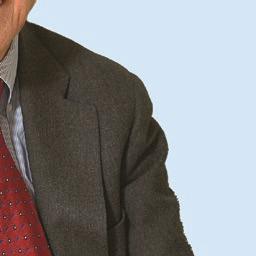
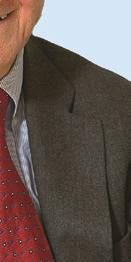


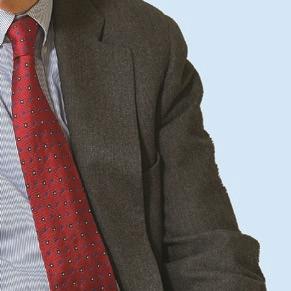






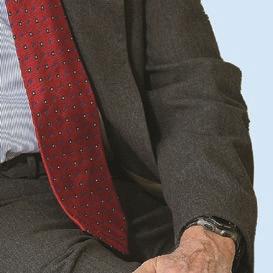




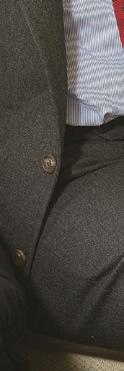

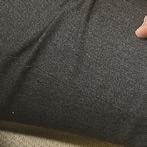


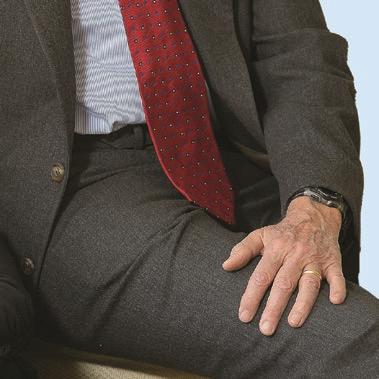



Eric Sucar, University Communications; Colton Sheehan; Lisa J. Godfrey 27
(Top to bottom) The lab group of Ivan Dmochowski, Alan MacDiarmid Term Professor of Chemistry; Shuai Zheng, GR’20, running chemical reactions in the High-Throughput Experimentation Laboratory; the lab group of Karen Goldberg, Vagelos Professor of Energy Research and director of the Vagelos Institute for Energy Science and Technology; Roy Vagelos at the topping-off ceremony for the Vagelos Laboratory for Energy Science and Technology.



Seizing Moment Seizing Moment the
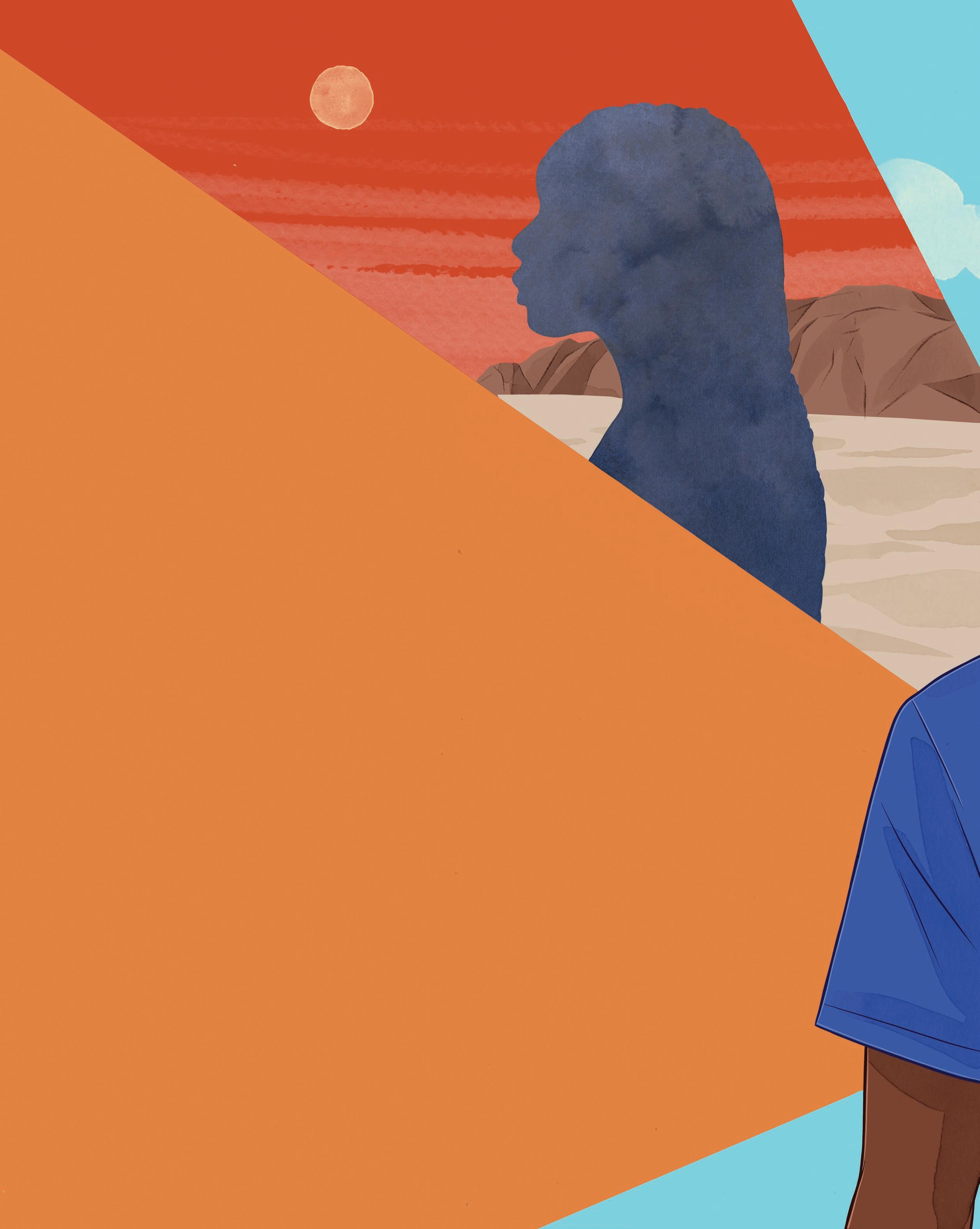

Spanning disciplines and geographies, Africana studies at Penn has emerged as a leader in the field.
 By Lauren Rebecca Thacker
By Lauren Rebecca Thacker


Illustrations by Stephanie


 Singleton
Singleton






28

29
ntroductory courses tend to rely on canonical texts, familiarizing students with a well-established history of a single field and the major thinkers within it. But with Intro to Africana Studies, it’s a different story altogether. “The field is moving so fast and is so wide-ranging, I have to update my syllabus every semester,” says historian and visual artist Grace Sanders Johnson. “One week, students might read a brandnew article from a medical journal, and the next, an 18th-century literary piece.”
Johnson, an associate professor in the Department of Africana Studies, sees the same expansiveness in her research.
“Studying the Caribbean through the lens of Africana, I consider modes of movement and patterns of migration, global politics, the environment, and how all of these are related,” she says. “I was trained as a historian, but as an Africana studies scholar, I can’t just stay in one field.”
With experts from the humanities and social sciences working on subjects that span the African diaspora, Penn has emerged as a leading institution in this space. The Center for Africana Studies, directed by Presidential Penn Compact Professor Wale Adebanwi, focuses on public programs and research support. The Department of Africana Studies, chaired by Camille Z. Charles, Walter H.
and Leonore C. Annenberg Professor in the Social Sciences, is home to an undergraduate major and minor, a graduate certificate, and a doctoral program. There is also the Summer Institute for Pre-First Year Students, a week-long, on-campus program for accepted students prior to their first semester.
Africana studies is the study of what it means to be human.
This dynamic structure results in faculty from most of Penn’s 12 schools researching and teaching rigorous courses on topics from critical ethnography and the transatlantic slave trade to Egyptian history and 20th-century literature. It looks like a lecture given by the President of Sierra Leone, or a theatrical performance co-written by Penn students and West Philadelphia residents, or the continued evolution of a field largely founded by W.E.B. Du Bois in 1899. It’s a commitment to advancing the scholarship and understanding of race and the lives, cultures, and history of people of African descent on the continent and around the world.
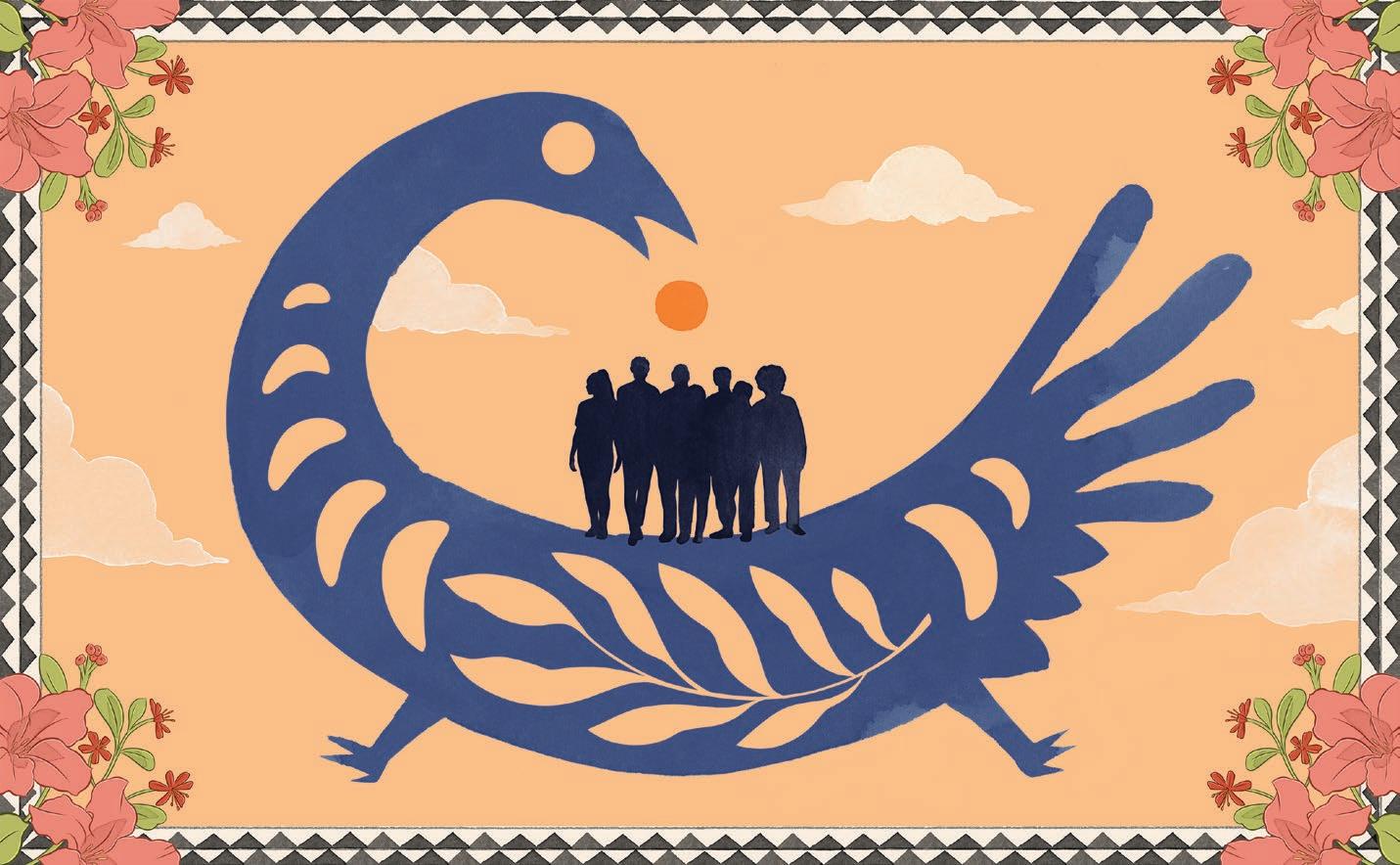
“Africana studies,” says Tukufu Zuberi, Lasry Family Professor of Race Relations, “is the study of what it means to be human.”
Charles, also a professor of sociology and Africana studies and faculty co-director of the Office of Penn First Plus, adds, “That means it is not just about racial justice, but about environmental justice, gender, sexuality, social class, and more. When your frame is, ‘What does it mean to be human?’ rather than a single discipline, you have wonderful opportunities.”
A History of Africana Studies at Penn
The Center was founded in 2002 with Zuberi as its inaugural director, and the Department came 10 years later. Both of these grew out of other Penn initiatives and programs on the African diaspora, including the Afro-American Studies Program, the Center for the Study of Black Literature and Culture, and the Africa Center.
“Africana studies at Penn has a long history,” says Zuberi. “You have to date it back to the ingenious work done by Du Bois in writing the Philadelphia Negro [published by Penn in 1899], even though Penn did not have the courage or fortitude to offer him a proper job. But even with those restrictions, he wrote what is now considered a classic in Africana studies.”
Zuberi cites other leaders in Black intellectual thought at Penn, too: William Fontaine, GR’36, who became the University’s first fully affiliated and first tenured Black faculty member (in 1951 and 1963, respectively); John Edgar Wideman, C’63, HON’86, who taught Penn’s first African American literature course in 1968; and Sonia Sanchez, a poet and leader of the Black Arts movement.
“These people,” Zuberi says, “laid the foundation to create an Afro-American Studies program,” which began in 1972. “Students played a role, too,” he adds, including protests led by the Black Student League (formerly the society of
OMNIA | ALL THINGS PENN ARTS & SCIENCES
I 30
I


African and Afro-American Students). “They demanded there be more Black students and Black professors.”
Zuberi goes on to describe the expansion of Black studies in the 1980s and ’90s until what he calls “a moment of reckoning” in the late ’90s, a point in time when the study of Africa and its diaspora was still spread across the University. “We needed a new model,” Zuberi says. “So, we brought together many disparate efforts and resources to create the Center for Africana Studies.” That lead to a doctoral program, which began in 2008, and finally, the Department of Africana Studies, established in 2012.
This type of progression is similar to what has happened in the discipline more broadly, Adebanwi adds.
Interdisciplinary by Design
Today, Penn builds from its beginnings with Du Bois and takes a diasporic approach— even down to what it calls itself. “We were an early adopter of the label ‘Africana,’” says Charles. “Names like ‘Black studies’ or ‘African American studies’ have historical specificity and they’re American-centered. We have a pretty even distribution of social scientists and humanists, we have AfricanAmericanists, experts in Afro Latin America and the Caribbean, and people who study matters internal to Africa. With the name ‘Africana studies,’ we’re purposely reflecting that our faculty have a wide range of diasporic expertise.”
The very idea that drawing from multiple disciplines can create a richer, more nuanced understanding of complex topics seems almost a given in today’s university environment, where courses are cross-listed, double majors or dual Ph.D.s are not uncommon, and faculty members have appointments in multiple schools. But that was not always the case. Today’s emphasis on interdisciplinarity, Johnson explains, grew out of research in Africana studies.
“Black feminist scholars like Kimberlé Crenshaw, who coined the term ‘intersectionality’ in 1989, and members of the Combahee River Collective [a Black
SPRING/SUMMER 2024
(Top to bottom) Joseph R. Washington, Jr., professor of religious studies and former director of the Afro-American Studies Program, speaks with students Donna Stockton and Michael Randolph in this image from the November 1980 issue of The Pennsylvania Gazette; John Wideman, C’63, HON’86, who taught Penn’s first African American literature course, with Penn students, 1968.
of The Pennsylvania Gazette ; University Archives 31
Joan Ruggles, courtesy
feminist political group founded in 1974] are the ones who said, ‘Wait a second. We can’t consider all these variables individually,’” Johnson says. “This is a popular way of thinking now, even in STEM fields.”
Timothy Rommen, Davidson Kennedy Professor in the College and a professor of music and Africana studies, recalls starting at Penn in 2002 as a member of the Department of Music “fresh out of grad school.” Zuberi, who was then the director of the Center for Africana Studies, knew that Rommen specialized in Caribbean music and invited him to one of the Center’s events. Rommen says it gave him “two homes” at Penn.
“My home in Music is really valuable. But I have another home in Africana, where we are driven by common concerns and urgent questions,” Rommen says. “When
sociologists are hanging around folks like me and Herman Beavers [Julie Beren Platt and Marc E. Platt President’s Distinguished Professor of English and Africana Studies], they might frame questions differently than they would to people in their discipline, and vice versa. The interdisciplinary nature of Africana makes it so vibrant.”
With nine hires in 12 years in the fields of history, religion, political science, anthropology, and Africana studies, this collaborative dynamic continues to expand. “Penn is already a leader in the field,” Adebanwi says, “but with the scale and resources of the University, we’re positioned to be the leader in the field of Africana studies worldwide.” That includes community building, which starts with students, sometimes before their first year even begins.
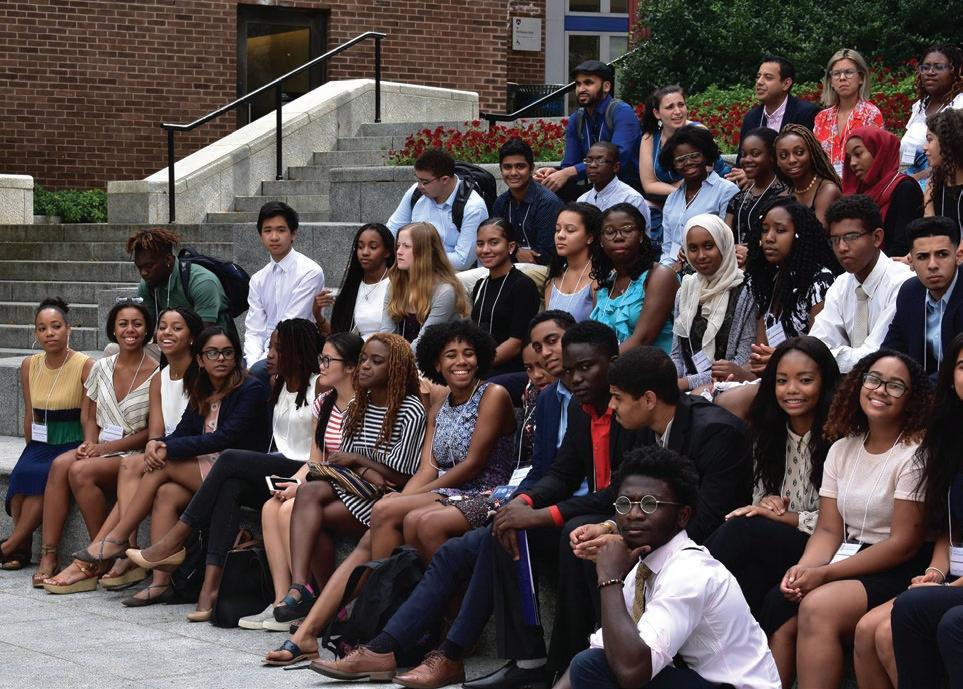
Belonging and the Summer Institute
The Center for Africana Studies Summer Institute for Pre-First Year Students program, free of charge and open to admitted students across the University, hosts about 80 students per summer for a week of courses taught by standing faculty ahead of the semester’s start. Participants also benefit from establishing relationships with faculty advisors, graduate fellow mentors, and peer mentors (current undergraduates who participated in the program). Students determine the amount of support and connection they need, and faculty follow their lead.
“Some students attend only their two advising sessions, while others come to my office to study nearly every day for

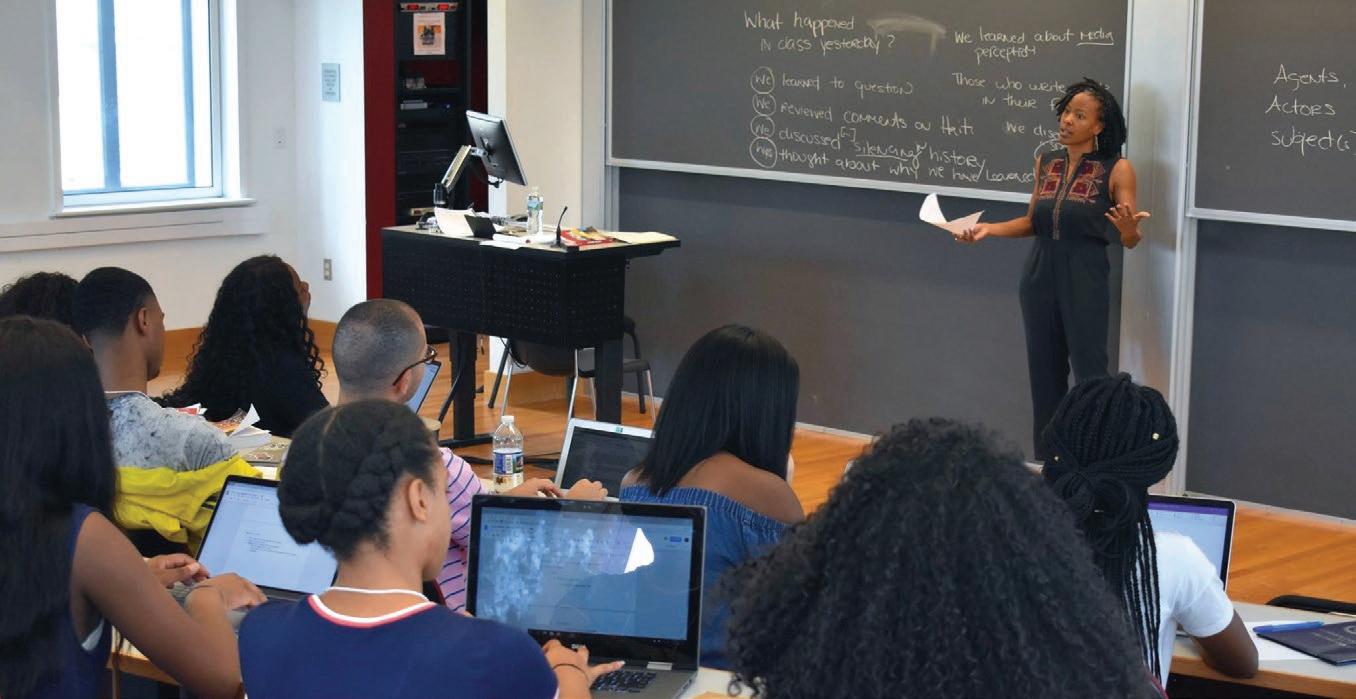
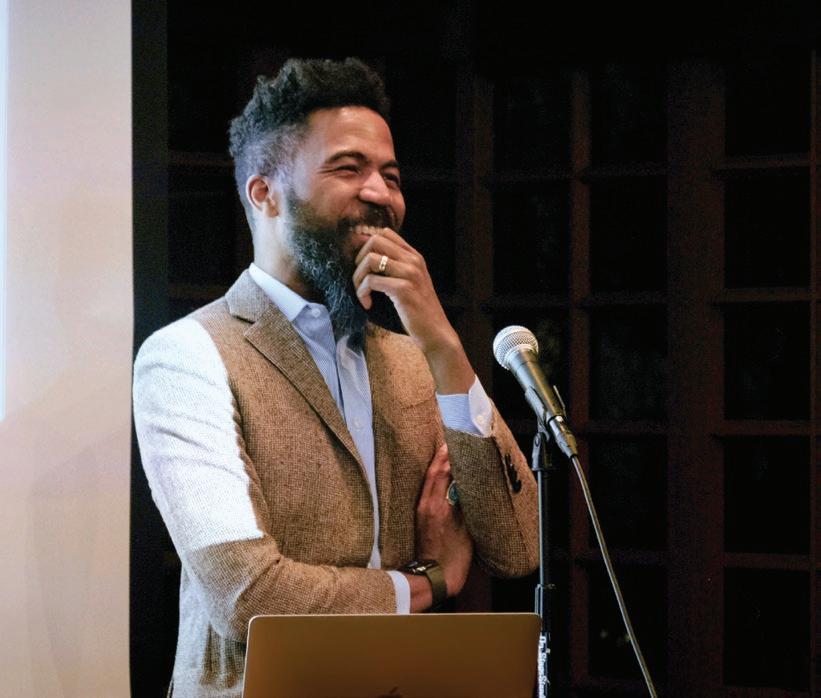
OMNIA | ALL THINGS PENN ARTS & SCIENCES
The Summer Institute for Pre-First Year Students program, free of charge and open to admitted students across the University, hosts about 80 students each year for a week of courses taught by standing faculty ahead of the semester’s start. Poet, artist, and MIT professor Joshua Bennett, C’10 (bottom right), attended the Institute as a student, an experience he calls “utterly transformative.”
32
Courtesy of Africana Studies; Eric Sucar, University Communications; Alex Schein
their four years,” says Charles, who has directed the Institute since 2006. “We’re here to support students when they need it, and we’re there to celebrate their achievements.”
It tends to have a lasting impact for participants. “The Summer Institute was life changing,” says Joshua Bennett, C’10, now a poet, artist, and MIT professor. “I had never encountered the idea of global Black culture and a diasporic vision of Black culture in the way I did there. I learned about things like samba from Timothy Rommen and Black lives in Latin America that were utterly transformative.”
For Rommen, the sentiment is mutual. “Teaching in the Summer Institute is one of my favorite things we do,” he says. “It is a profoundly communal and intellectual space that creates a sense of belonging that lasts long after the week ends.”
A Community with Students at its Core
Student support continues beyond the Summer Institute. Charles says that faculty in the department are intentional about majors and minors, and about graduate students having opportunities to interact with mentors and advisors outside of the classroom—in office hours, at casual check-ins, or at Center events. As the Department and Center grow, leadership works to ensure that students remain a top priority.
Each year, the Department graduates around 10 to 12 majors and 30 minors. The graduate student group consists of around 15 students, pursuing independent research and often acting as mentors and instructors for undergraduates like Sophia Weglarz, C’24, an Africana studies and history double major who found a home in the Department. “I’ve always harbored a love for Black history. It’s my history—it’s American history,” she says.
When she started taking Africana studies classes, she says she was surprised by the range offered. “I didn’t want to take a sociology or English class,” she says. “But I’ve really come to appreciate how

the major takes you down these different paths, because they challenge you to think beyond the frame of reference you’re most comfortable in.”
I’ve always harbored a love for Black history. It’s my history—it’s American history.
Weglarz will attend law school after graduation, and she says Africana studies gave her context for the relationship Black Americans have with the law, historically and now. “Courses I was initially reluctant to take helped me build this understanding,” she says. “Without them, attending law school and working toward a career as an advocate wouldn’t have even crossed my mind.”
Rose Poku, a second-year doctoral student pursuing degrees in Africana studies and comparative literature, says she chose Penn largely due to the outstanding faculty and the “ethics of care” she saw in the department, giving special recognition to her dissertation committee, fellow graduate students, and Carol Davis, the department’s administrator and graduate coordinator.
“I get to work on my research with a team of Black women who are brilliant and engage with me so thoughtfully and generously,” Poku says.
Poku, who will teach her own course on comparative literature next semester, connected with undergraduates as a teaching assistant in an Intro to Africana Studies class taught by Jasmine Johnson, an assistant professor of Africana studies. “It’s been a great experience,” Poku says. “I really like showing them how enormous the Black world is and seeing them excited.”
SPRING/SUMMER 2024
33

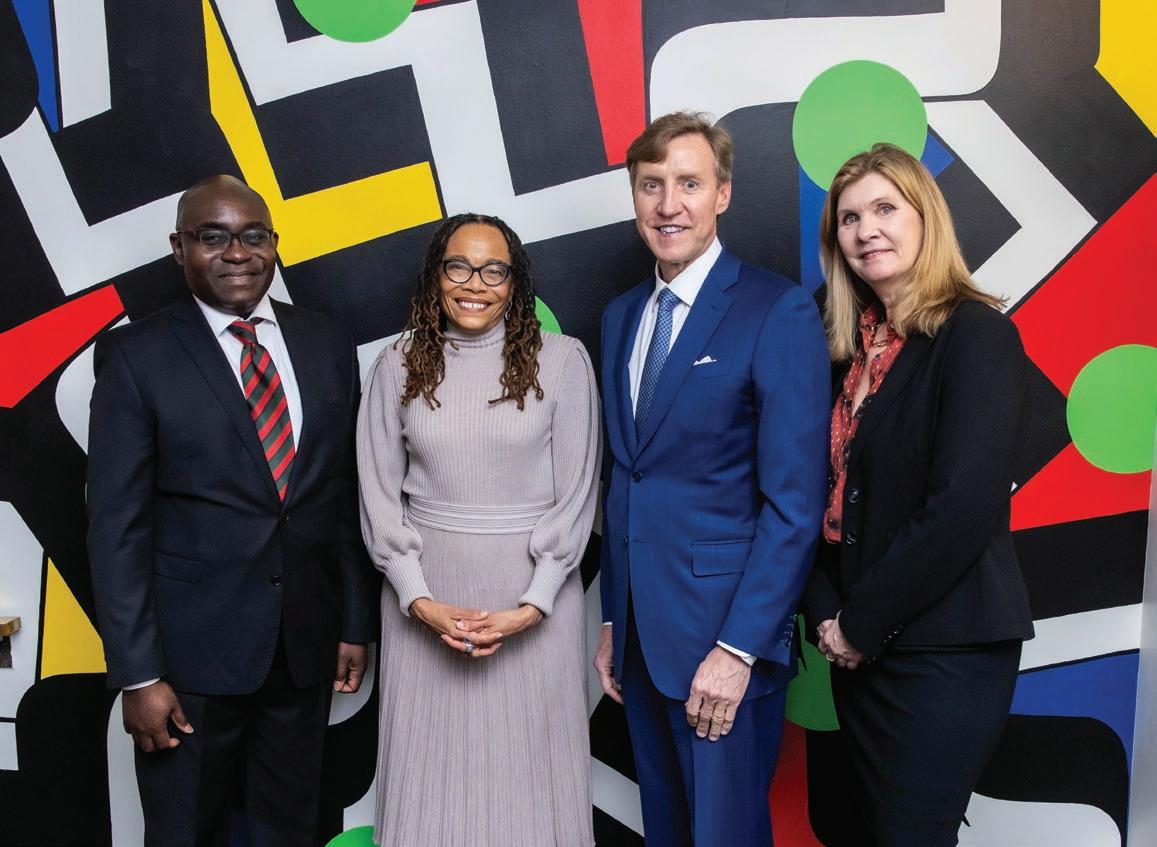

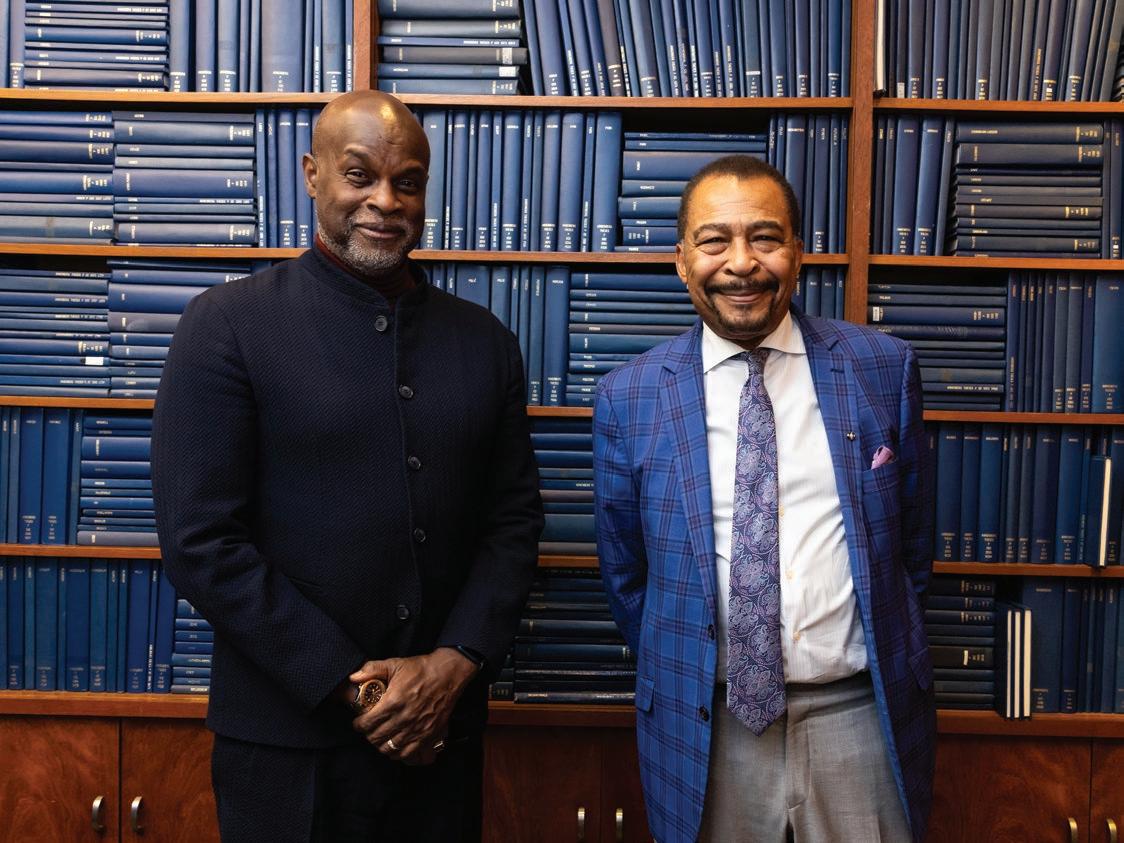
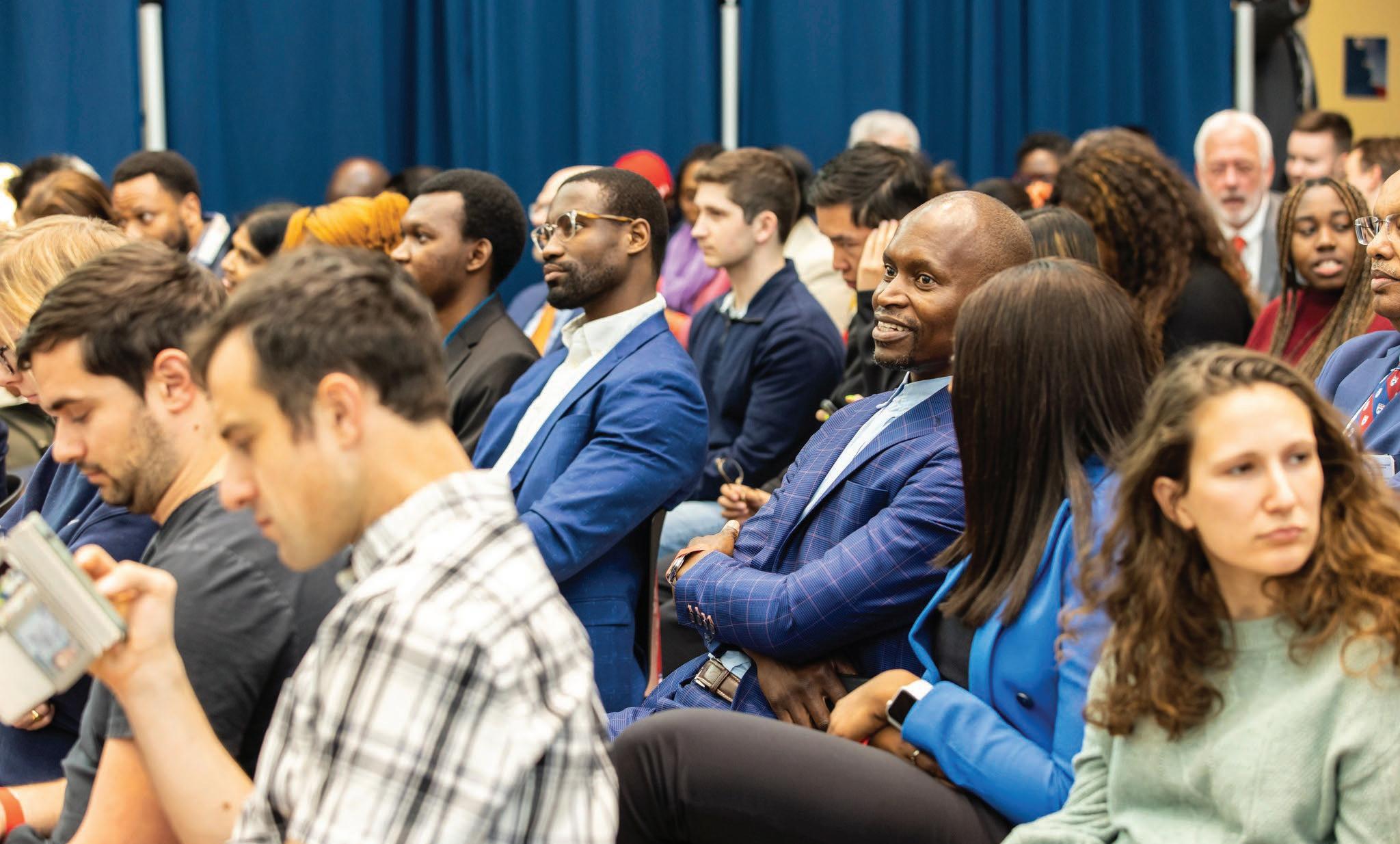
34
In the Neighborhood, Around the World Neighborhood,
Africana studies at Penn aims to connect the University community with people beyond it, whether residents of Philadelphia or faraway members of the African diaspora. Sometimes that means leaving campus. One example is the Academically Based Community Service course August Wilson and Beyond, co-taught by Beavers and Suzana Berger of Penn’s Netter Center for Community Partnerships. The class, run since 2017, is open to Penn students, West Philadelphia residents, and local high school students. Together, participants read August Wilson’s plays and write monologues performed by professional and amateur actors.
Weglarz has supplemented classroom learning and campus research with visits to sites including the Historical Society of Pennsylvania, Marian Anderson Museum, and Paul Robeson House. She works at the Robeson House as an intern focused on community outreach and individual Black history preservation.
“The connections between Africana studies and the community run deep,” Weglarz says. “My experience with the department allows me to learn Black history outside of the classroom.”
These connections also mean bringing scholars, activists, and writers to campus through annual events such as the MLK Social Justice Lecture, the Higginbotham Memorial Lecture, and Brave Testimony, an event in honor of National Poetry Month. Under Adebanwi’s leadership and with University support, the Center is expanding this type of programing. Three years ago, it received funding to begin a distinguished lecture series in African studies, and Kelly Harris, senior staff director, recently joined the Center with the charge to grow community connections and take a global view.
For example, the Center has established a relationship with Riverside Correctional Facility and, in July 2023, offered a class on Malcolm X. Harris is out in the community, teaching classes on Black history and the civil rights movement at churches in Philadelphia and New Jersey. In spring 2024, the Center hosted a convention for local high school students, offering opportunities to address contemporary challenges and create actionable solutions.
Around that same time, the Center hosted Julius Maada Bio, President of Sierra Leone, for a lecture on democracy, progressive politics, and inclusive development in Africa. And in collaboration with Penn’s Perry World House, it presented a lecture on 30 years of democracy by Kgalema Petrus Motlanthe, the former President of South Africa. Recent guests have also included Mokgweetsi Masisi, President of Botswana; Yemi Osinbajo, Vice President of the Federal Republic of Nigeria; and Wole Soyinka, a playwright, novelist, poet, and the first African to win the Nobel Prize for Literature.
“Philadelphia has a rich history of people of African descent,” Adebanwi says. “So, we are trying to broaden our scope and engage beyond the academy. We’re well positioned to grow this engagement and connect locally, nationally, and internationally.”
The Future of Africana
The field, the Department, and the Center have a lineage of innovation and growth, something that today’s leadership continue to steward. Bennett says that his experience as an Africana studies major provided him with a model for dynamism. “Their willingness to reinvent themselves has been a bright light,” he says. “As I work to expand the infrastructure around Black studies at MIT, the growth and possibilities I saw in my time at Penn
and the Summer Institute allow me to be excited and think, ‘Yeah, let’s build something new.’”
At Penn, leadership in Africana studies is in a moment of building, too. Looking toward the future, faculty members contemplate and discuss changes and new offerings they would like to see, including fellowships for visiting graduate students, postdoctoral fellows, and faculty and new academic experiences for students. One of the biggest opportunities is a dedicated space to gather and cultivate community. Rommen and Johnson, whose classes often involve hands-on or large-scale work, say that with creative thinking, the space could be used to host signature events and offer innovative courses. It’s all with an eye toward continuing to grow as the field does.
The future of Africana studies is wide-ranging, Zuberi says. “It’s understanding the relationship of Black bodies to the rise of modern social media and technology, to the rise of the human genomic project, to the rise of robotics, to the rise of AI, and so on,” he says. “This is the space of Africana.”
It’s also a transitional discipline, he adds—one that is working to decolonize spaces and traditional thinking and looking to “pull people into a new modern,” space that rejects racialized and gendered hierarchies.
The people who sustain Africana studies at Penn are ready to take on these challenges, Adebanwi adds. “We have fantastic faculty. We have excellent students. We’re working in all these different areas of global Africa. Now, we’ve got to fully claim our moment.”
Lauren Rebecca Thacker is a Providencebased higher ed writer who covers topics from poetry and politics to energy science and ocean engineering.
The Center and Department host many events on campus. From top left, clockwise: A conversation about race and politics with Professor Camille Charles and Ben Jealous, a professor of practice who studies social change, media, and emerging technologies; the 2024 MLK Jr. Social Justice Lecture given by Professor Dorothy Roberts, second from left, shown with Professor Wale Adebanwi, Interim Penn President J. Larry Jameson, and Annenberg Dean Sarah Banet-Weiser; a visit from the former Vice President of Nigeria; the audience at an event with the President of Botswana; and the W.E.B. Du Bois Lecture in Public Social Science with Professor Tukufu Zuberi and Sociologist Alden Morris.
SPRING/SUMMER 2024
35
Krista Patton; Eddy Marenco
Just Right
Just Right
The certificate programs offered by the College of Liberal & Professional Studies fill an educational need for students who want to learn about an area but don’t need a full degree.
By Susan Ahlborn
AAdoctoral student at Harvard. A wellness counselor. A social studies teacher. A professional dancer and instructor. An assistant director at a shelter for homeless women and children. A director of clinical development for a gene therapy program. A devoted science fiction reader and writer. An NBA team’s physical therapist and wellness lead.
These are a few of the hundreds of people who have turned to the College of Liberal & Professional Studies (LPS) certificate program to learn something new, advance their careers, or follow a dream.
“Our mission includes making a Penn Arts & Sciences education accessible to different types of learners, both through availability and affordability,” says Nora E. Lewis, Vice Dean for Professional and Liberal Education. “And part of the LPS DNA is innovation in pedagogical design and delivery. Honestly, being able to offer certificates, and especially online certificates, was kind of out there for a traditional Ivy League university. It’s a very different way of thinking about education.”
Starting in 2015, as LPS researched and designed its all-online Bachelor of Applied Arts and Sciences, the staff and faculty also saw a need for focused programs for people who wanted to learn about a specific area but didn’t need a full degree. Drawing on research of best practices in adult and online learning and the expertise of Penn’s faculty, along with 130 years of experience working with adult learners, LPS launched the certificate
program in 2018. There was immediate interest, which ratcheted up even more during the COVID-19 pandemic and resultant turn to virtual education.
For some, it’s the start of a path to a degree, a way of getting their feet wet. Others want to learn about a specific topic, for professional or personal reasons. “We survey students on what they want to achieve,” says Tomea Knight, LPS senior director of strategic marketing and outreach. “It can differ from program to program. But many are trying to quickly train while working or managing other responsibilities, and they can use what they’re learning right away.”
The number of certificates available and classes offered has continued to grow, based on feedback from students and input from employers, along with new topics of interest that develop. “The students make it so clear what we need. They keep us on our toes,” says Jaime Kelly, director of certificate and nondegree programs.
For most standalone certificates, students complete four courses online, usually a combination of required and optional classes. They’re taught mostly asynchronously, which lets students—most of whom have other responsibilities—do the work when they have time. Each course is eight weeks, and a certificate can be completed in a year. Despite being online and coming from all over the world, students truly connect with each other and the faculty, says Knight. “There’s such diversity,” she adds. “It’s the most exciting thing.”
Year introduced 2018
Number of standalone certificates now offered 13
Number of certificates awarded
468
Number of current students
556 States represented 14 Nations represented 8
OMNIA | ALL THINGS PENN ARTS & SCIENCES
THE NUMBERS BY THE NUMBERS
BY
36
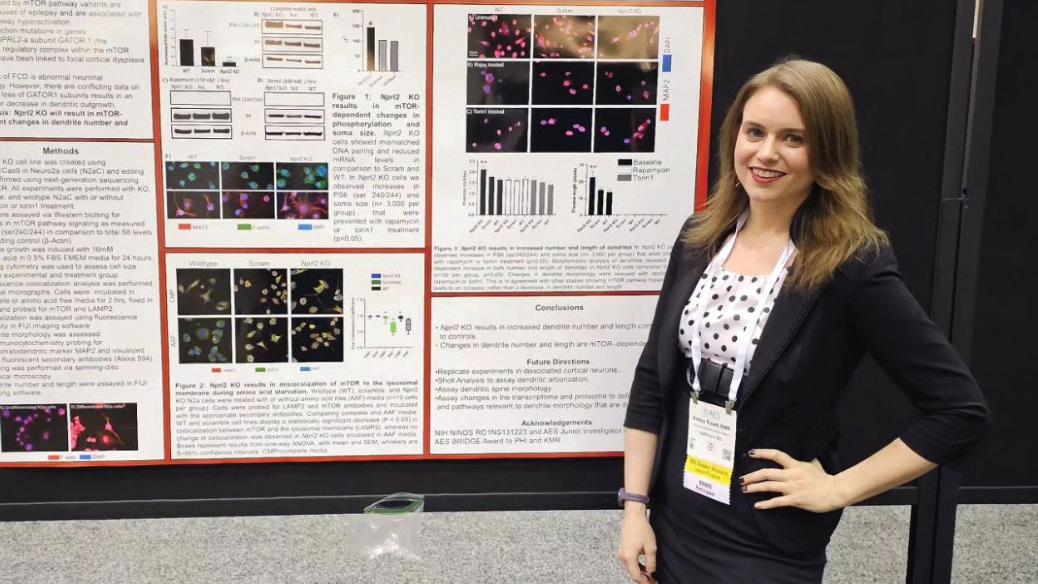
Kelley Roark
After years of curiosity and independent study, Kelley Roark was finally about to start her college education. She discovered, though, that her non-traditional path would present challenges to completing a neuroscience minor within the necessary timeframe.
Unaddressed health issues had made high school difficult for Roark. But when medical intervention radically improved her life, she was inspired to become a medical assistant. She saw patients with complex medical histories, and soon found she was “curious about the molecular, biological, and neurological underpinnings of these issues.” To learn more, she started reading academic papers and came across the molecular target of rapamycin (mTOR) and its broad applicability to chronic diseases of aging, neurodevelopment, and epilepsy.
In 2019, Roark enrolled at the University of Maryland to study public health and take some premed courses to learn more about mTOR. She also joined the kinesiology lab of Associate Professor Sushant Ranadive, a position she maintained during the pandemic, and which helped her decide to pursue translational research in neuroscience. Timing, prerequisites, and affordability, however, made it difficult to take the classes she wanted. “These barriers just kept coming up,” she recalls.
She was also dealing with a personal crisis that increased her time pressure but continued to look for a way to pursue her education. She saw an ad for LPS on Facebook and applied to the Certificate in Neuroscience program, which she began in the summer of 2022. “That has made all the difference,” she says.
LPS helped Roark align her certificate classes with her bachelor’s studies and also provided resources for the personal challenges she faced, even helping her arrange her schedule and fit in an extra philosophy class to accommodate her need to graduate quickly.
Roark says the Penn program also provided her with a sense of belonging. “I just wasn’t able to fit in all the in-person classes I wanted and would have had to wait a year to access some again,” she says. “The LPS classes were very dense and challenging, but convenient for the non-traditional student. I immediately felt like I was in the right place.” She found colleagues and mentors within and outside of Penn. With their encouragement, she published a paper and reached out to Philip Iffland, a researcher at the University of Maryland School of Medicine, who is studying mTOR.
Roark is now a lab technician in Iffland’s translational research lab and is applying to Ph.D. programs. She’s finally researching the molecular aspects of neurological disorders that have long fascinated her. She’s presented research at the American Epilepsy Society and is currently working on an original research article with Iffland.
“If you have an idea and you think it’s important enough,” she says, “that can motivate you to get you where you need to go, even in dire circumstances.”
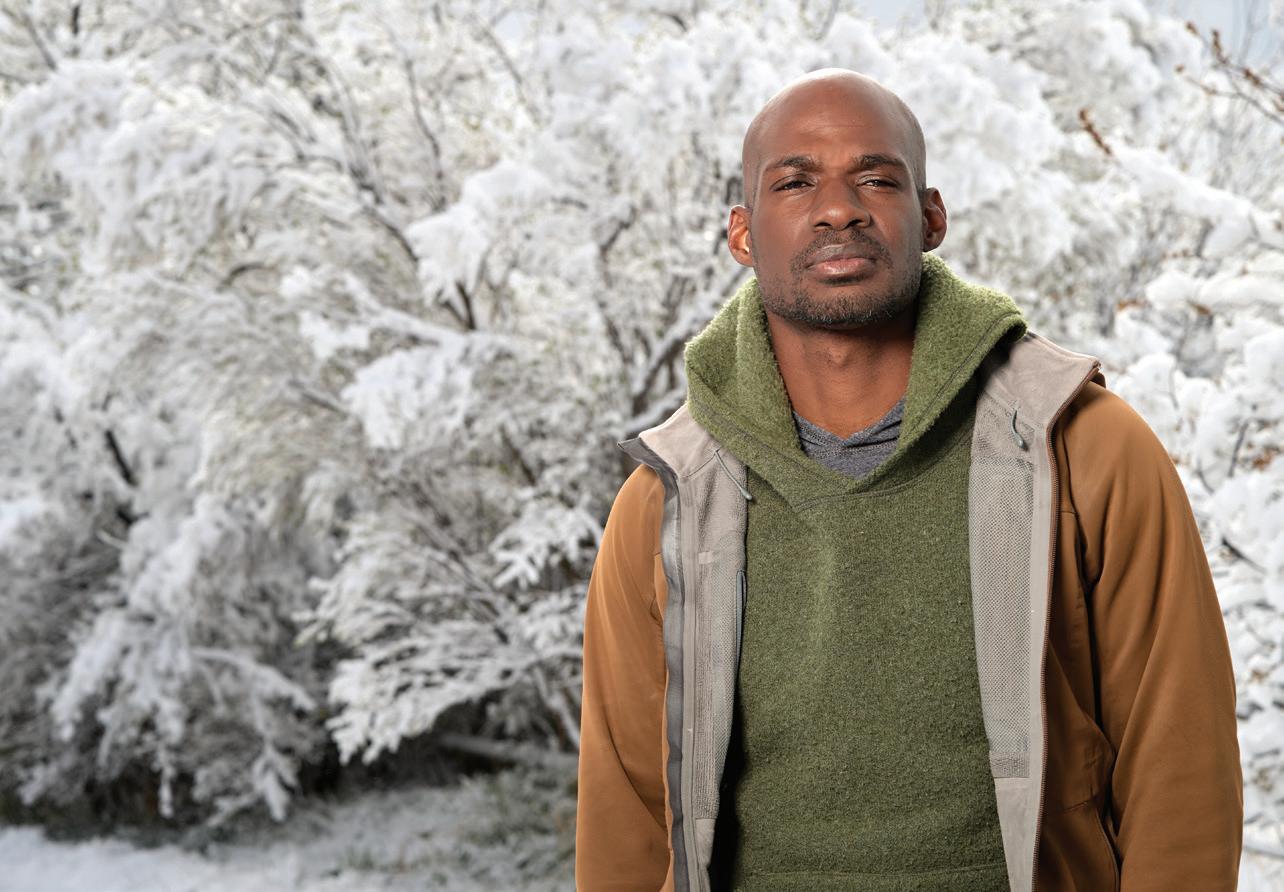
Robert Marshall
In 2003, two years into college, Robert Marshall joined the Army, spurred by the 9/11 attacks. After serving in Iraq, he completed his degree in history and pre-law and then reenlisted, ultimately serving 10 years as an infantry officer.
“When I left the military I had, I would say, a pretty difficult transition,” Marshall says. To cope and heal, he discovered mindfulness and then positive psychology, which led him to Penn, where the field was developed. “Now that I had some equilibrium, I was trying to figure out, what did I want
SPRING/SUMMER 2024
Courtesy of Kelley Roark
37
Kelly Gorham
to do?” he says. “Loving positive psychology, I wanted to do the graduate program, but I wasn’t ready for that level. So, when the certificate program became available it was great to kind of dip my toes in.”
He enrolled in 2019, and from the first, Marshall says, “I loved it. I really excelled in it. I love the structure of it. I love the virtual. It allowed me to get back into the academic framework and not be overwhelmed, but still challenged. And it was also subjects I was interested in, so it was exciting.” He was also more motivated and disciplined than he’d been as a college student. “When you’re an undergrad you’re young. You don’t know who you are or how you work, so coming back, it was easier for me. I had more life experience; I knew how I function as a person.” It even got him through the math, a subject he’d struggled with earlier.
Collaborating closely with his peers helped him develop more cooperative practices as a self-employed entrepreneur. “It gave me the tools to reach out for support in a safe way when I feel apprehensive about asking for help. As a veteran, I felt that I could really speak about my experience and feel heard and supported,” he says.
Marshall is now in Montana, where he’s begun a business making men’s grooming products and is enjoying working with his hands and creating something. He also has a wellness company called Flourishing Man that combines nature with positive psychology, and he plans to come back to Penn to earn a master’s degree in positive psychology and continue his work to help male veterans and other men.

Nile Miller
After Nile Miller earned his master’s degree in international relations, he applied for a fellowship in Penn’s Office of Global Initiatives. He saw that working with data was part of the position description, and figured he could learn how to do that. He got the fellowship and became more and more interested in the possibilities of data to help visualize facts and statistics and to tell a story. “I developed an interactive map that showed where Penn researchers and students were working,” he remembers.
His interest continued to grow after he moved to the International Student and Scholar Services (ISSS) office at Penn, and when the Certificate in Data Analytics became available, he decided it was a good place to begin. He enrolled in 2021. “I thought I should start with something smaller to get a taste of what it’s like to study and work at the same time,” says Miller. “It was an opportunity to get my hands onto some actual coding. And I also thought it might be useful for my job.”
Early in the COVID-19 pandemic, Miller did find that for his ISSS work, he was drawing on the skills he was learning
in his certificate classes. “There were a lot of laws and all sorts of measures being passed that related to international students. So, our office had to do a lot of persuading and working with government stakeholders,” he says. “It was really important to have accurate data and be able to tell those stories.”
LPS launched the certificate program in 2018. There was immediate interest, which ratcheted up even more during the COVID-19 pandemic and resultant turn to virtual education.
The program covered both tools and the analytical side, says Miller, like understanding the appropriate method of visualization for particular data types, the fundamentals of the R programming language, and “how to create a chart that is accurate and isn’t misleading.” He appreciated the community he found. “There’s a lot of material and you have to study and do all the readings and the problem sets. So, having a group of people to struggle through that with was really useful. We were able to not just talk through the tech stuff but, I guess, commiserate a little.”
OMNIA | ALL THINGS PENN ARTS & SCIENCES
38
Brooke Sietinsons
Miller also took advantage of other opportunities at Penn, like participating in a day-long hackathon held by the Penn Program on Opinion Research and Election Studies. He became involved with a nonprofit called LaunchCode, a coding boot camp with a diverse cohort, and started thinking seriously about a career pivot.
He posted his final project—an interactive data browser about public school quality in Pennsylvania—online to see what reaction it might get. The head of Tech Impact’s Data Innovation Lab reached out to offer him a fellowship.
Miller is now working full-time at Advanced Technology Services Group and is hoping to do projects on the side related to social impact issues like food security. “Data doesn’t speak for itself,” he says. “Data analytics is a very technical field, but it involves a lot of thinking about the humans behind the numbers, how to best visualize the data and make an impact.”

Katie Shelburn
Katie Shelburn started in real estate in high school, working at the desk of a local firm. She continued in the field as she earned her bachelor’s of science in human performance management and afterward, eventually worked
in operations, sales, and leadership for different firms. But even as she advanced and moved around in her field, she was realizing she’d left something behind.
“I’d spent so much time focusing on building skills in real estate and business management, but my passion is really writing,” says Shelburn. “That’s what I was always enthusiastic about. I wanted to tilt my career in a direction that would involve more writing.”
Part of the LPS DNA is innovation in pedagogical design and delivery. Honestly, being able to offer certificates, and especially online certificates, was kind of out there for a traditional Ivy League university. It’s a very different way of thinking about education.
She looked for a certificate program because she wanted “training wheels for getting back into school, especially studying something new while I was working.” She googled Penn because it was local, and she liked that the LPS classes were virtual and self-paced.
Shelburn enrolled in the Certificate in Professional Writing in March 2023. She got up to speed quickly and found setting her own schedule worked well as she balanced school, work, and life, and then later when she decided to transition into freelance writing. She was also able to immediately use what she was learning, both as a full-time real estate employee and then in her “side hustle that I eventually took full time.”
Shelburn’s favorite class turned out to be the required first course, Fundamentals of Professional Writing. “It really covered proper analysis and critical thinking, and there was also a poetic reasoning section that complemented that focus from a creative perspective. It helped me approach problem-solving in a new way,” she says. “I got great value out of that course, which took me through the rest of the program. And I liked that you could customize other classes. I knew the niche that I was going into and what areas I needed to study.”
In contrast with other programs she’d taken, she “found all of the content useful,” she says. She also was able to connect with instructors outside of class. “Because I was starting something new, I wanted to meet as many people as I could who were involved in writing, just to talk about different resources, local places where I could meet other freelance writers,” she says. “They were super supportive. It really helped me transition into that new industry.”
Omnia Associate Editor Susan Ahlborn has worked as a communications professional in healthcare and academia, and loves learning cool things and writing about them.
SPRING/SUMMER 2024
39
Dennis Degnan Photography

protections for free speech embodied in the First Amendment and the tradition of academic freedom on college campuses, which stems from the rise of research universities at the turn of the 20th century.
The idea of the hard promise was a double entendre, the notion that a commitment to free expression is both a firm promise and a di icult one.
The second forum, “What Are Universities For?” delved deeper into the purpose of higher education. Moderator Laura Perna, Penn’s Vice Provost for Faculty, started off by asking that question directly of the three panelists: Sniegowski; Herman Beavers, Julie Beren Platt and
Marc E. Platt President’s Distinguished Professor of English and Africana Studies; and Peter Struck, Professor of Classical Studies.
Acknowledging that elite universities historically served as perpetuators of class, wealth, and power, Sniegowski said that universities ideally are “places where new understanding of humanity and the rest of the natural world is developed and shared.” Beavers responded that universities are committed to “open-endedness” and are places where students and faculty can use their voices, while Struck described the university as a “disinterested public square” where people can pursue ideas for their own sake.
Subsequent Living the Hard Promise topics were presented as part of the long-running Penn Arts & Sciences series 60-Second Lectures, with topics
including “Asian America and the Hard Promise,” “The Liberating Arts,” and “Why Listening Matters.” (Videos of these short talks can be viewed at www.sas.upenn.edu/60-second.) In addition, a lunchtime discussion under the Living the Hard Promise umbrella focused on understanding social media discourse.
“These forums are about addressing difficult topics,” Wenger says, “but they’re also a step toward creating the kind of campus community we all want. I believe we can rise to the challenge. In SAS, we believe that the liberal arts provide the essential tools to enable us to talk through the difficult problems of any moment in time. This is a small attempt to do just that.”
Jane Carroll, CGS’00, is associate director of donor relations for the Penn Arts & Sciences Office of Advancement and writes frequently for Omnia
For more information on the Living the Hard Promise series, visit web.sas.upenn.edu/conversations.
Brooke Sietinsons; Alex Schein
41

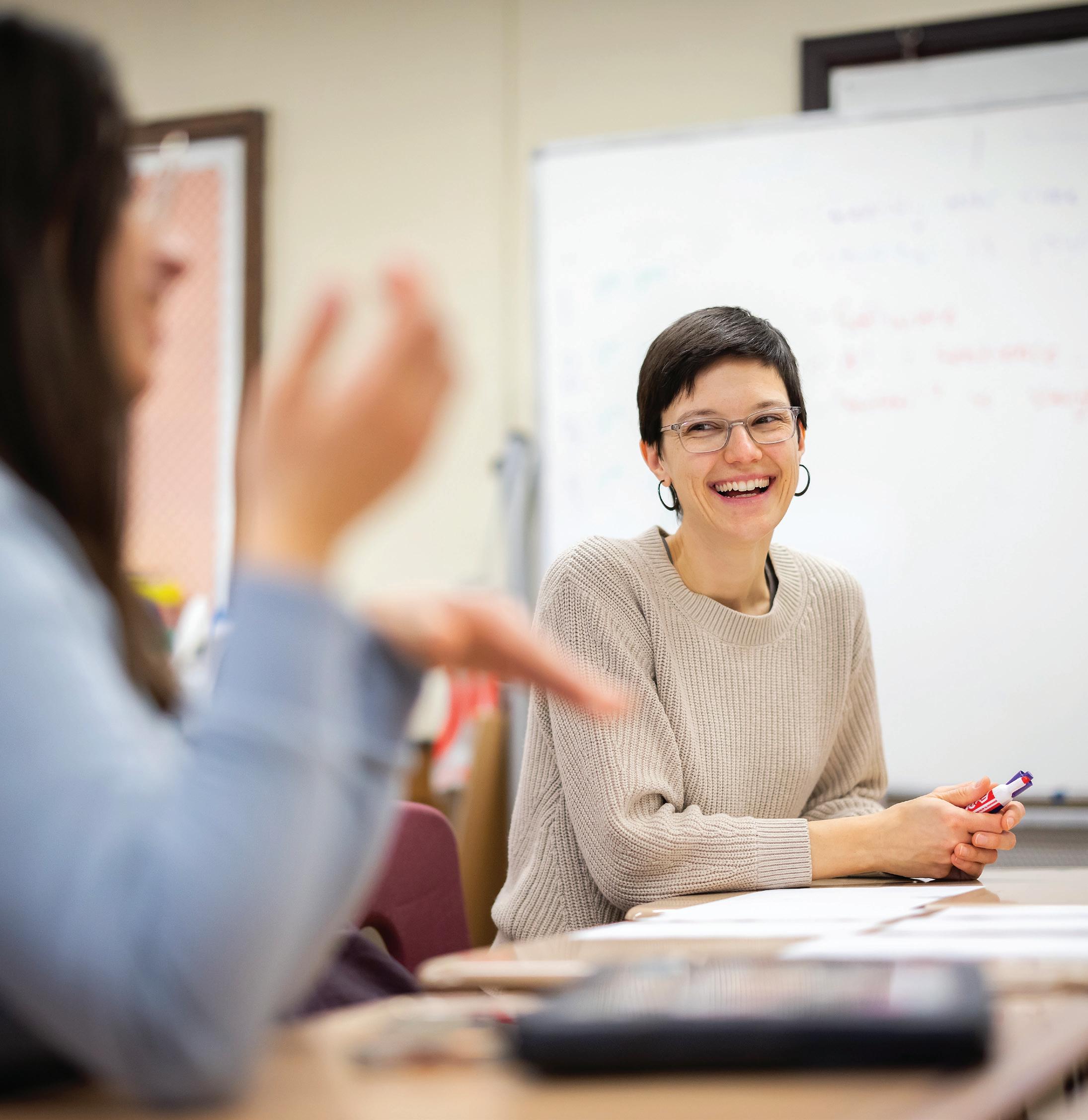
Lessons in Philosophy
Lessons in Philosophy

As philosophers-in-residence at the Academy at Palumbo in South Philadelphia, Ph.D. students Jacqueline Wallis and Afton Greco are teaching high schoolers how to contemplate life’s big questions.
By Erica Moser
by Eric Sucar, University Communications
Photography
42

Afton Greco stands in front of 23 ninth graders in a world history class at the Academy at Palumbo in South Philadelphia, her backdrop a slideshow with passages from Leviathan by 17th-century English philosopher Thomas Hobbes. Greco, a fourth-year Ph.D. student in the Department of Philosophy, is sharing strategies for reading philosophical texts amid the students’ unit on the Enlightenment.
“Philosophers have a lot of really interesting things to say, but a lot of them are bad writers,” Greco begins. She instructs the high schoolers not to worry if they don’t understand everything on the first read, priming them with several questions to consider as they parse the text. Reading aloud, Greco pauses at bolded words to ensure students know what Hobbes meant by “nature” and “confederacy” and “industry,” and students share their thoughts on Hobbes’s conclusions about the need for authority to avert war. During the next period, Greco repeats the lesson, which ends with a spirited discussion among a few students about the meaning of a sovereign. Greco is one of two “philosophers-in-residence” at Palumbo, along with fellow fourth-year philosophy doctoral candidate Jacqueline Wallis, who taught the same lesson to two classes earlier in the day. Embedded in the school for about 10 hours a week, one of their roles is to provide what they call a “push-in,” which involves dropping into any 9ththrough 12th-grade class, by request of the teacher, to discuss philosophical issues around a topic related to the course material. They also run a Philosophy Club that meets weekly after school, help teachers come up with discussion questions for lessons, and provide other professional development.

The mission of the program is really to bring opportunities to engage in philosophy and philosophical thinking to students who don’t really have a chance to do that.
“They’re good at getting the students to think about difficult questions in a way I think is manageable,” says J.P. Leary, the Palumbo instructor who teaches the world history class and who previously brought in Greco and Wallis to talk about freedom. His goal, he adds, is to encourage his students to be curious and open-minded.
“Comfortable in Our Uncertainty”
Wallis began as a philosopher-in-residence in January 2023 with Yosef Washington, GR’23, then a philosophy Ph.D. student at Penn. Greco joined last fall. As their first push-in, Washington and Wallis taught a lesson about theories of time travel for a class reading Octavia Butler’s time travel novel Kindred
This past fall, Wallis also provided a lesson on philosophical theories of time for an astronomy class.
“It’s not a settled question what time is, so I think it was fun for the students—in a science class—to get exposed to questions that weren’t settled,” she says. She has also offered push-ins on evaluating evidence in environmental science and the ethics of stem cell technologies.
Wallis says teachers have told her a few times that more students participate in these discussions than normal. Greco thinks one reason is that “these students see Jacqui and me being comfortable in our uncertainty, which is maybe a newer thing for the students. So many of these questions are openended. There’s a range of answers that seem reasonable, but we don’t really know which one is right.”
Beyond Standalone Programs
The philosopher-in-residence program is an initiative of the Philosophy Learning and Teaching Organization (PLATO), a national group dedicated to bringing philosophy and ethics into schools. The program at Palumbo is administered by Penn’s Project for Philosophy for the Young (P4Y), which philosophy professor Karen Detlefsen—now vice provost for education—founded in 2014.
43
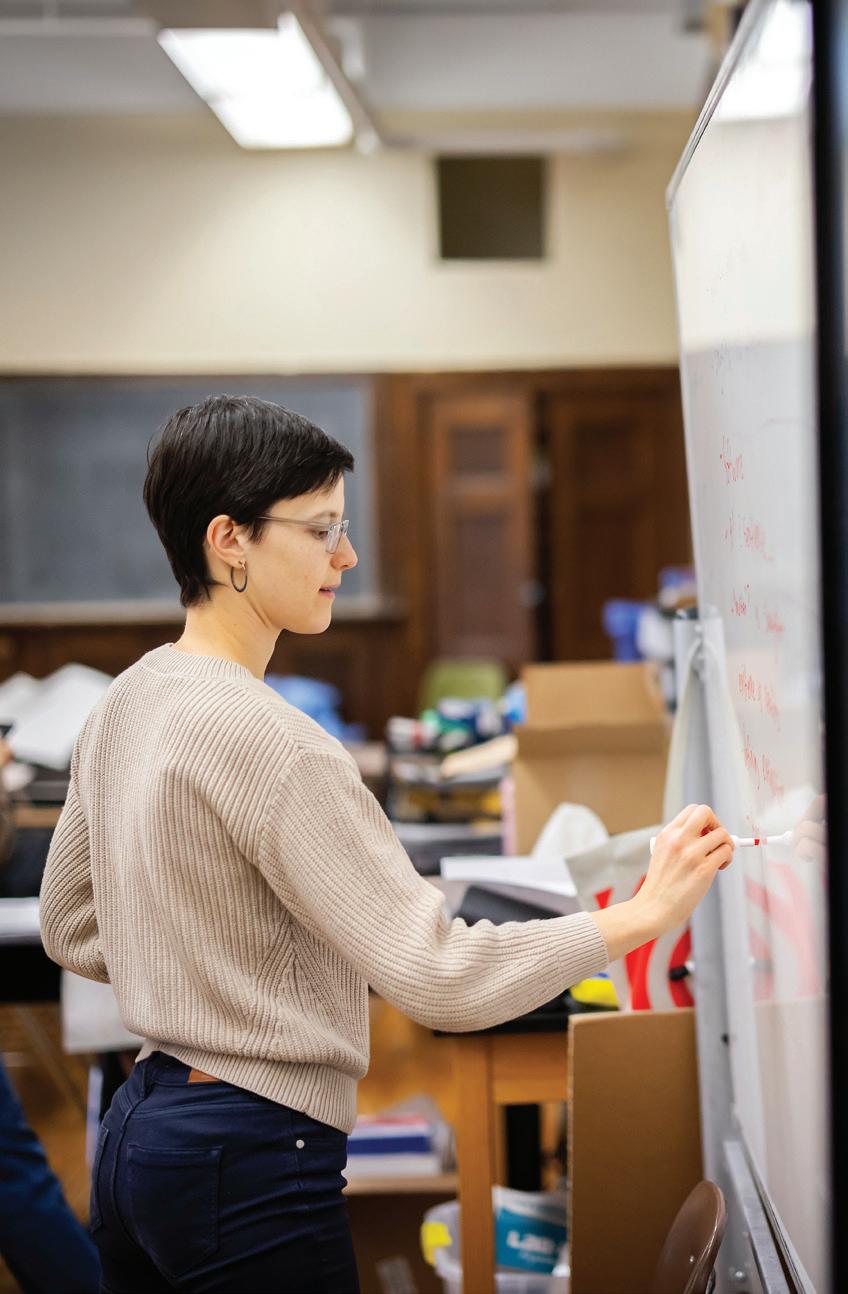

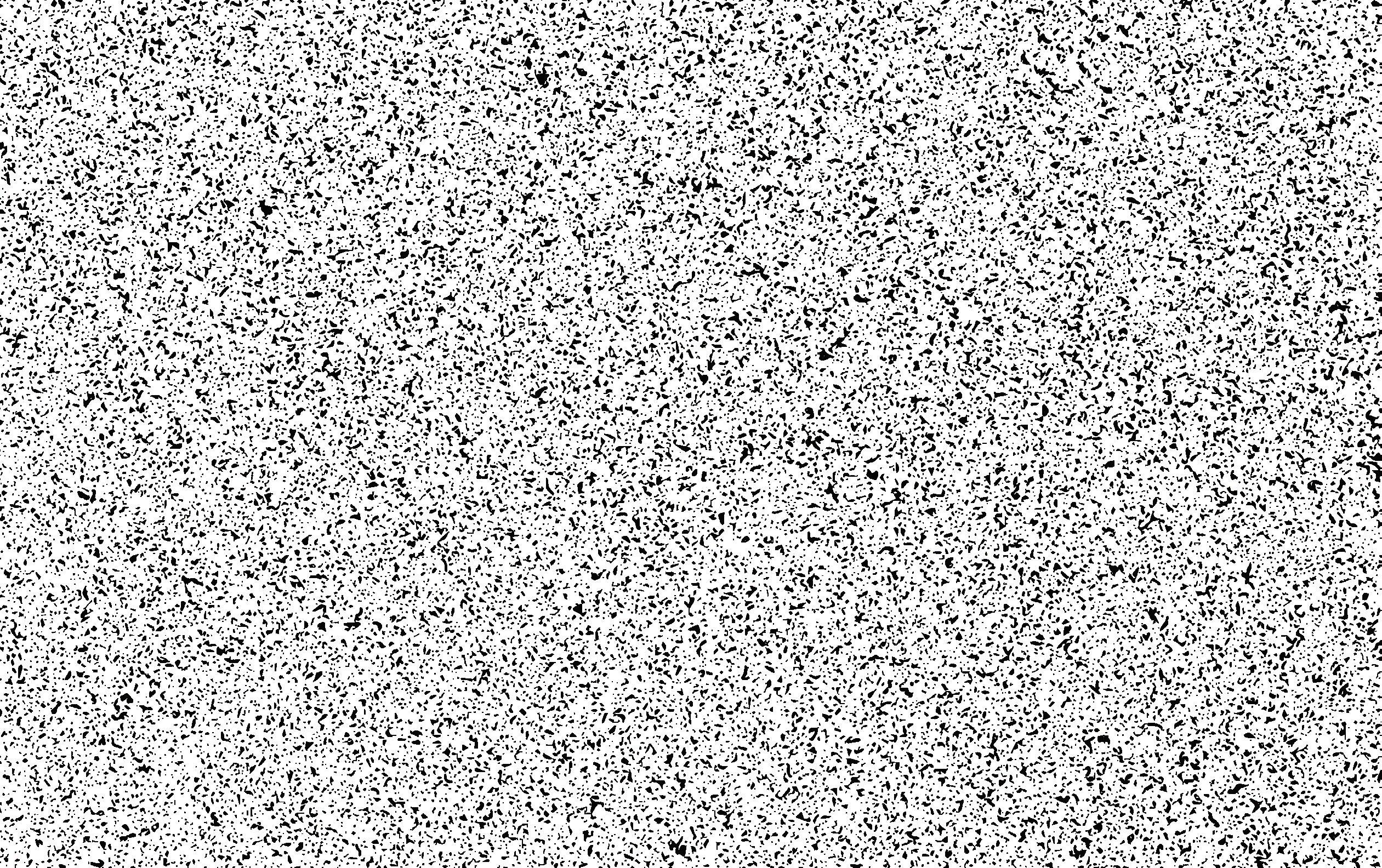
“One of the most exciting aspects of P4Y is the role that graduate students play in producing ideas for innovative programming and in putting these ideas into play,” Detlefsen says. “The ideas that Afton and Jacqueline have developed through their engagement with the philosopher-in-residence program are perfect examples of this.”
Engaging in philosophy reminds them that you can wonder about these questions your entire life.
Dustin Webster, a postdoctoral fellow serving as P4Y co-director adds, “The mission of the program is really to bring opportunities to engage in philosophy and philosophical thinking to students who don’t really have a chance to do that.” He notes that though philosophy is common
enrichment in private schools, he believes it’s an opportunity all students should get.
Penn P4Y originally began working with Palumbo as part of an Academically Based Community Service course, through Penn’s Netter Center for Community Partnerships, focused on an event called the National High School Ethics Bowl. Detlefsen and Webster brought a regional Ethics Bowl competition to Philadelphia in 2020. The event differs from a debate in that students are not assigned opposing views but rather have open-minded conversation about difficult subjects.
Until last year, P4Y largely provided standalone programming, such as running an after-school club. But these activities were not always integrated into the school, Webster says, and, while there are options for curriculum development for educators, he adds, “teachers are already so
overworked and overburdened it’s hard to want to add things to their plate.”
That’s what made PLATO’s philosopher-in-residence program so appealing to P4Y. PLATO launched the program in a Seattle elementary school in 2013, and it has since grown. Thanks to a grant from the Whiting Foundation, PLATO funded the pilot expansion in January 2023 into three high schools across the country, including Palumbo. The others are in Seattle and Boston. PLATO Executive Director Jana Mohr Lone says she reached out to Penn because she knew the school’s past work with philosophy for young people, and Webster is on PLATO’s Academic Advisory Board.
“Wondering about the world is a really important part of being a human being, and young people wonder about all kinds of things,” Lone says. “At some point I think many of them
Jacqueline Wallis is one of two philosophers in residence from Penn at the Academy at Palumbo, a high school in Philadelphia.
44
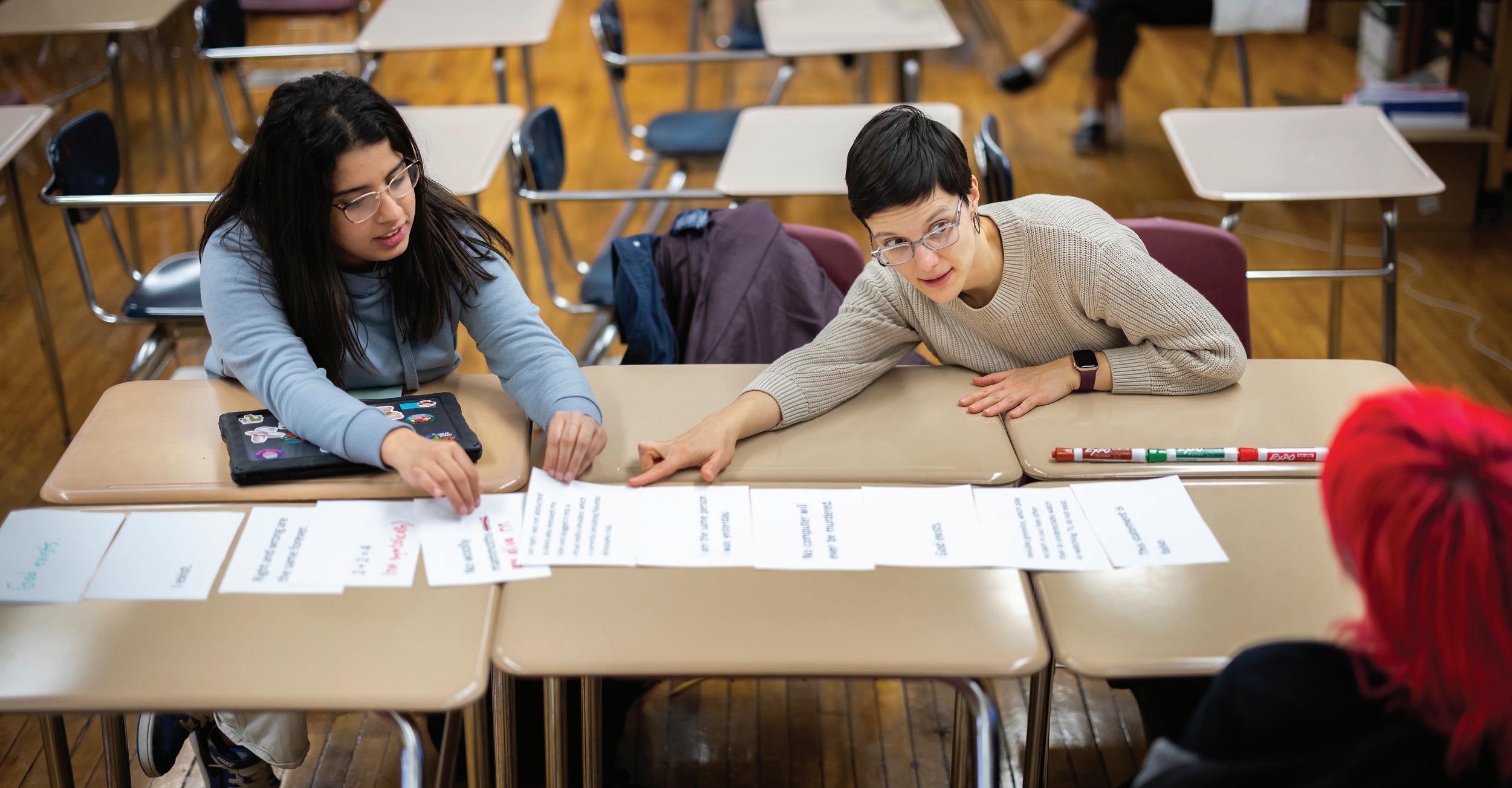
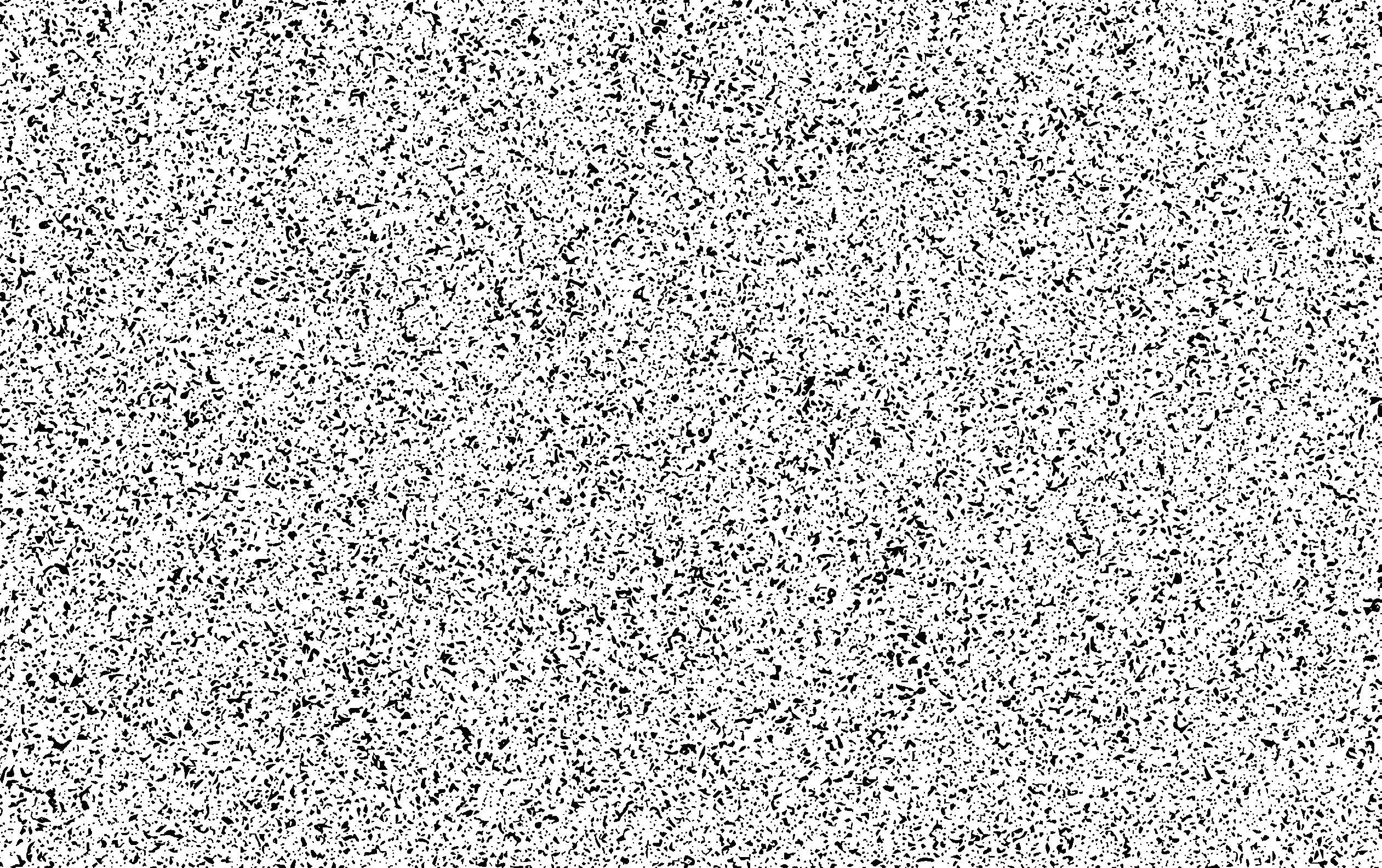
get the message that that’s not really a valuable way to spend your time. Engaging in philosophy reminds them that you can wonder about these questions your entire life.”
Extracurricular Thinking
As part of the philosopher-in-residence program, Wallis and Greco run an after-school Philosophy Club, an informal gathering where students can show up as little or often as they like to discuss a range of topics. At the students’ request, the focus of the fall semester was bioethics, Wallis says.
One Thursday, after the two conclude their four push-ins about how to read philosophical texts and the school day ends, they and a few high school juniors, including Marty Signes, Oreoluwa Oyefeso, and Adina Cooper, convene to talk about Jean-Jacques Rosseau—a good bookend to their conversations about Hobbes earlier in the day.
“I really like to talk to people who think about things,” says Signes, who would like to eventually major in philosophy in college. She recalls trying to talk to someone about the trolley problem—the ethical question of whether to sacrifice one person in order to save a group of people—and getting the reaction, “That’s so dumb
because it’s never going to happen to me.” But Signes says she wants to talk about much more than only what might affect her.

So many of these questions are openended. There’s a range of answers that seem reasonable, but we don’t really know which one is right.
Oyefeso tries to encourage people to think beyond themselves, too, to contemplate how what they do might affect others and the planet. “People are not really open-minded when it comes to talking about philosophy,” Oyefeso says. Nor are they always willing to change their minds, Cooper adds. “I like saying, ‘How do you know that?’”
The club is an outlet the high school students indicate they don’t always get elsewhere. Like with the philosopherin-residence program as a whole, they are guided by Greco and Wallis, given a space to contemplate big questions surrounded by others doing the same.
Erica Moser is a science writer in University Communications at Penn.
Here Wallis talks with students during an after school philosophy club she runs with Greco.
45
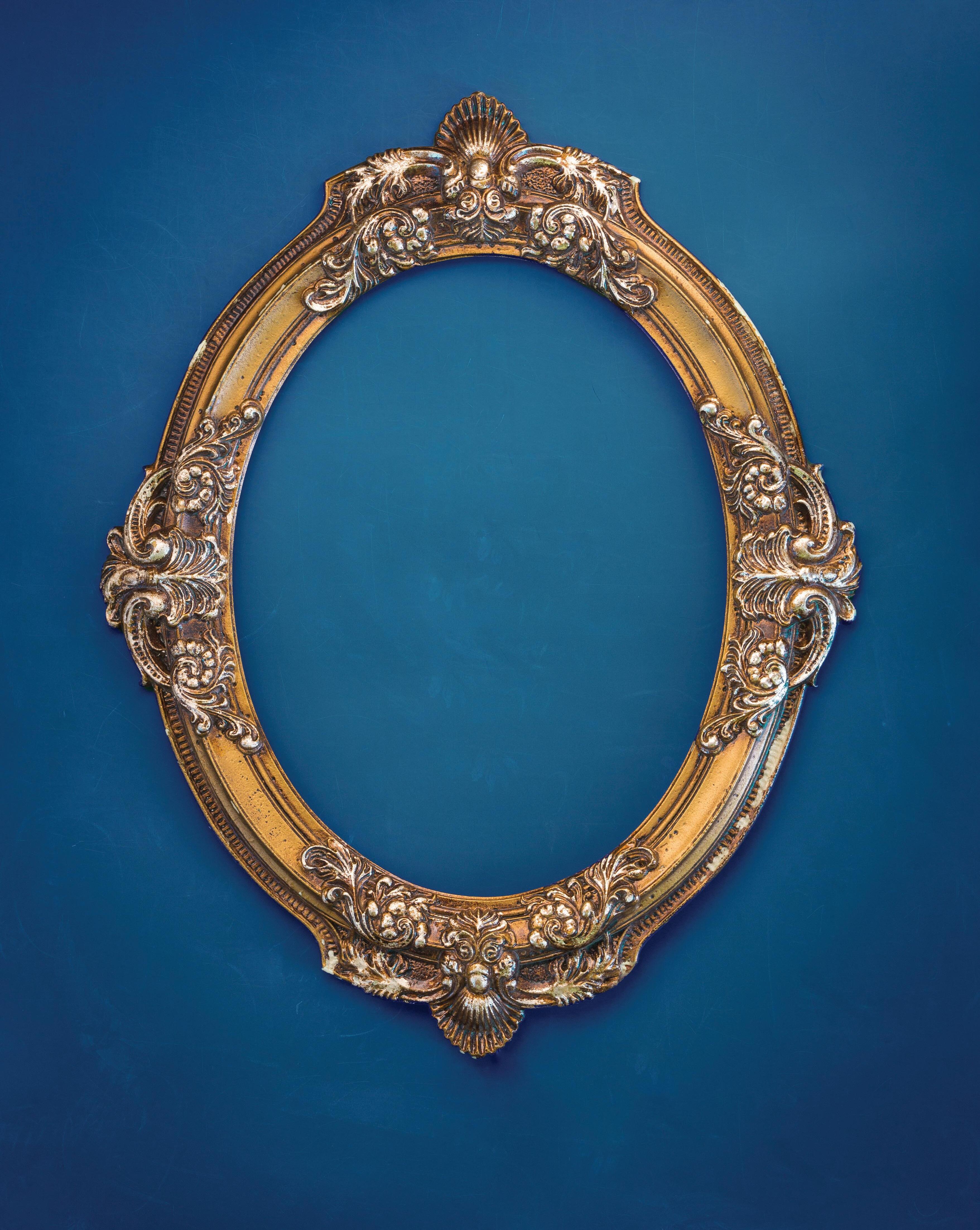
Guardians of the Gallery
Alums now at Christie’s, Sotheby’s, and Doyle auction houses discuss championing underrepresented artists, enriching an object’s narrative, their time at Penn, and more.
BY MICHELE W. BERGER
PHOTOS BY BROOKE SIETINSONS
© serikbaib / Adobe Stock 46
n a mid-November evening, David Galperin, C’13, W’13, sits in the first row of what looks like a pared-down stadium box at the Contemporary Evening Auction at Sotheby’s New York. Across from Galperin and colleagues, two rows of bidders fill another box. Others sit in central folding chairs, there to buy— or perhaps simply view—works from Jean-Michel Basquiat, Andy Warhol, Georgia O’Keeffe, Alice Neel, and a handful of other artists.
Though the big names draw the crowds, Galperin, Sotheby’s senior vice president and head of contemporary art for the Americas, has always been interested in championing artists from undervalued or underrepresented groups. “Everyone knows Andy Warhol and Pablo Picasso,” he says, “but there are so many more stories to tell.”
Through his work for the auction house, Galperin has the platform to highlight such artists, much in the same way that Marc Porter, C’82, W’82, chairman of
Christie’s Americas, has focused significant thought on art reparations and, separately, LGBTQ+ rights. Or how seriously Laura Doyle, C’00, CEO of Doyle auction house, takes the role that a business like her family’s can play in keeping items from a landfill.
“The danger with the art market is that it could stare at its own navel and not actually bring in the people it should,” says Jonathan Katz, an associate professor of practice in Penn’s History of Art Department. “But with progressive voices in this space, we can start to bring attention and scholarship to artists and art that have been neglected.”
Porter, Doyle, and Galperin represent that movement, a trio among many Penn Arts & Sciences alums in the art auction world, motivated to enter this line of work by inspiring professors and intriguing college courses, spurred by a love of art and proximity to Philadelphia’s art scene. “At Penn, you learn with a purpose,” Doyle says. “Everything is imbued with that sentiment, that feeling of ‘what’s next?’”

SPRING/SUMMER 2024
Courtesy of
Sotheby’s
47
David Galperin, C’13, W’13 (center, green tie), a senior vice president at Sotheby’s, oversees contemporary art for the Americas, one of the largest collecting categories and biggest sale centers globally. “One of the great privileges is to get to work with such interesting people who share a passion for contemporary art,” he says.

know what you’re going to
‘Custodians of the Objects’
Doyle auction house started as an antique store in 1962, the vision of Doyle’s father, William. It became a fullservice auction house in 1973. When Doyle was just three, her dad began introducing her as the daughter who would someday take over the business. “Maybe I was his last hope,” she jokes, then adds, “It’s always been on my mind as a dream to fulfill.”
Five years ago, she became CEO after stints at the front desk, in client services, and as a regional head. Today she works alongside her mom, Kathleen, who is chairman.
“We’re a middle market auction house,” Doyle says. “Our biggest categories are jewelry, art, furniture, books, and coins.”
But as fascinating as such items are at face value, Doyle’s dad always found their backstories as intriguing—a mentality Doyle says she tries to uphold. She recounts one of her favorite family anecdotes about an item her father once sold: In a hidden drawer on the side of an English rent table (used by landlords to collect rent checks), he found a copy of Abraham Lincoln’s final speech.
There are many tales that equally stir the imagination. In the 1980s, for instance,
Doyle auction house sold the jewelry collection of Louis Armstrong’s wife; in 2020, it handled the estate of Rosalind P. Walter, namesake of Rosie the Riveter. “We’re just borrowing these objects,” Doyle notes. “Every time one gets passed on, that adds to its story.”
Sometimes owner and object are forever intertwined, like the Basquiat painting called Air Power previously belonging to David Bowie and auctioned by Sotheby’s in 2016. “It will always be the ‘Bowie Basquiat,’” Galperin says. “There are all of these different examples where the identity of the collector and the history of an object’s
ownership are so fused with the object itself that it really enriches the narrative.”
We’re just borrowing these objects. Every time one gets passed on, that adds to its story.
All of this is central to the story of the creative force behind a work, Galperin adds. “Objects outlive people, and so we are their custodians for a short period of time. We have the great advantage and privilege of bringing these objects from one part of the story to the next.”
Laura Doyle, C’00, CEO of Doyle auction house, has been part of the family business since she was 8, working with her father after school. Today, she runs a company that offers more than 100 sales annually. “It’s such a fun business,” she says. “You never
find.”
48


Representing the Underrepresented
Galperin’s own path took shape during his childhood, growing up in a family that valued arts and culture and visited museums often. What cemented this passion was a Penn freshman seminar about contemporary art through the lens of the Venice Biennale.
After graduating from Penn, Galperin took a position in a year-long training program that rotates participants through all parts of Sotheby’s. His final stop was Contemporary Art, where he went from researching and writing the catalog to running evening sales to eventually overseeing the department.
Early on, he grew curious about why some artworks fell under this department’s purview but others did not, and why certain artists— Norman Lewis, for example—were left out of this world almost entirely. “Lewis is a Black abstract expressionist artist who was part of the generation of painters like Jackson Pollock and Willem de Kooning working in downtown New York,” Galperin says. “For a long time, Lewis’s work languished. It was important historically, collected by certain informed collectors and some museums, but from a market perspective, he’d not gotten nearly the same attention as his peers.”
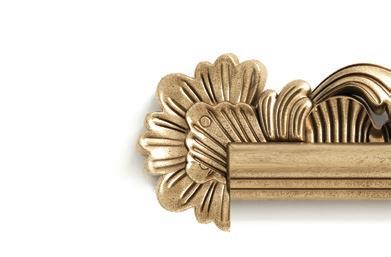


Art Collab
Since the early 2000s, the Department of History of Art has offered Curatorial Seminars, a chance for undergrads and graduate students to execute a full exhibition from start to finish. The students closely collaborate with faculty across disciplines and with a range of art institutions around Philadelphia.
In 2019, Galperin’s team had the chance to handle a Lewis painting called Ritual. Rather than putting it in an American art sale, Galperin placed it in a contemporary one. Its sale price nearly tripled the record for a Lewis painting. “People might say it’s more important for an artist like Norman Lewis to have representation on the walls of a museum,” Galperin says. “That’s true. However, markets can play a role in raising an artist’s visibility, in influencing people’s appreciation or understanding of an artist.”
In fact, says Gwendolyn DuBois Shaw, Class of 1940 Bicentennial Term Associate Professor in the Department of Art History and one of Galperin’s former professors, “artists can’t survive unless they have people collecting their work.”
According to Katz, auction houses are often the final arbiter of “value” in the art world. “It cuts both ways,” he says. “Inevitably, deserving artists are sometimes lost within that system, but equally, other artists get elevated.” When Galperin started looking, he found it was, unsurprisingly, mostly artists of color and female artists who had been “written out of history,” as he puts it, something he continues to try to change.

“It really gives the students an opportunity to work with artists, work with collections, work with archives, to do scholarly research on an object, its history, where it has traveled in its lifetime, its provenance,” says Gwendolyn DuBois Shaw, Class of 1940 Bicentennial Term Associate Professor in the department.
“The seminars also are productive for thinking visually and about organizing space, about how to place objects so they’re in conversation with each other and represent different concepts but also prompt questions when looked at together.”
The most recent one Shaw herself led was in 2019 in conjunction with Cuban artist Roger Toledo, who came to campus for two weeks as an artist in residence following a trip the class took to Cuba. The result was the exhibition “Soy Cuba (I am Cuba): The Contemporary Landscapes of Roger Toledo” at the Arthur Ross Gallery.
Though the seminars took a hiatus during the pandemic, Shaw says the plan is to bring them back, and soon.
“We are eager to continue this program,” she says.
SPRING/SUMMER 2024
49
Galperin says he’s always had an interest in making an impact that extends beyond the auction house, something he does today, in part, by championing artists from undervalued or underrepresented groups.


Marc Porter, C’82, W’82, joined Christie’s in 1990 and has held a variety of roles. Today he is chairman of Christie’s Americas. In that job, he splits his time between focusing on external clients and teaching and mentoring colleagues, “a great joy at this stage in one’s career,” he says.
“It is one thing to show someone’s work in a gallery. The moment that show is happening, that artist is winning attention,” Katz says. “But the auction conveys a greater permanence, that someone has made it, that their reputation will hold.” Auction houses also have the ability to help narrow attention to the most compelling figures at work today, Katz adds, to provide “an index of changing historical positions.”
Two Considerable Topics
Marc Porter, who has been in the auction business for nearly four decades, has witnessed such historical shifting firsthand. At Penn he majored in American civilization, writing his senior paper on the structure of the art auction market. After college, he worked at Doyle auction house—as a driver for William Doyle.
“They didn’t have a book department, so I started putting together book sales through the various estates that were being consigned,” Porter says.
With few industry jobs available, Porter went to law school, practiced for three years, then returned to art auctions, joining Christie’s as a business development associate in 1990. Today he is chairman of Christie’s Americas, where he handles the “most intractable or nuanced issues that arise.” That can mean crafting the deal that moves a single object or a major collection, relationship-building, mentoring colleagues, or lately, focusing attention on two considerable topics: art and antiquities reparations and the rights of people who identify as LGBTQ+.
“My biggest social impact interest is LGBTQ rights,” says Porter, who came out his senior year at Penn, around the time the U.S. AIDS crisis began. “It was a very hard time for gay people.” Though the
situation improved over the next several decades, many of the hard-earned wins seem to have vanished overnight, he notes. “The progress we thought we were making is being rolled back. LGBTQ rights, women’s rights, voting rights—especially for people of color—they’re all under assault.”
The other matter on Porter’s mind is reparations. He co-leads Christie’s “Restitution Group,” which, in 2023, put on a series of events marking the 25th anniversary of the Washington Conference Principles on Nazi-Confiscated Art, guidance on how to handle looted World War II art most appropriately. A quarter-century on, the matter remains unsettled (and not without controversy; in December 2023, the Tel Aviv Museum of Art canceled its restitution event with Christie’s over backlash).
But at least the discussions are happening, Porter says. “Most deep thinkers about this issue, while sometimes in complete
50
opposition to each other in their conclusions, acknowledge that it may not be a purely binary decision set. In antiquities, nothing is obvious.”
Objects
outlive people, and so we are their custodians for a short period of time. We have the great advantage and privilege of bringing these objects from one part of the story to the next.
It’s also continuously evolving, most recently having its hand forced by the pandemic. With in-person gatherings paused, art auctions moved online or


were livestreamed—likely permanent changes, according to both Porter and Galperin. The moment was also a chance to contemplate the industry’s carbon footprint. “If we take care of these objects,” Doyle says, “then they’re not ending up in a landfill.”
The Penn Influence
Porter appreciates thinking about art in this way, and he’s encouraged by its central place in educating today’s Penn Arts & Sciences students. “They are getting a strong foundation in the arts, which I think is critical,” he says. Skills he learned at Penn—understanding how to think about polarization in the U.S. today, for instance—have stayed with him. “The method is imprinted on me.”
For her part, Doyle, who majored in art history, says she learned not only from professors, but from peers, too. “It was the early tech era and all of my friends had business plans,” she says. “It expanded my thinking. It was really complementary to be studying something theoretical in such a practical environment.”
She also loved being immersed in the Philadelphia art world, a sentiment Galperin shares. He says connecting regularly with people at institutions like the Philadelphia Museum of Art and the Barnes trained him to really see art. “It’s a muscle I use every single day,” he says. “When it comes to art, it’s all about looking and seeing.”
Michele W. Berger is editor of Omnia and the director of news and publications for Penn Arts & Sciences.

SPRING/SUMMER 2024
Penn Grad Talks

It was standing room only—plus online watchers around the world—for the eighth annual Penn Grad Talks in February, as 20 Arts & Sciences doctoral and master’s students shared their research in TED Talk–style presentations. The competition winners were (from left) Jessica Wojick of biology; Andrés Oliveros González of behavioral and decision sciences; Maya Moritz of criminology; Daniel Gomes of physics and astronomy; and Rawad Wehbe of Near Eastern languages and civilizations. To watch all the presentations, visit vimeo.com/channels/penngradtalks — SUSAN AHLBORN
An Economist’s Take on Illicit Drug Use
Research from Artem Kuriksha, GR’24, found that people will substitute one drug for another, but only in specific ways.
When Artem Kuriksha, GR’24, returned home to Russia a few years ago for a visit, he noticed something odd during walks in the park. People would often be looking for something behind the trees.
His friend explained: These were drop points for a drug marketplace on the dark web called Hydra. Though such dealing had become a major social phenomenon in Russia, the unusual behavior in the park was the first time Kuriksha, who
earned a Ph.D. in economics, had himself witnessed Hydra’s presence.
He thought the phenomenon could be important to study, “an opportunity to look into the behavior of drug consumers,” he says. Kuriksha and Penn Ph.D. classmate Priyanka Goonetilleke, GR’24, Princeton University Ph.D. candidate Anastasia Karpova, and Peter Meylakhs of Sechenov University in Moscow, began scraping data from Hydra.
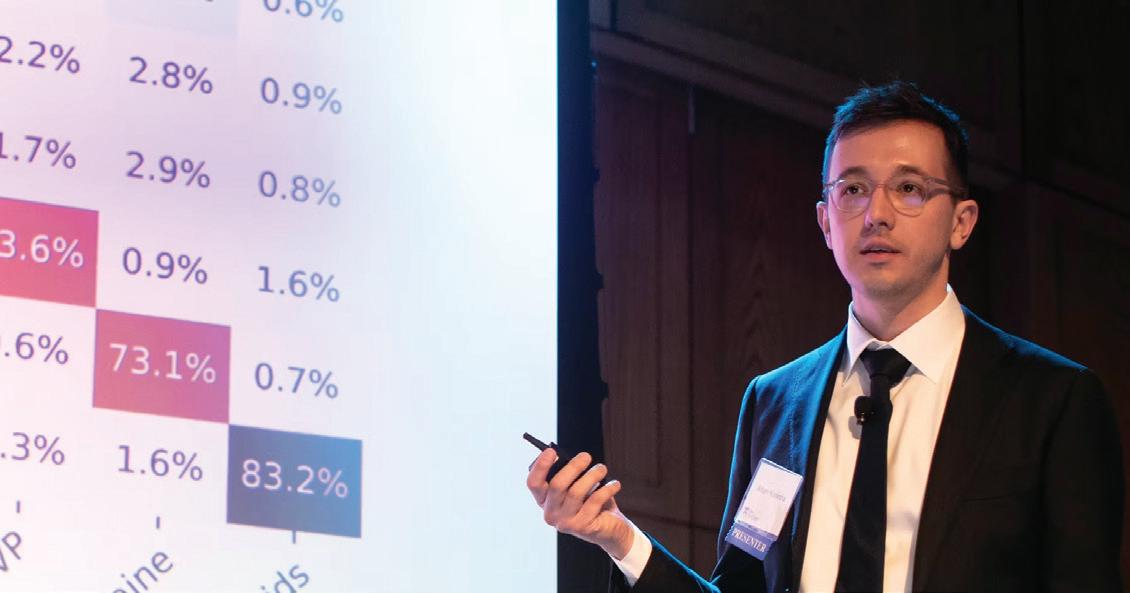
“When we started digging in, we didn’t know where this would go,” Kuriksha says. “We wanted to understand the price variation, how prices change over time, how sellers differ, how competitive this market is.” They plotted the distribution of drugs in different neighborhoods and
OMNIA | ALL THINGS PENN ARTS & SCIENCES
Brooke Sietinsons 52 STUDENT SPOTLIGHT Brooke Sietinsons
examined user reviews of drug transactions to observe how people switch between different drugs. Analyzing their data, they found that people will substitute one drug for another—but in particular ways.
The biggest takeaway was cannabis, according to Kuriksha: Legalizing it has the potential to limit consumption of other drugs. For instance, if cannabis becomes more accessible, for every four additional doses of cannabis consumed, one fewer dose of another drug is consumed. Introducing new synthetic drugs, on the other hand, raises overall demand by 40 percent—people don’t just substitute from pre-existing drugs but actually increase total drug consumption.
Finally, the team also found that certain drugs like heroin and cocaine have few substitutes. Kuriksha says prioritizing drugs like these for attention by law enforcement may be the best way to decrease total harm from drugs.
Having this information can be “very useful for policymakers,” he adds. “Substitution can be a crucial tool, but you need to account for how exactly drug users substitute. This research is a unique opportunity to actually see what people are doing; because we understand so little about what happens in the U.S. and Europe around drug use, we should try to use knowledge from the Russian data to make decisions.”
Visit vimeo.com/channels/ penngradtalks to see a presentation by Kuriksha on this work. — MATT GELB
Word Play
By using linguistics models to analyze conversation during games, Sydney Sun, C’24, is listening in on the ways environment shapes interaction.

When Sydney Sun, C’24, decided to transcribe 100 hours of audio recordings, she had no idea what would come of the effort.
The recordings had been made by parents and children playing social skills and math games, part of a study being conducted by the Emotion, Development, Environment, and Neurogenetics (EDEN) lab run by Rebecca Waller, an assistant professor in the Department of Psychology. Sun was intrigued—were the games affecting the language the children used?
After spending months painstakingly transcribing, counting, and classifying each word in the recordings, Sun discovered that children playing the social game tended to match how often their parents used socialemotional words such as “love” or “sad”— something they didn’t do with the math game. “It was really surprising and astounding to see how the social context radically changed the way parents and children interacted with language,” Sun says.
This work, which Sun has since presented at an international conference and published in the journal Scientific Reports, has inspired Waller to conduct more studies on the associations
between language and children’s behavioral problems, opening new directions of research for the EDEN Lab. “What she’s doing is really foundational to an emerging field,” Waller says.
Next up, she’s planning to attend medical school. Ultimately, Sun says she hopes to pursue a career in pediatrics as a clinical researcher, following in her mother’s footsteps. She’s not certain how her career will pan out, but says she’ll keep taking risks in the name of scientific pursuit.
— LAURA DATTARO
Violin as Subject and Muse
Fifth-year Ph.D. student Juliet Glazer is examining the aesthetics, sound, and valuation of instrument-making in the U.S. and Italy.
Juliet Glazer, who grew up in New York City, was six when she started playing the violin, an instrument her mother and both grandfathers also played. Though her primary musical background is in violin and classical music, she also learned old-time fiddle and bluegrass.
Glazer, now a fifth-year joint Ph.D. candidate in anthropology and music, turned her love for the instrument into her research focus. Advised by Deborah A. Thomas, R. Jean Brownlee Professor of Anthropology, and Professor of Music Jairo Moreno, she is studying contemporary violinmaking in the United States and Italy.

spent six weeks in a school in Italy learning how to make violins. Here, she is beginning to bend the
sides around the internal form at center.
“I wanted to find a project that engaged in some way with questions about craft,” she says. “How do we make social worlds by making material objects? What is materiality anyway?”
SPRING/SUMMER 2024
53 STUDENT SPOTLIGHT
Glazer
violin’s
Courtesy of Juliet Glazer
Sydney Sun, C’24
Brooke Sietinsons
For her dissertation fieldwork, Glazer split her time between Boston, New York, and Italy, following violinmakers, instrument restorers, and dealers. Part of that included living for three months in Cremona, Italy, a city of 71,000 people with some 400 violinmakers, called luthiers. She spent six weeks of her time there in a school to learn violinmaking. (She made half a violin and says she hopes to finish.)
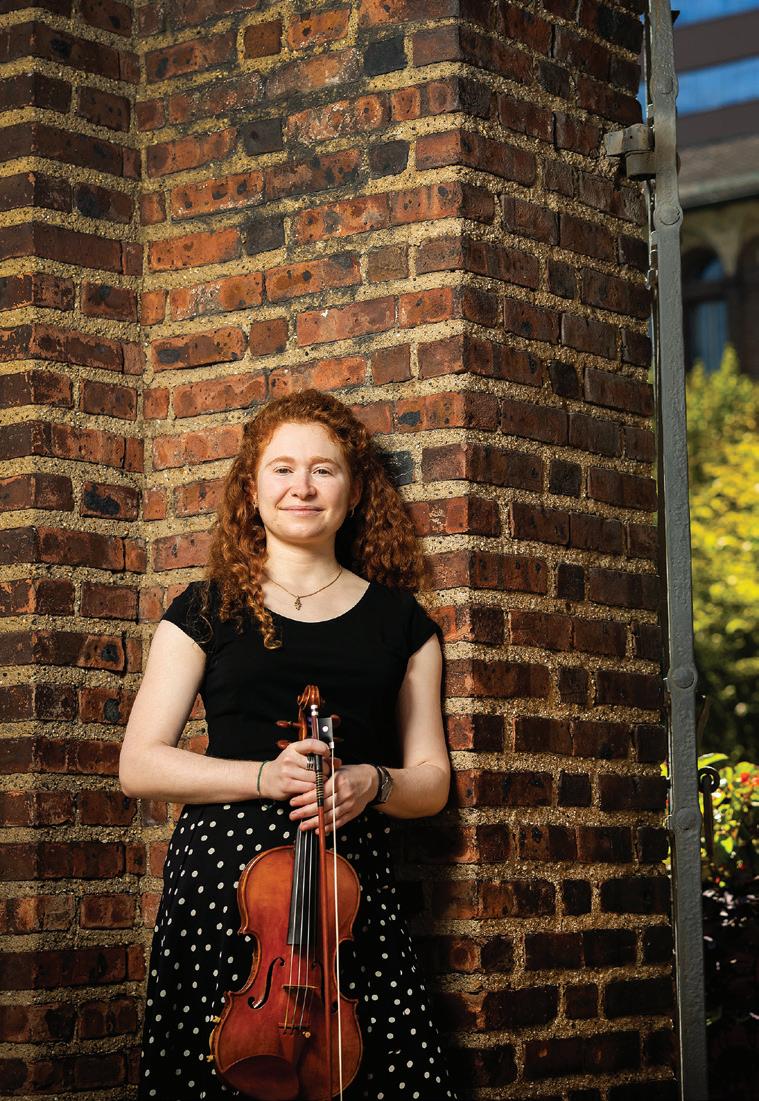
She’s also learned a great deal from talking to luthiers in all three places. For example, when the craft began in northern Italy in the 1500s and 1600s, makers had their own workshops and apprentices, who were often their sons. Antonio Stradivari—namesake of the famous Stradivarius violins—worked in Cremona with his sons. Today, however, violinmaking is not passed down through families but rather taught in schools. Many luthiers Glazer talked to in the U.S. spoke of a violinmaking boom there since the 1980s.
Between her background as a musician and a growing interest since entering graduate school in sound studies—thinking beyond music to practices of listening—Glazer began her fieldwork prepared to be a listener. But she was surprised at the visual orientation in the work of makers and restorers.
“Violinmakers build a different set of sensory skills than musicians, and often makers are not musicians,” she says. Instead, they are craftspeople and artisans. She adds, “I have always been really interested in craft and in art, material objects and the material world, and the ways in which we invest tangible, seemingly non-human objects with animacy.” — ERICA MOSER
Tackling the Age (Research) Gap
GEAR UP provides students from underrepresented and disadvantaged backgrounds hands-on experience and mentoring to address a critical global challenge.
Climate change is a major global challenge that gets attention in news, entertainment, and at all levels of academia. But another looming challenge— the world’s aging population—is much less of a focus, says Hans-Peter Kohler, Frederick J. Warren Professor of Demography and Professor of Sociology. This results in little opportunity for college undergraduates to study or research population aging.



(Clockwise from top) GEAR UP and other Summer Undergraduate Mentored Research students at the AcademyHealth’s 2023 Annual Research Meeting in Seattle this past June. / GEAR UP scholar Rhoodjinie Mentor, NU’25 (right), discusses her poster with another attendee at the Gerontological Society of America (GSA) conference in November 2023. GEAR UP scholars also took part in GSA’s Advancing Diversity and Aging Research summit at the conference. / Keynote speaker Julie Zissimopoulous of the University of Southern California; Norma Coe, Associate Professor and GEAR UP co-director, Perelman School of Medicine; and GEAR UP scholars Taussia Boadi, C’24, and Jovan Mann, C’24, at the PARC Retreat 2023.
OMNIA | ALL THINGS PENN ARTS & SCIENCES
STUDENT SPOTLIGHT
Courtesy of GEAR UP
Eric
54
Ph.D. student Juliet Glazer
Sucar, University Communications
Kohler and the Perelman School of Medicine’s Norma B. Coe and Rachel M. Werner responded by creating the Get Experience in Aging Research Undergraduate Program, or GEAR UP. The initiative is run by the Population Aging Research Center (PARC), which Kohler and Coe co-direct, and the Leonard Davis Institute of Health Economics (LDI), led by Werner. Established in 2022 with funding from the National Institute on Aging, GEAR UP supports research in STEM areas related to population aging by undergraduate students from underrepresented and disadvantaged backgrounds who are attending colleges across the country.
The GEAR UP program lasts 15 months, including two summers and the academic year in between. It introduces students to researchers and topics, connects them with mentors to work on research initiatives, and provides workshops and social events.
Arturo Bardales, C’24, is a mathematical economics major with a statistics minor who plans to earn a doctorate in economics. He has been working with the Population Studies Center’s Irma Elo, Tamsen and Michael Brown Presidential Professor of Sociology, and Jere Behrman, William R. Kenan Jr. Professor of Economics, on two projects in Chile, both of which address cognitive aging and health inequality. “I wanted to pursue research as a career, so it was great getting this experience,” he says. “I know now what the expectations are.”
Ashley Duchi, C’24, has been working with the School of Nursing’s Adriana Perez, who is studying whether promoting physical activity will delay the onset of Alzheimer’s disease in older Latinos with mild cognitive impairment. “It’s been incredibly fulfilling,” says Duchi, who is majoring in health and societies and minoring in chemistry. “It’s clinical research, so I’m improving my social
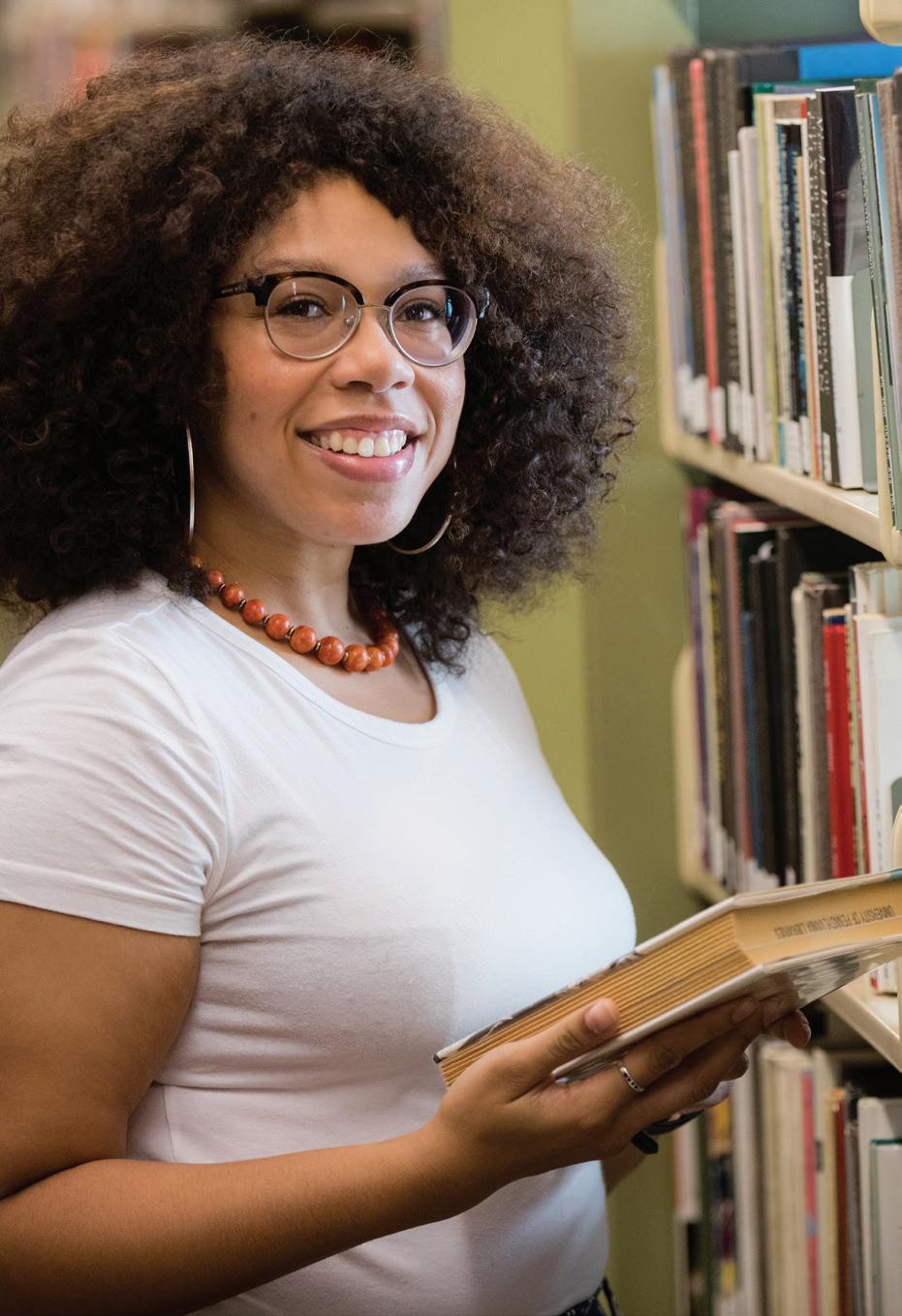
skills, which I believe are important for me as a pre-med, but I’m also learning practical skills.”
Though Duchi anticipated conducting research in college, she wasn’t sure she would want it as part of her career. “GEAR UP exposed me to so many different career paths available in studying population aging, as well as the chance to network with established people in the field,” she says.
For Werner, the experiences Bardales and Duchi describe are all part of what makes GEAR UP a success. “The goal is to make population aging research more visible at the undergraduate level and make it accessible,” she says.
Kohler notes that Penn has “the scholars and established research programs to provide hands-on engagement and mentoring,” he says. “It’s very cool to be engaged and see research coming alive.”
— SUSAN AHLBORN
Penn’s home of lifelong learning
The College of Liberal and Professional Studies offers transformative graduate-level education for students seeking new paths and possibilities. You’ll experience the best Penn has to offer and develop the skills you need to thrive in a changing global society. Explore our master’s degree programs in:
The power of Penn is open to you! Learn more at:
SPRING/SUMMER 2024
•
• Applied Positive
• Behavioral
Sciences • Chemical Sciences • Environmental Studies • Liberal Arts • Organizational Dynamics • Public
Applied Geosciences
Psychology
and Decision
Administration
STUDENT SPOTLIGHT 55
www.lps.upenn.edu/degree-programs
Penn Arts & Sciences at Work
Penn Arts & Sciences at Work is a photoblog series that highlights College alums in their workplaces as they reflect on how and why their careers took shape. To see more, visit www.sas.upenn.edu/at-work
SHARON KIM, C’05
Managing Director, Mount Airy Community Development Corporation
COMMUNICATION MAJOR
CINEMA STUDIES MINOR
PHILADELPHIA, PA

Managing director is a varied role, kind of like director of operations. I could be planning an event or onboarding someone, drafting a lease, or arranging logistics for our series of workshops. Or I could be meeting with community members about pressing issues around the neighborhood. It’s pretty cool that I get to do what I get to do. Every day is really interesting, and the people I work with are really passionate. That makes a huge difference.
I’m proud of the street festival that we put on four times a year. To be able to create a space for neighbors to get to know one another and see one another again after COVID, to get to know the small businesses that make up the neighborhood—it’s just so fun. We also recently started a grant program, a $2,000 grant for first-time homebuyers,
no strings attached. Knowing that we had a small part in helping someone achieve their dream of home ownership, building intergenerational wealth, is really inspiring.
“Just separating myself from the person who I thought I was supposed to be was a hard lesson.”
I loved all the clubs that Penn had. That was really fun and a great way to meet people. But what stays with me is the feeling of possibilities. Having all of these resources at your fingertips and the support of all of your professors is really
special. Penn gave me an amazing foundation upon which to build this successful life and career, and I’m so thankful for my experience there and the friends I made.
After college I worked a couple jobs and then went to law school. I realized practicing law was not something I wanted to do, so I took this job at a big construction company because I thought I wanted to go corporate. Separating myself from the person who I thought I was supposed to be was a hard lesson. I wouldn’t change my trajectory, though. Law school was expensive, but it was invaluable. The corporate job led me to prioritize things that were important to me and made me realize that I actually want to do something that makes me happy every day. — AS TOLD TO CHRISSY BOWDREN
MOVERS & QUAKERS
Brooke Sietinsons
56


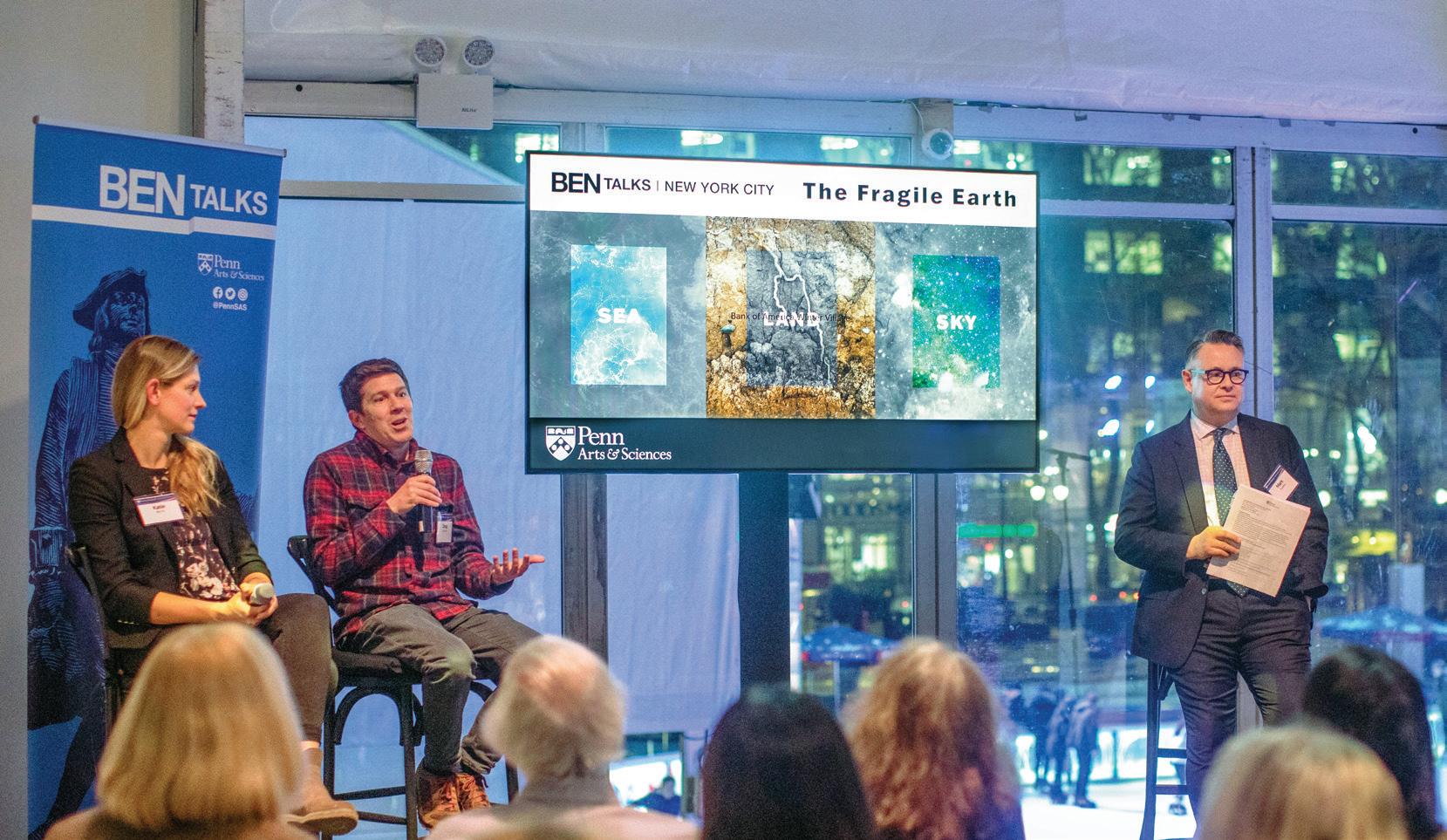


From Connecting to Coaching
The spring semester featured an array of opportunities for Penn Arts & Sciences alums to get together with faculty and students to socialize, learn, network, and mentor. The spring edition of Ben Talks brought faculty to New York City and to Palo Alto and Santa Monica in California, where they discussed the science of sea, land, sky, and lessons of climate change resilience. The Asian American Studies program also traveled to New York and California to share the latest news about its initiatives and
offer interested alums a chance to meet and talk. Six members of the Professional Women’s Alliance (PWA) came to campus to share their work pathways and experience at the spring Career Roundtable. And the College Alumni Mentoring Series (CAMS) included a Penn in Washington dinner, a mentorship meal with Javier, C’03, W’03, and Lauren Starkand, C’03; and an evening focused on careers in data science, moderated by Eric Edell, C’99, W’08, and including Randy Winn, PAR’28. — SUSAN AHLBORN
To get involved in alumni volunteer opportunities, contact Chrissy Bowdren, Senior Associate Director of Volunteer Programs, at cbowdren@sas.upenn.edu
(Clockwise from top left) Ramanan Raghavendran, EAS’89, W’89, LPS’15, Chair of the University’s Board of Trustees (far right) introduced Ben Talks in Palo Alto, which also featured (left to right) Doris Wagner, DiMaura Professor of Biology, Douglas Jerolmack, Professor of Earth and Environmental Science, Simon Richter, Class of 1965 Term Professor of German, and Mark Trodden, Fay R. and Eugene L. Langberg Professor of Physics and Associate Dean for the Natural Sciences. / At the New York Ben Talks (left to right), Katie Barott, Assistant Professor of Biology, Jerolmack, and Trodden discussed “Earth, Sea, and Sky.” / Fariha Khan (left) and David Eng, Richard L. Fisher Professor of English, co-directors of the Asian American Studies Program, update the crowd at an Asian American Studies Now event in New York. / Tabeen Hossain C’17, LPS’20, mentors a student at the PWA roundtable. / At the CAMS event Careers in Data Science, students hear about an array of options from (left to right) Randall Winn, PAR’28, Melissa Honour, Head of Product Innovation at Blue Shield of California, Tara Thiagarajan, founder and chief scientist at Sapien Labs, Christen Smith, President of Service Lines and Solutions at LMI, and moderator Eric Edell, C’99. Winn and Edell, who organized the panel, are co-founders and managing partners at the investment firm 22C Capital.
Brooke Sietinsons Brooke Sietinsons
Amber Grier
Brooke Sietinsons
Fisher
Jen
MOVERS & QUAKERS
57
A COLLEGE OF


The first class of 11 students graduated from the College of Liberal Arts for Women in 1934.
A look
back at what
life
was like for these pioneers and the hundreds who followed.
By Michele W. Berger and Susan Ahlborn

n April 1933, Penn’s “Bureau of Publicity” announced plans from University President Thomas S. Gates and the trustees to open a new College of Liberal Arts for Women in July of that year. The college would establish a four-year curriculum in arts and sciences, equal to what was then “offered to men in the College of the University.”
The motives behind this weren’t only concerned with equality, however, says Sarah Manekin, G’04, GR’09, a history Ph.D. who published a paper based on her archival research about the creation of the college. Rather, she says, the trustees wanted to be more like Ivies to the north, which were then associated with separate colleges for women. “They were thinking about what it meant to be an elite urban research university,” Manekin says. “And that seemed to be to offer elite education opportunities for women but in separate spheres. So, the rich, wonderful, vibrant life the College for Women students created came about because of market dynamics.”
Students at the new college were lodged in Hill House (which is structured like a castle with a moat around it) and attended class mostly in Bennett Hall, which would also house the women’s student union, a soda fountain, a ping pong table, a record player and typewriter, even showers and an ironing board for commuters.

Just a year later, in 1934, the College of Liberal Arts for Women graduated its first class, the 11 students having “satisfied the minimum residence requirements of one year, after transferring from other colleges or other departments of the University.” Nine received a Bachelor of Arts degree, two a Bachelor of Science in biology.
Hundreds more would graduate from the College of Liberal Arts for Women before it was absorbed into what is today Penn’s School of Arts & Sciences 50 years ago.

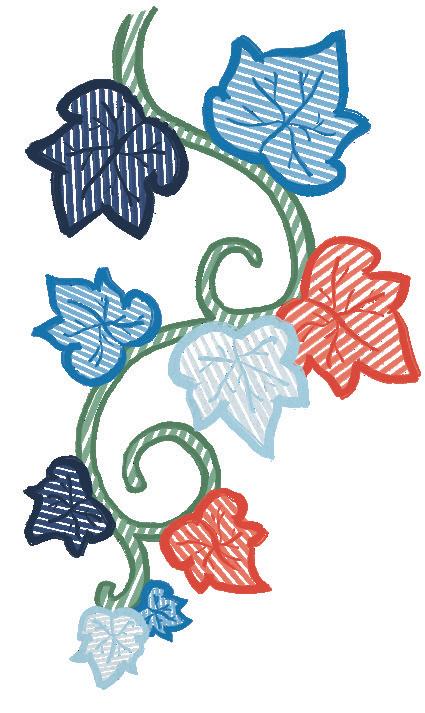

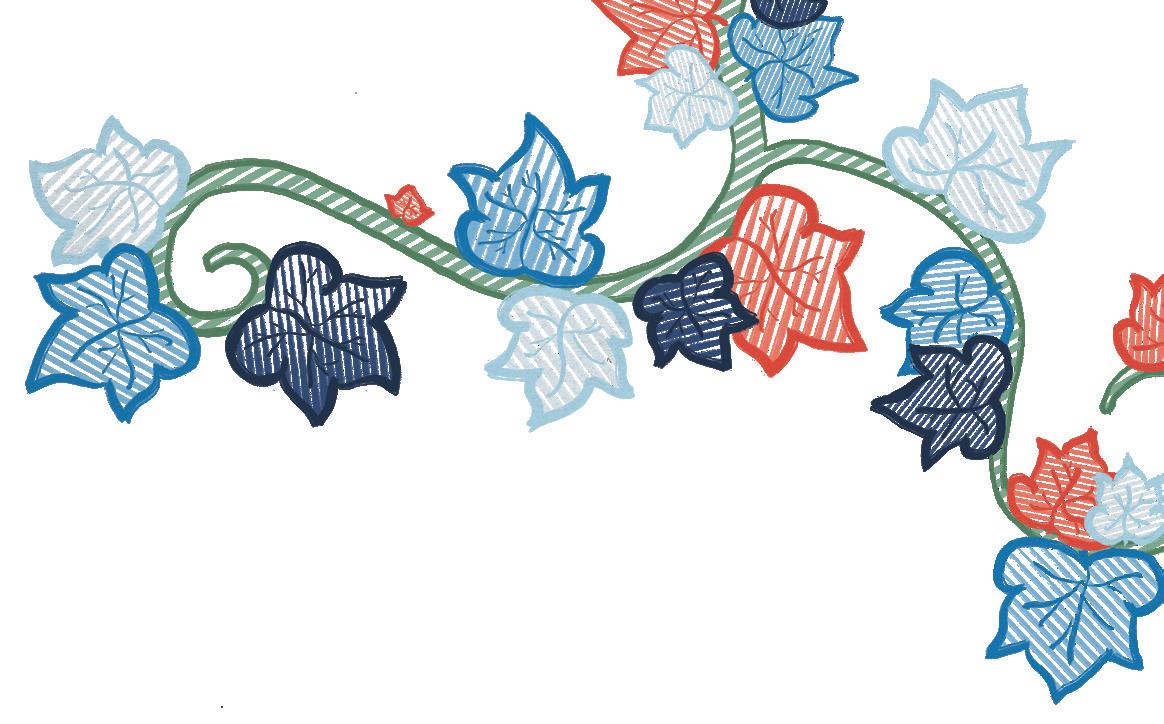
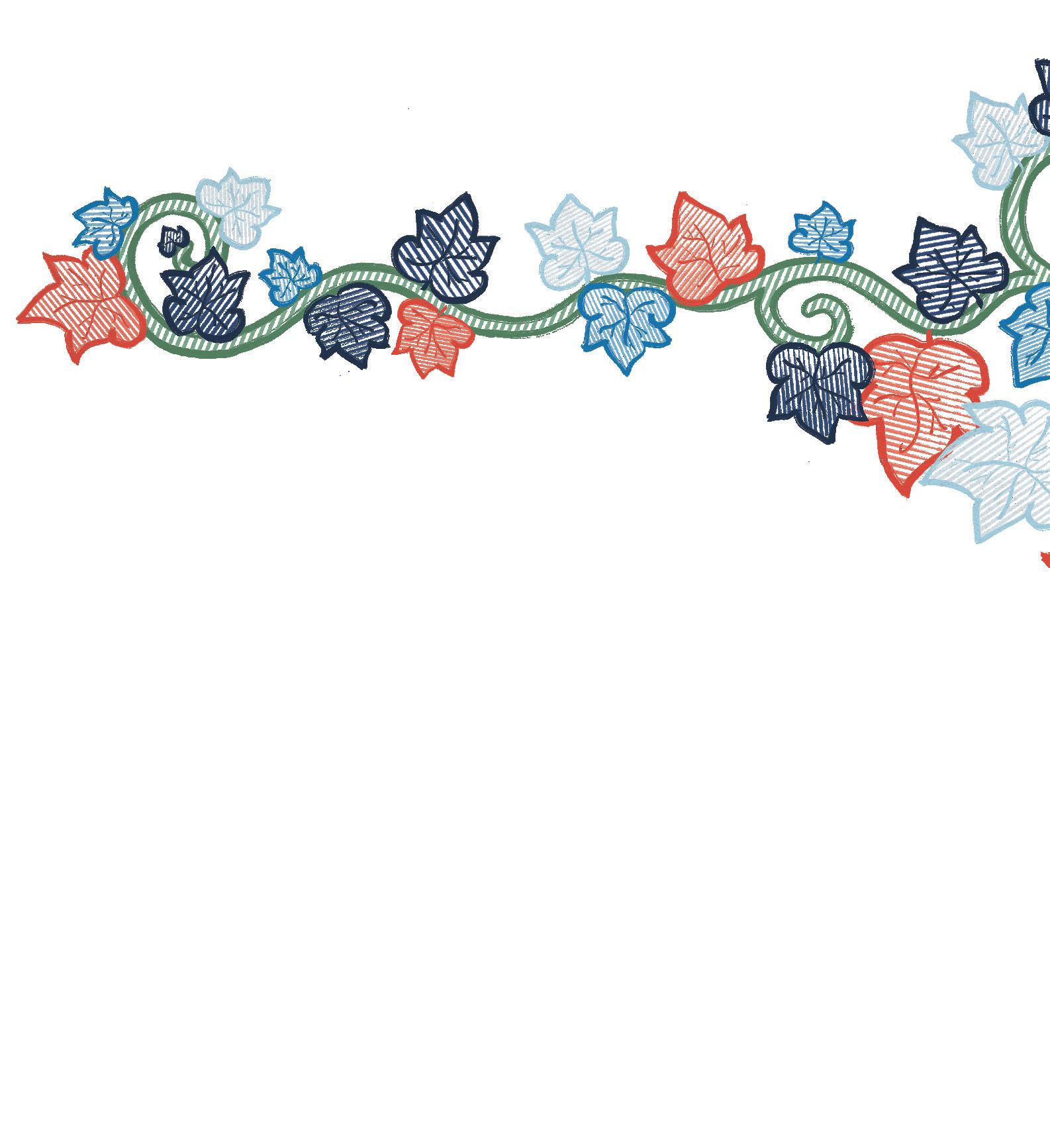
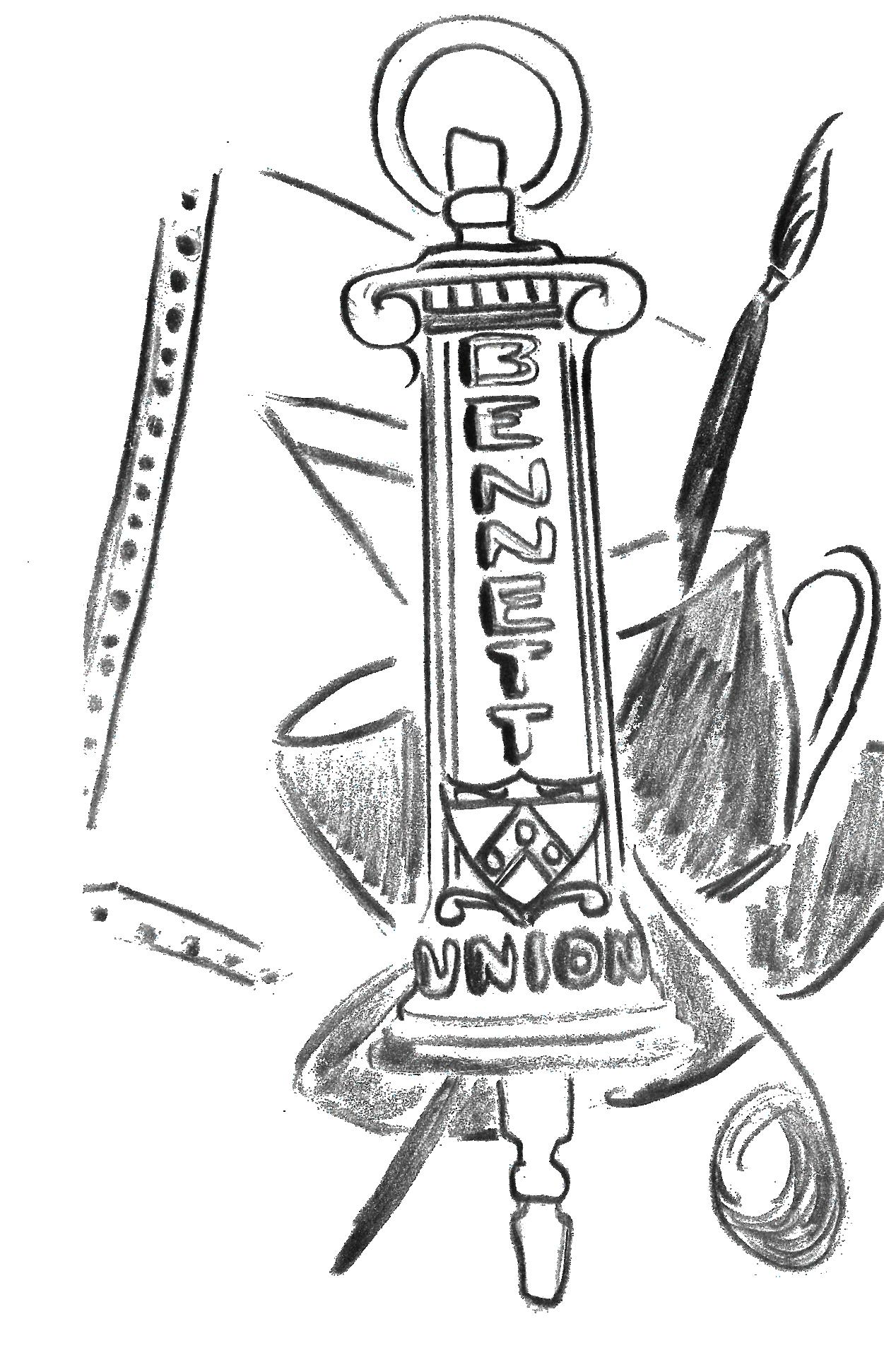


MOVERS & QUAKERS Images courtesy of University Archives
58



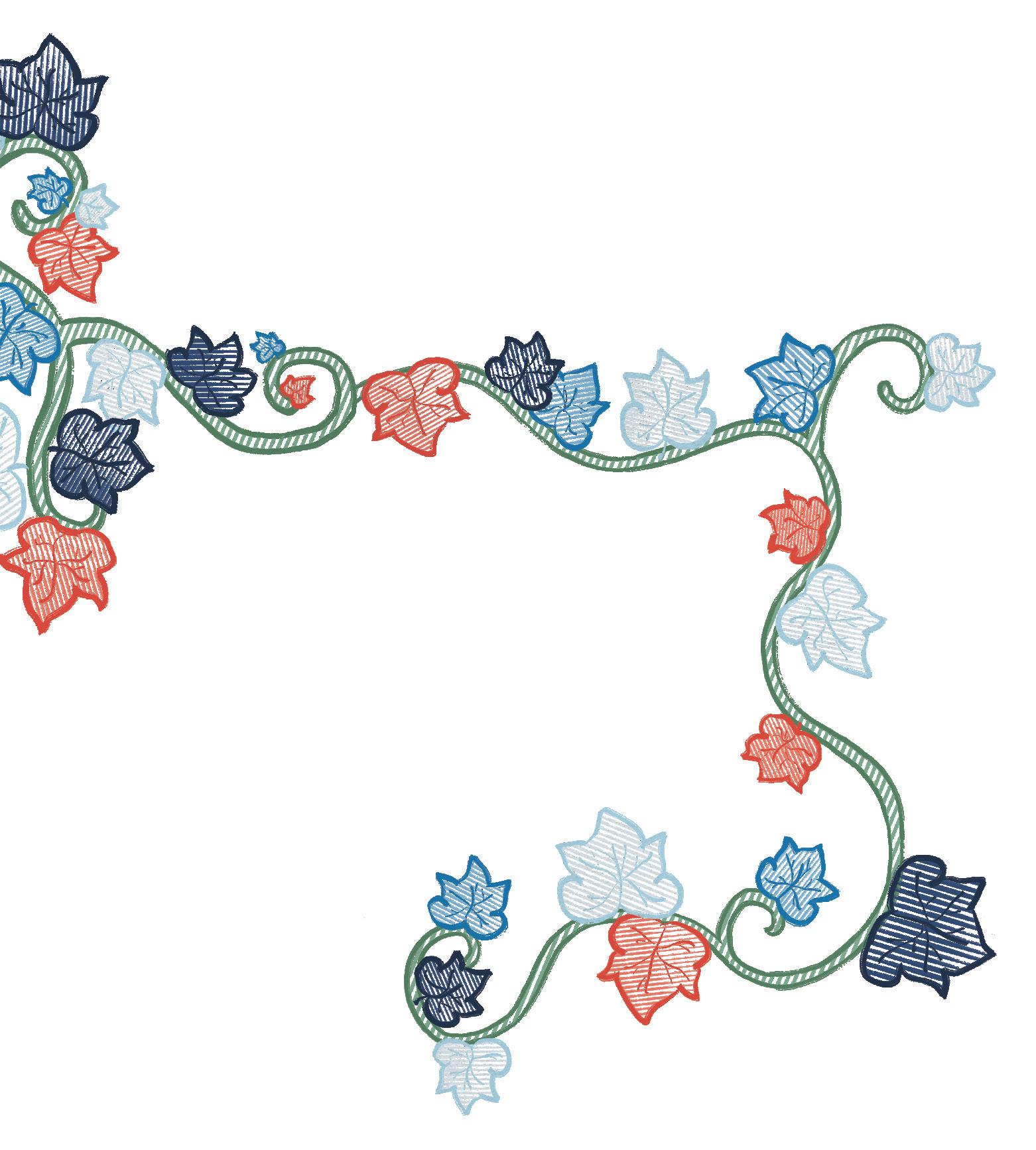


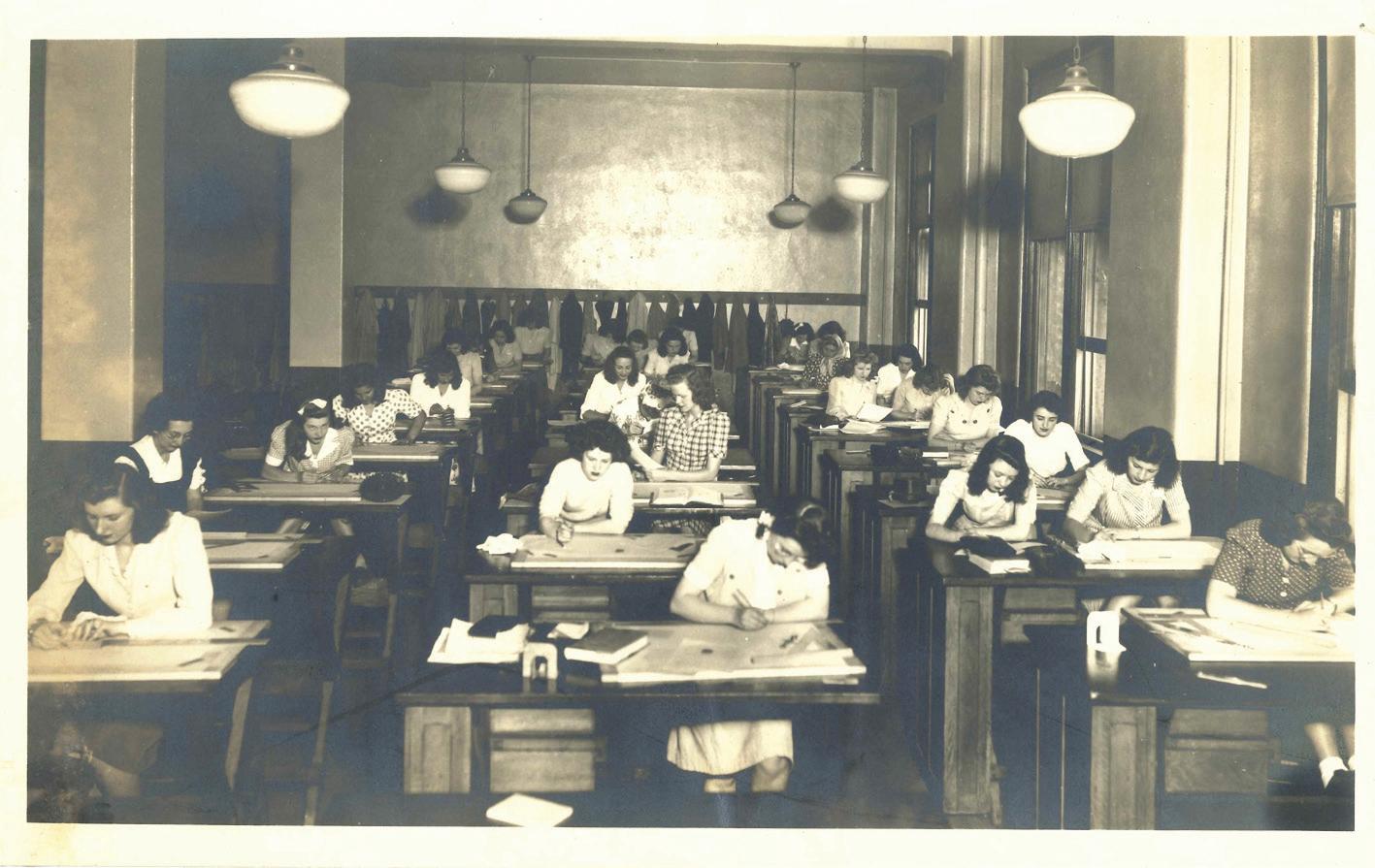




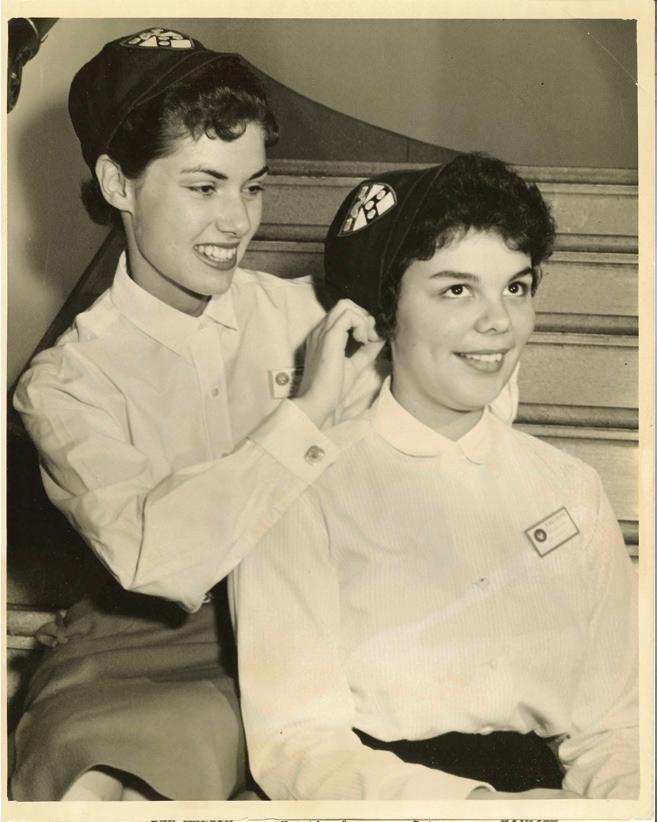

Though equalizing education for males and females was a slow progression, the creation of the College of Liberal Arts for Women represented a step forward. The majority of classes for these students took place in Bennett Hall (top), with Bennett Union (bottom left), run by an executive committee of students and a student director, on the fourth floor. In 1935, women were allowed to row crew (middle right) for Penn for the first time. The hundreds of students who went through the College of Liberal Arts for Women created a rich, vibrant culture and a lasting legacy.
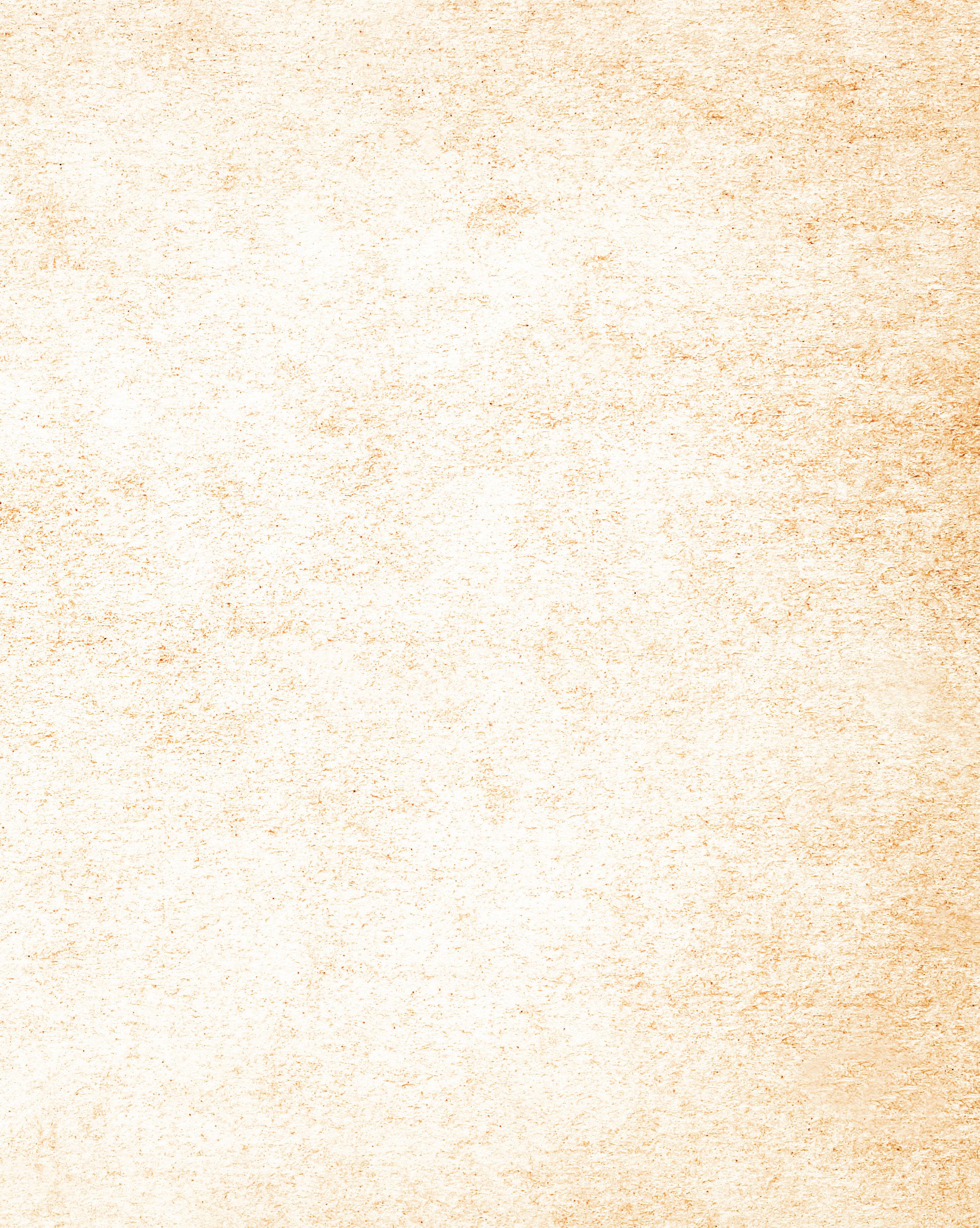
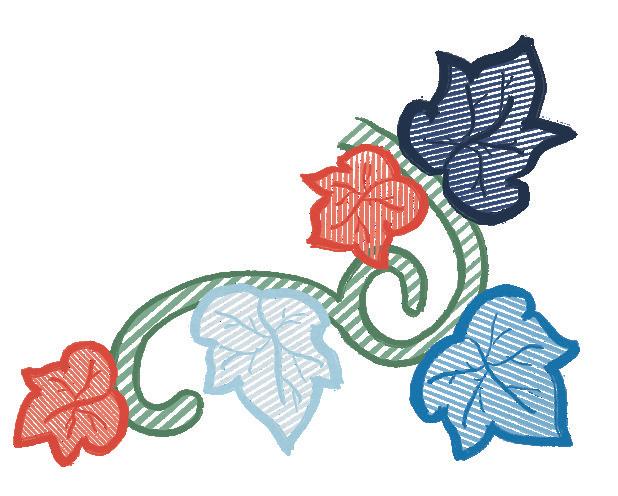
MOVERS & QUAKERS
59
Ivy illustrations by Kristina Paggioli

Brooke Sietinsons MOVERS & QUAKERS 60
ON THE GRID
Emily Schapira, C’02, WG’09, CEO of the Philadelphia Energy Authority, is fighting climate change and creating thousands of local jobs along the way.
By Ava DiFabritiis
During her second year at Penn, Emily Schapira, C’02, WG’09, puzzled out her ideas about social impact in a seminar called Community Economic Development.
“That was first place that I thought deeply about my role in the universe,” she says of the class, taught by Andrew Lamas of the Urban Studies Program. “Not every space is for me, because the people who own that space may not want or need me there. I learned to not only respect the local knowledge ingrained in communities all over—especially here in Philly—but to look for my role. What can I uniquely do that is most helpful?”
She would revisit that question in 2015, when then Philadelphia City Council President Darrell Clarke approached her with one of his own: Is there something we can do with energy and jobs?
By then, Schapira was a firm believer in the untapped potential of the city’s energy sector. Through advocacy for low-income home energy programs and stints in corporate sustainability at Wharton, Verizon, and Intel, she learned the lay of the land. In 2011, she was appointed to the Philadelphia Energy Authority (PEA) board, tasked with helping the city advance its sustainability ambitions. And with her degrees from Penn, she had the business know-how to make it happen. She told Clarke yes.
Her idea centered on the tandem goals of harnessing Philadelphia’s unique energy landscape and designing equitable programming that brings low-income residents into the fold and out of poverty. “Climate change is everybody’s problem.
It affects low-income communities the hardest, and they are the least equipped to deal with the consequences,” says Schapira, now PEA’s president and CEO. “Working with historically disinvested communities is not an afterthought—it’s the first thought. Those are the folks who will lead the revolution.”
She returned to Clarke with a bold vision, now known as the Philadelphia Energy Campaign, a 10-year plan to invest $1 billion in clean energy projects and create 10,000 jobs. The campaign would target city-owned buildings, public schools, low-income housing, and small businesses. Council greenlighted her proposal in 2016. She joined PEA full time and got to work.
Seven years in, the work is ahead of schedule with 7,600 jobs created and $904 million in public and private funding invested. At the Philadelphia Museum of Art, the top energy user among city-owned buildings, PEA-facilitated system upgrades have reduced electricity use by 23 percent. A project to convert all 140,000 city streetlights to LEDs is underway, and a rural Pennsylvania solar plant is contracted to power 22 percent of Philadelphia municipal buildings. Workforce development programs are preparing Philadelphia high schoolers and adults to do the electrical, HVAC, and solar installations required for these projects.
But Schapira is proudest of helping city residents access clean energy in their homes. “Consumer programs are near and dear to my heart,” she says, thinking of her first job after Penn, at the Public Interest Research Group. An international
relations and urban studies major, Schapira credits her liberal arts education with enabling her to jump into what turned out to be a transformative experience. Rather than lobbying or writing reports, Schapira directed a co-op that obtains discounted home heating oil for low-income residents.
Each of her five winters on the job, her voicemail overflowed with requests. “People’s teeth were chattering inside their homes,” she remembers. “They had a hole in their roof, or they had a drafty home or other major issues that required so much heating oil.”
PEA’s consumer programs like Built to Last and Solarize Philly are designed with this in mind. Leveraging partnerships with organizations that offer home repair assistance, Built to Last coordinates streamlined, holistic home improvements for lowand moderate-income Philadelphians. “In the end,” she says, “we’re left with a home that is not just band-aided for a specific problem, but safe, healthy, and preserved as affordable housing for that family to create generational wealth.” Solarize Philly is now the largest solar marketplace of its kind in the country, with more than 2,700 households served, almost half of which are low and moderate income.
“From the first moment of my career, I was looking for ways to solve the equity problem,” Schapira says. “I think about that every day, and I’m proud to have real solutions that serve our communities.”
Ava DiFabritiis, C’13, associate director of stewardship for Penn Arts & Sciences, is a frequent contributor to Omnia.
SPRING/SUMMER 2024
MOVERS & QUAKERS
61
Origin Stories: Ayako Kano
The path the scholar of Japanese studies took from Japan—by way of Germany and New York—to Penn.
Ayako Kano, a professor in the Department of East Asian Languages and Civilizations, studies the intersection of gender, performance, and politics, as well as Japanese cultural history from the late-19th century to the present. But her trajectory wasn’t a straight line. Inspired by the lessons she gained from her grandfather, a pharmacist, today she works to pass on the arts and craft of academic life.
Listen as Kano describes her story.


Brooke Sietinsons INSOMNIA
AS
TOLD TO BROOKE SIETINSONS
62
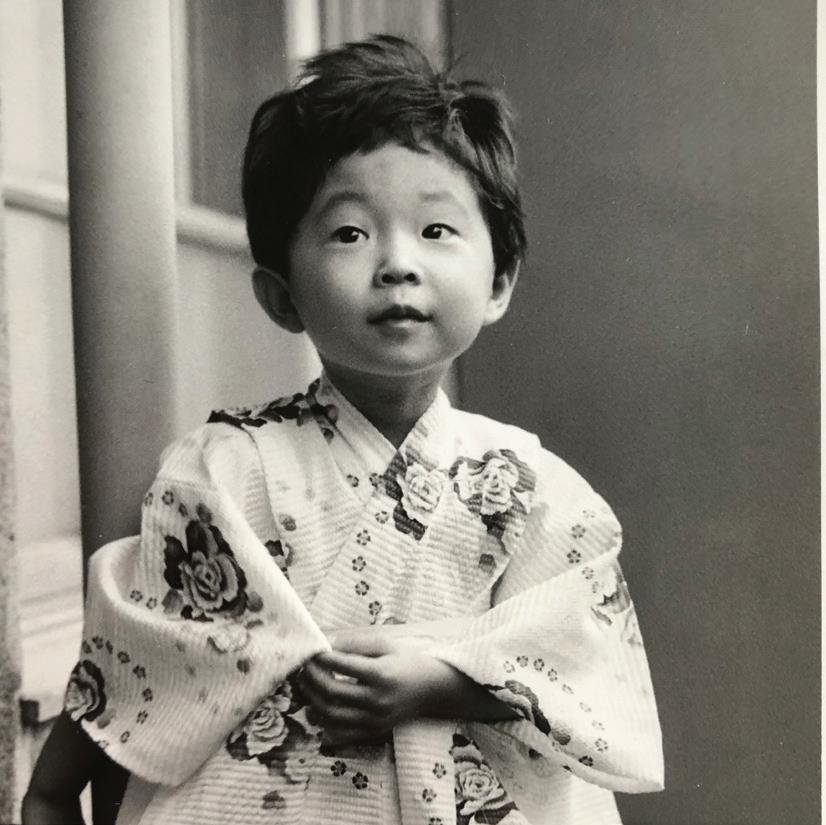

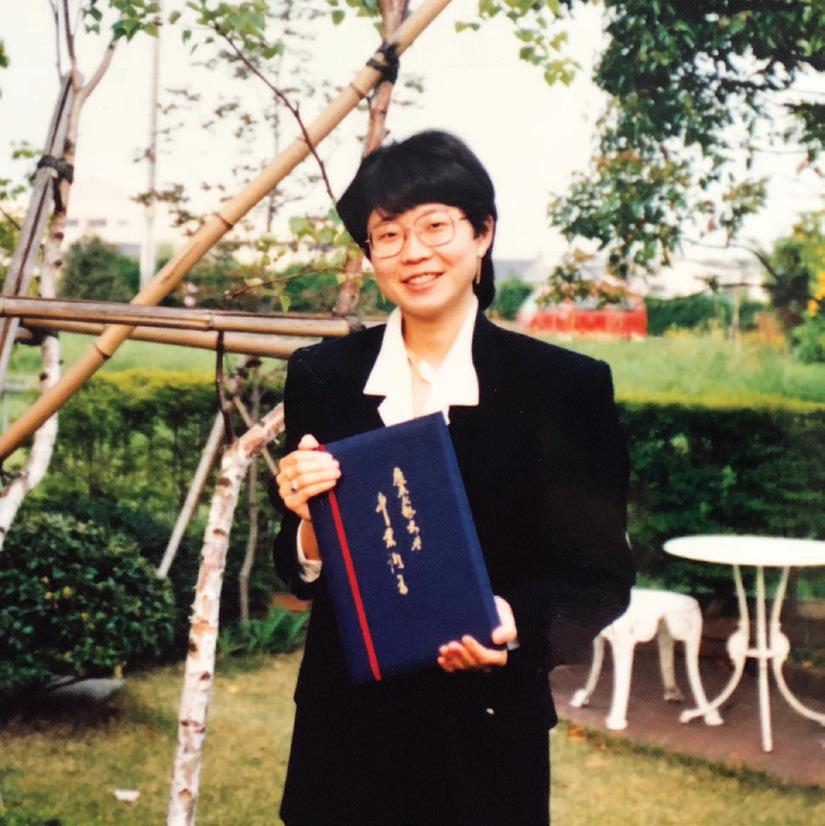

Childhood
I was born in Tokyo, Japan. At the age of three, our family moved to Germany, and I lived there until I was eight. The German Lutheran nuns taught me to read and write. After that we went back to Tokyo, then to Yokohama, Japan. I spent three years of high school in the suburbs of New York. Studying and excelling in academics has always been a way for me to try to belong.

College Years and Beyond
Having chosen English as my college major, I still had a lot of leeway in what courses to take. I was interested in music. I was interested in drama, in theater. By the time I applied for graduate school, I knew I wanted to do something “comparative” without really knowing what that meant. I was lucky to land at Cornell, a place where Japanese studies was done in a comparative way. There, I found it easy to bridge being a comparative literature Ph.D. and finding a strong focus in Japanese studies.
Familial Influence
My grandfather was a pharmacist. One of the few items I have from him is a notebook. He copied a botany textbook; it’s how people studied back then. At the beginning of the notebook his writing is kind of tentative, but by the end it’s so much more confident and learned, embodied language. That’s something that made an impression on me early on.
Academic Life
I started at Penn in 1995. I was hired to teach modern Japanese literature, but I found that I also enjoyed teaching theater. I enjoyed gender studies, and I started teaching film as well. I’m teaching a graduate seminar now where we spend the last hour of each week talking about the arts and craft of academic life. I’m a big believer in passing on knowhow, the tips and tricks of the trade, so to speak, but also thinking more philosophically about what it is that we do.
INSOMNIA
63
Photos courtesy of Ayako Kano
ONLINE CONTENT



PENN UNDERGRADS AND DECISION 2024 (VIDEO)
From helping with exit polling to vote count data collection, students in the Penn Program on Opinion Research and Election Studies (PORES) bring their skills to the NBC Decision Desk on election nights.
PATHWAYS: DAVID KEDEME, C’25 (VIDEO)
Kedeme came to Penn curious about the brain and deepened his interest in neuroscience through lab internships and coursework. A class on madness in Russian culture also played a part.
MEET THE VIPER CLASS OF 2024 (VIDEO)
From honing research interests and building relationships to Penn Electric Racing and SpaceX, graduating seniors in the Vagelos Integrated Program in Energy Research reflect on their experience.
OMNIA | ALL THINGS PENN ARTS & SCIENCES
Subscribe to the Omnia Podcast series on Apple iTunes, or wherever you get your podcasts, to automatically receive downloads of our most recent episodes, as well as previous audio features from Penn Arts & Sciences. In addition, the Penn Arts & Sciences Vimeo channel houses dozens of videos featuring faculty, students, and alums. OMNIA.SAS.UPENN.EDU
sure to visit Omnia online for multimedia content that covers all aspects of Penn Arts & Sciences research, including faculty, students, alums, and events. Below is just a small sampling of recent highlights.
Be
64

Most family trees that trace back hundreds of years are extensive. But 16 feet long unfurled? That’s the footprint of the Edward IV Roll, which was created in the early 1460s and has been at the Free Library of Philadelphia for more than 85 years. This medieval manuscript chronicles the genealogy of Yorkist king Edward IV, starting with Adam and Eve. For the past year, Emily Steiner, Rose Family Endowed Term Professor of English, and a team of graduate students—Emma Dyson in the Department of Classical Studies, and Noa Nikolsky and Ariel Bates in the Department of English—have been transcribing, translating, and interpreting the scroll, thanks to a grant from the Richard III Society American Branch. “These rolls are in Latin, and they are handwritten, often in a cramped style to fit the words into odd spaces,” Steiner says. There are both standard and non-standard abbreviations to contend with, in addition to deciphering what Steiner calls the document’s “propagandistic” intentions. “History gets massaged in these rolls,” she says. “It’s intriguing for the students to see how many different ways there are to record the past.” It’s been a labor of love, she adds. By fall 2024, the team’s translation will be fully digitized by Penn Libraries.
— MICHELE W. BERGER
Courtesy of the Free Library of Philadelphia (Lewis E 201)
LAST LOOK
University
3600
COLLEGE
COLLEGE

ChAlLeNgE












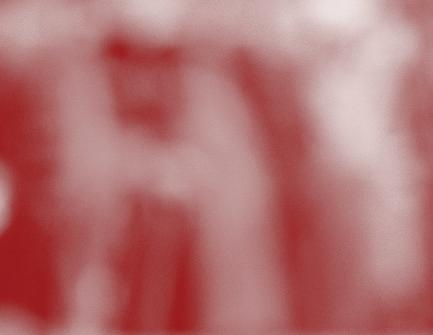






LaUnChInG PoTeNtIaL FuElInG DiScOvErY
Your generosity powers new discoveries, expands educational opportunities, and nurtures tomorrow’s leaders. This fiscal year end, your gift holds even more power thanks to a new giving challenge. If 165 donors make an annual gift before June 30, 2024, an additional $20,000 will be unlocked to propel our mission forward. ToGeThEr, wE cAn mAkE a dIfFeReNcE! Make your gift at www.sas.upenn.edu/gifts/annual. Non-Profit U.S. Postage PAID University of Pennsylvania
JoIn tHe
of Pennsylvania
of Arts & Sciences
School
Market Street, Suite 300
PA 19104-3284
Philadelphia,
OF ARTS & SCIENCES
DIVISION
GRADUATE
OF LIBERAL & PROFESSIONAL STUDIES Visit MyPenn, the Penn alumni community, at mypenn.upenn.edu


























































































































































































































































 Michele W. Berger, Editor
Michele W. Berger, Editor

























 By Jane Carroll
By Jane Carroll















































































































































































































 By Lauren Rebecca Thacker
By Lauren Rebecca Thacker




 Singleton
Singleton


























































































































